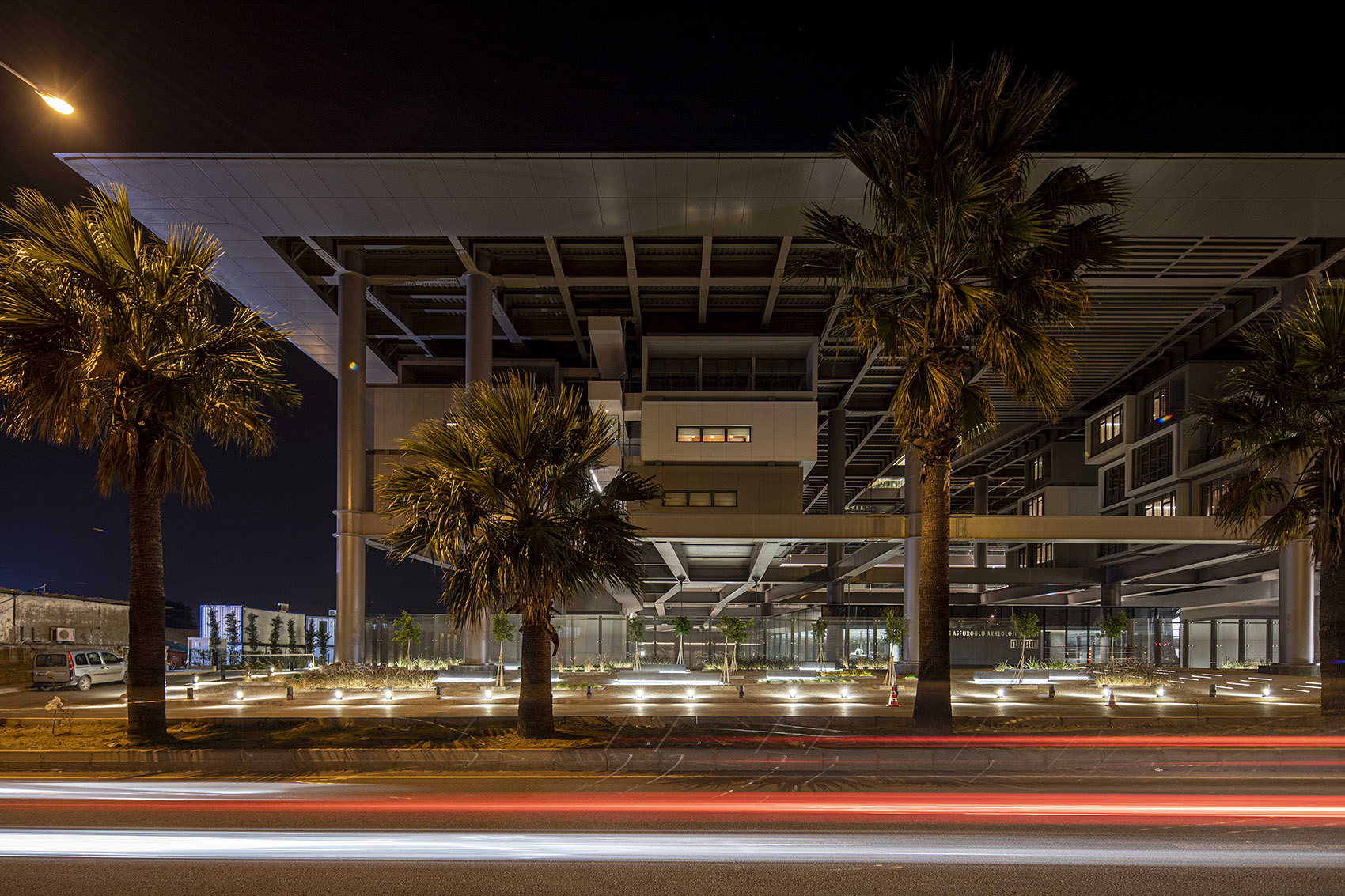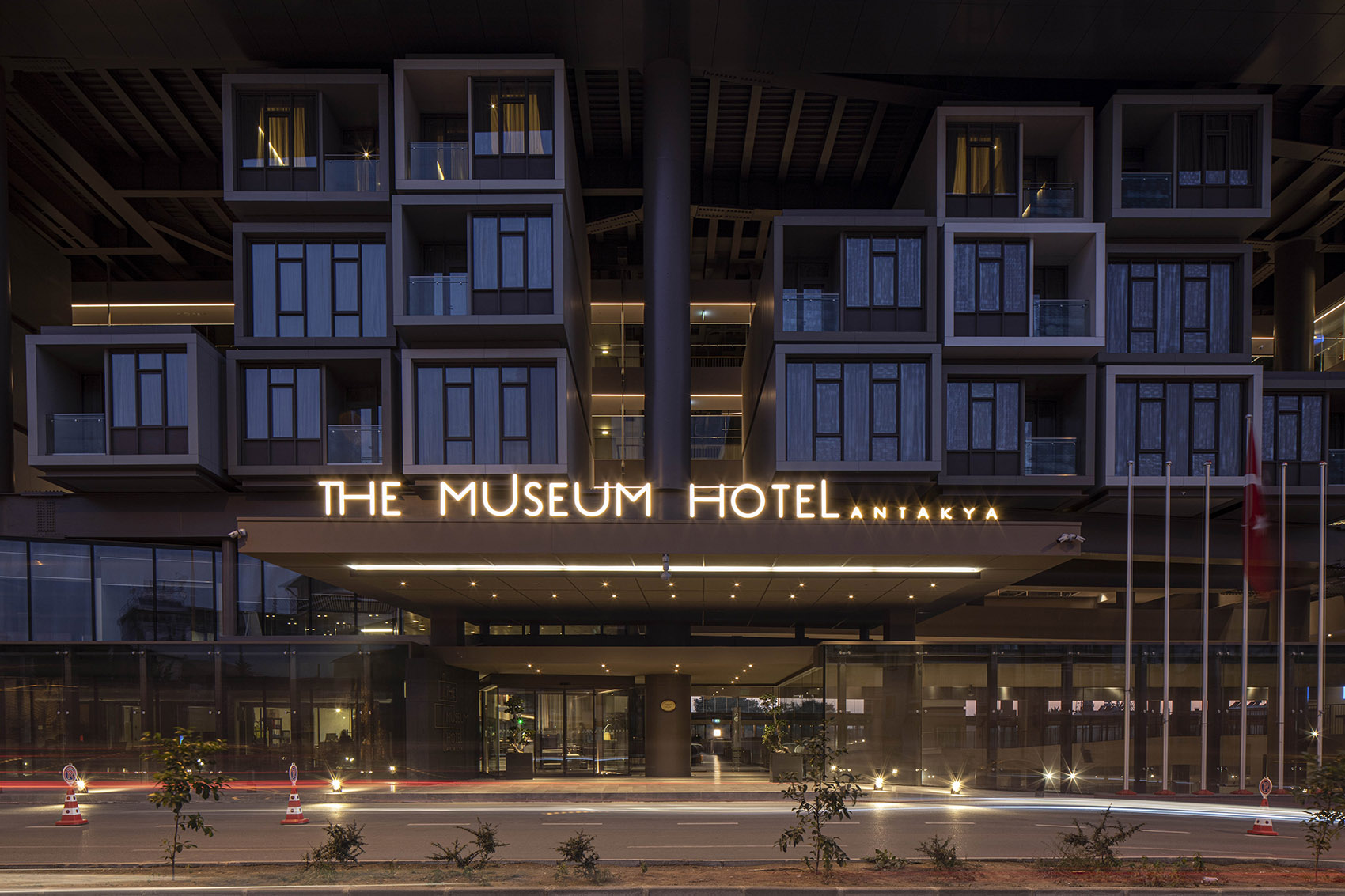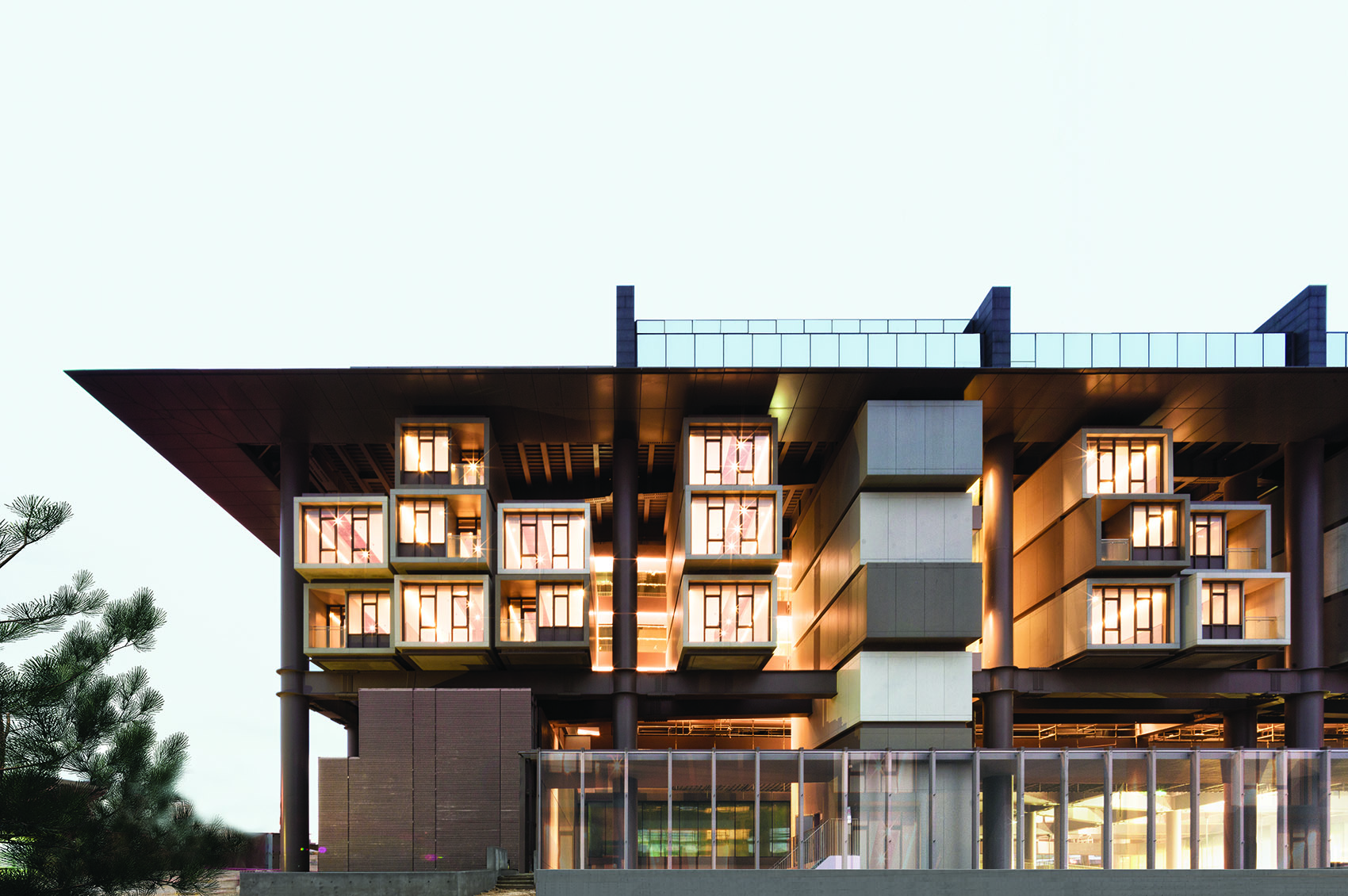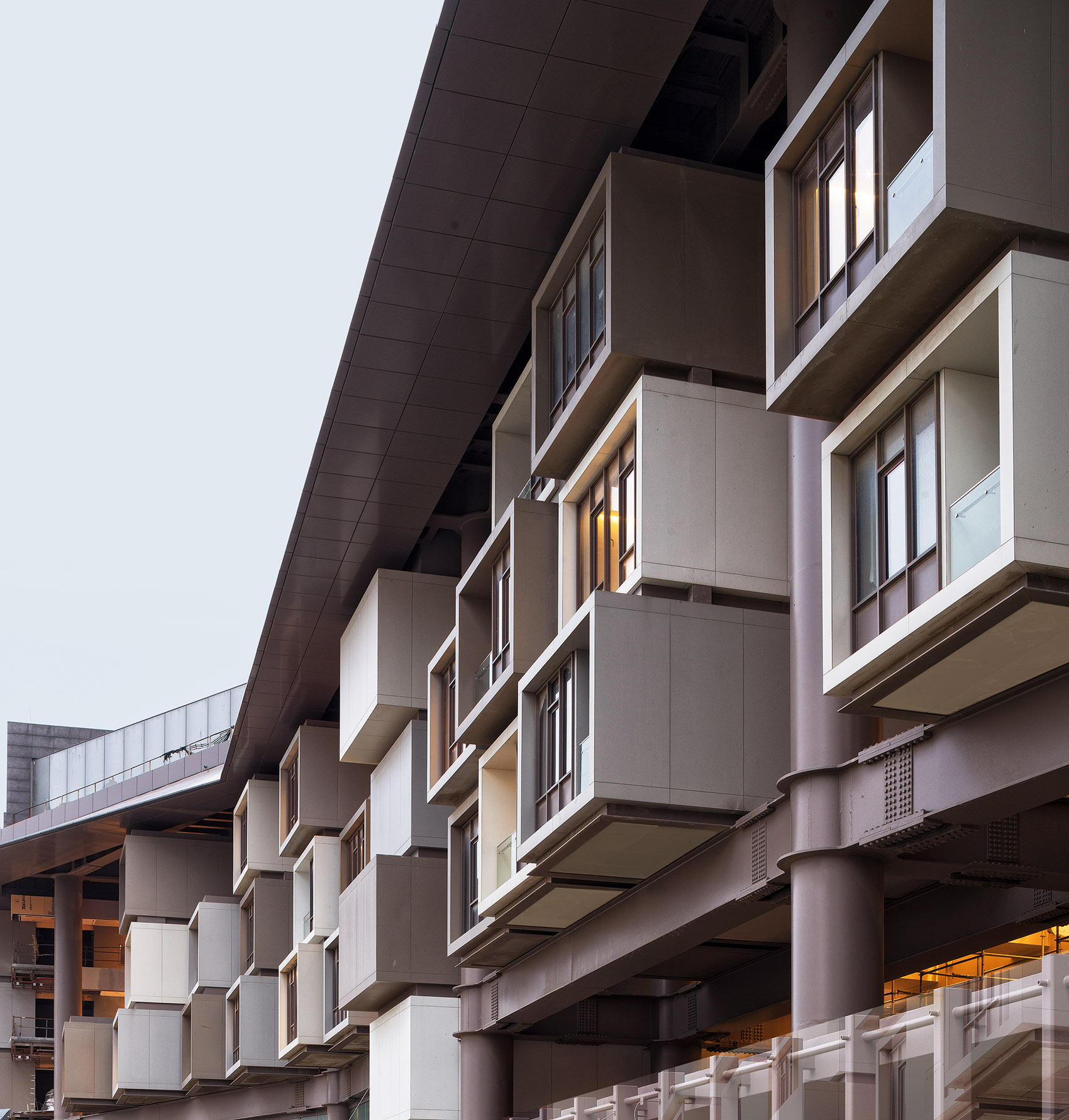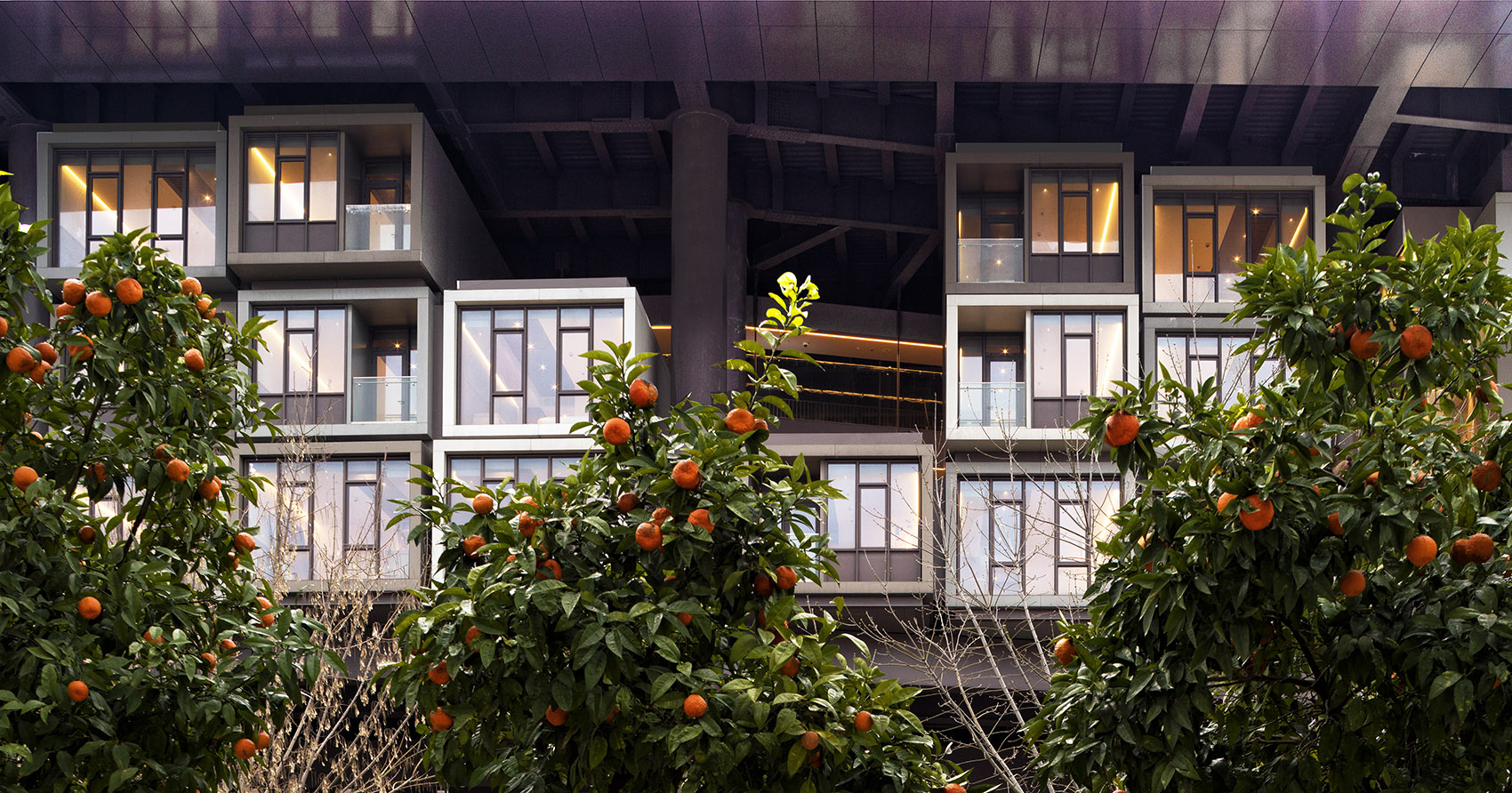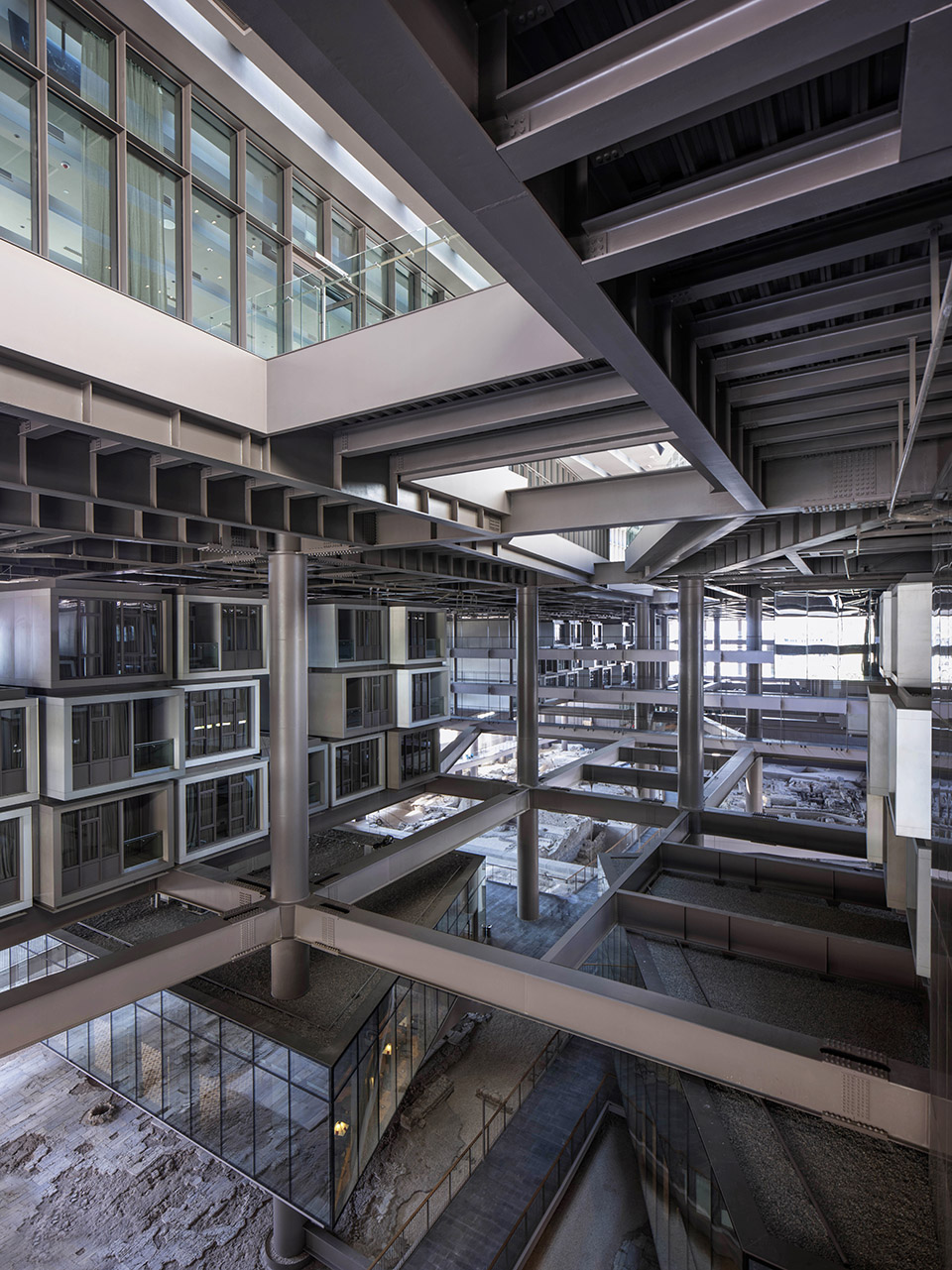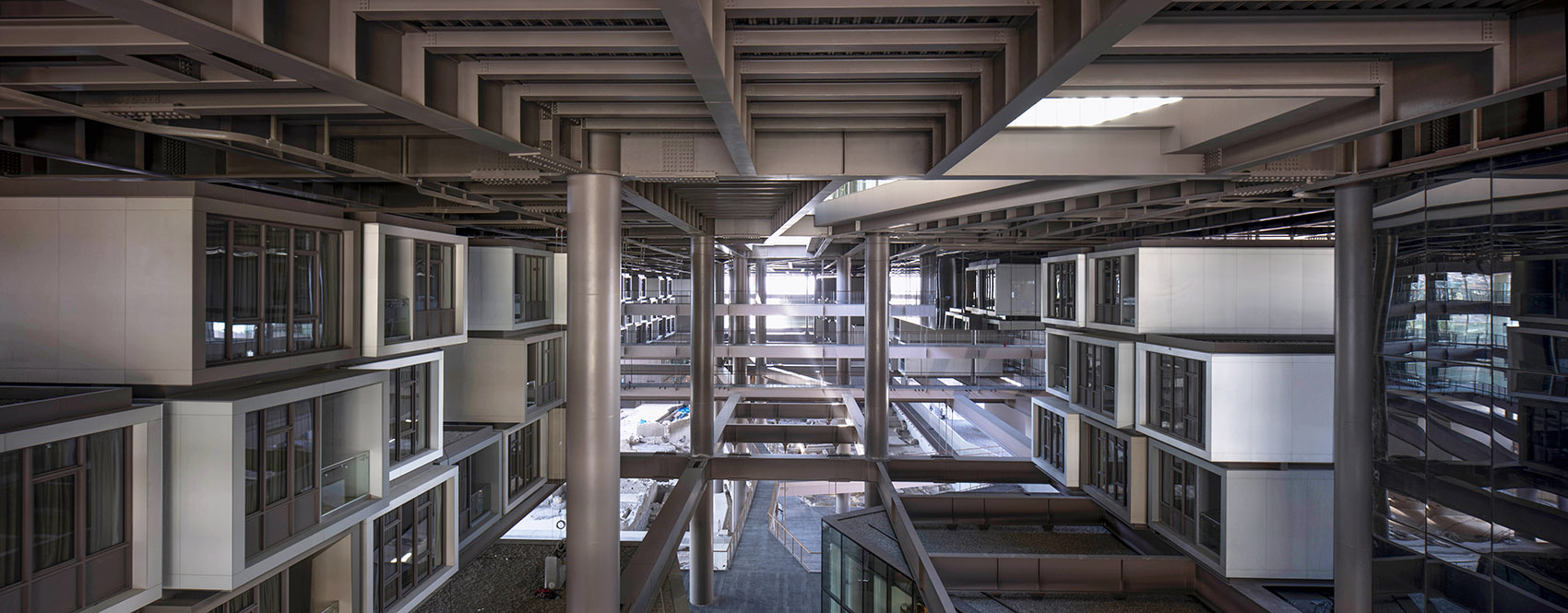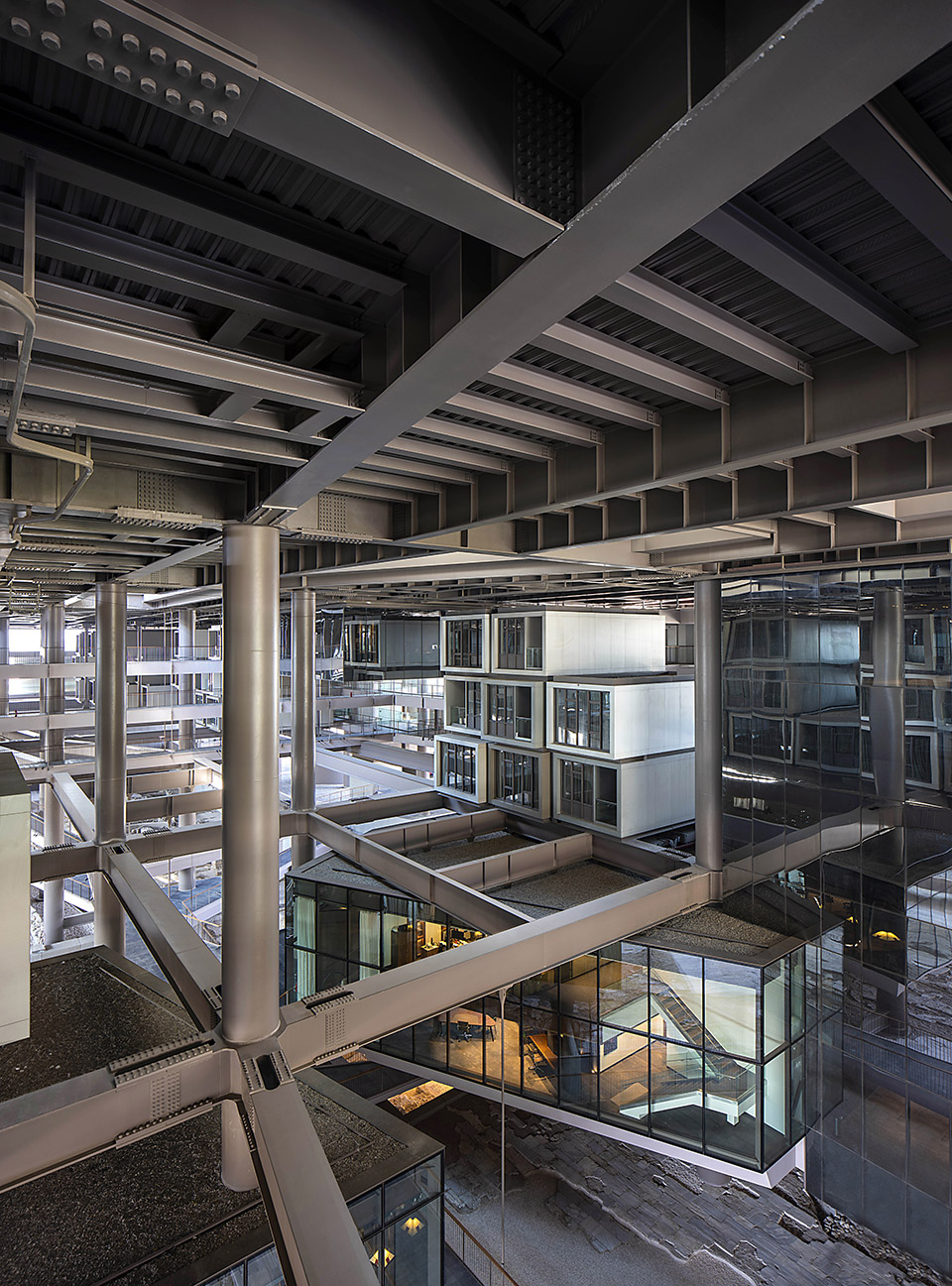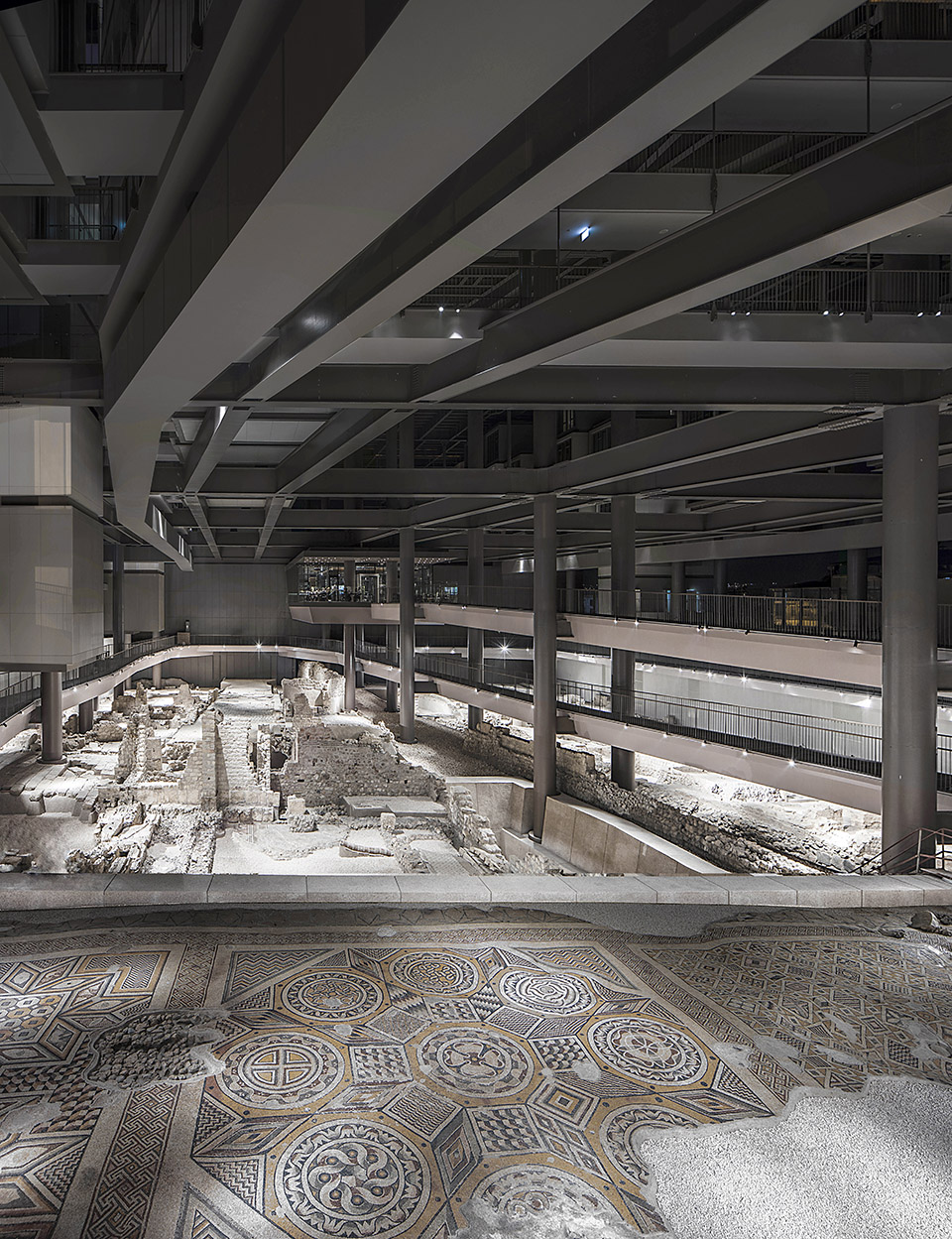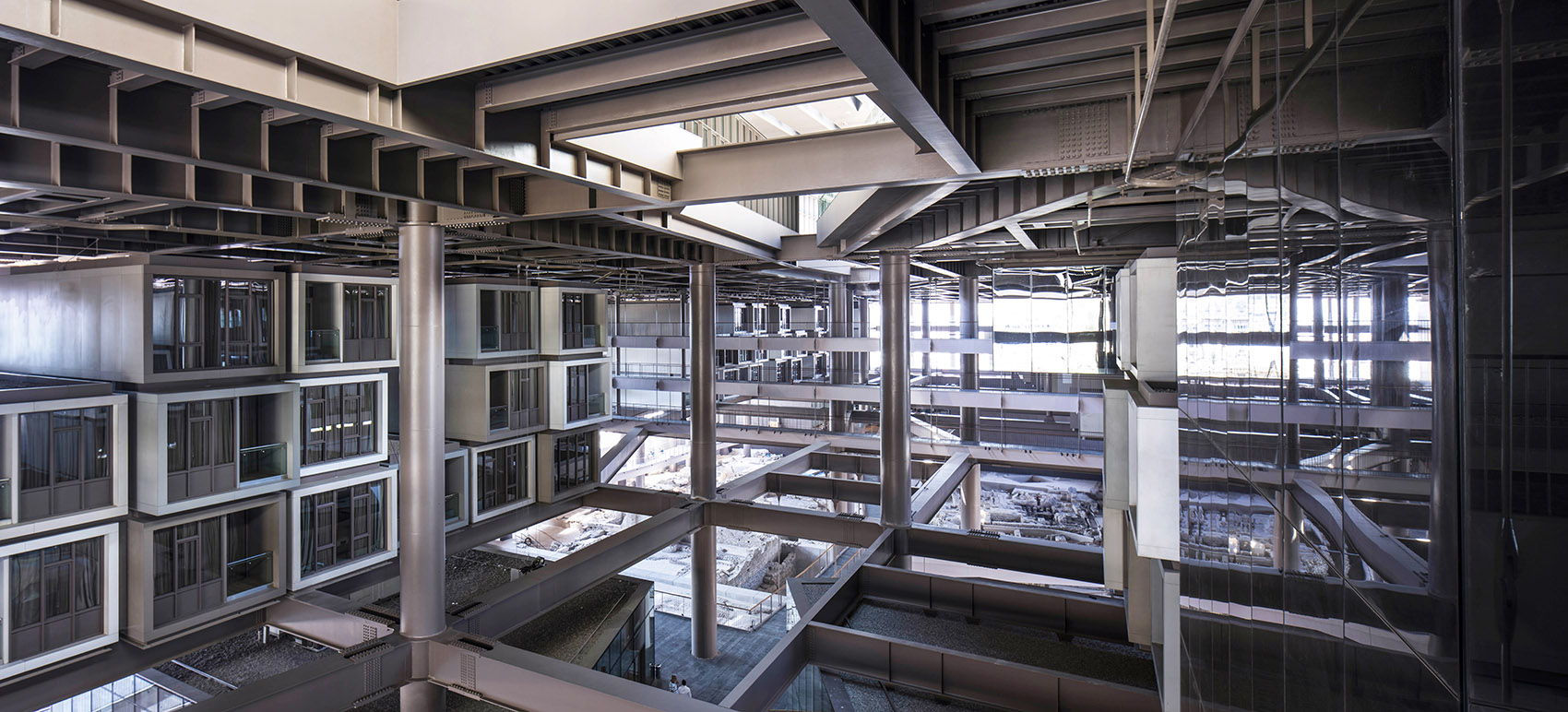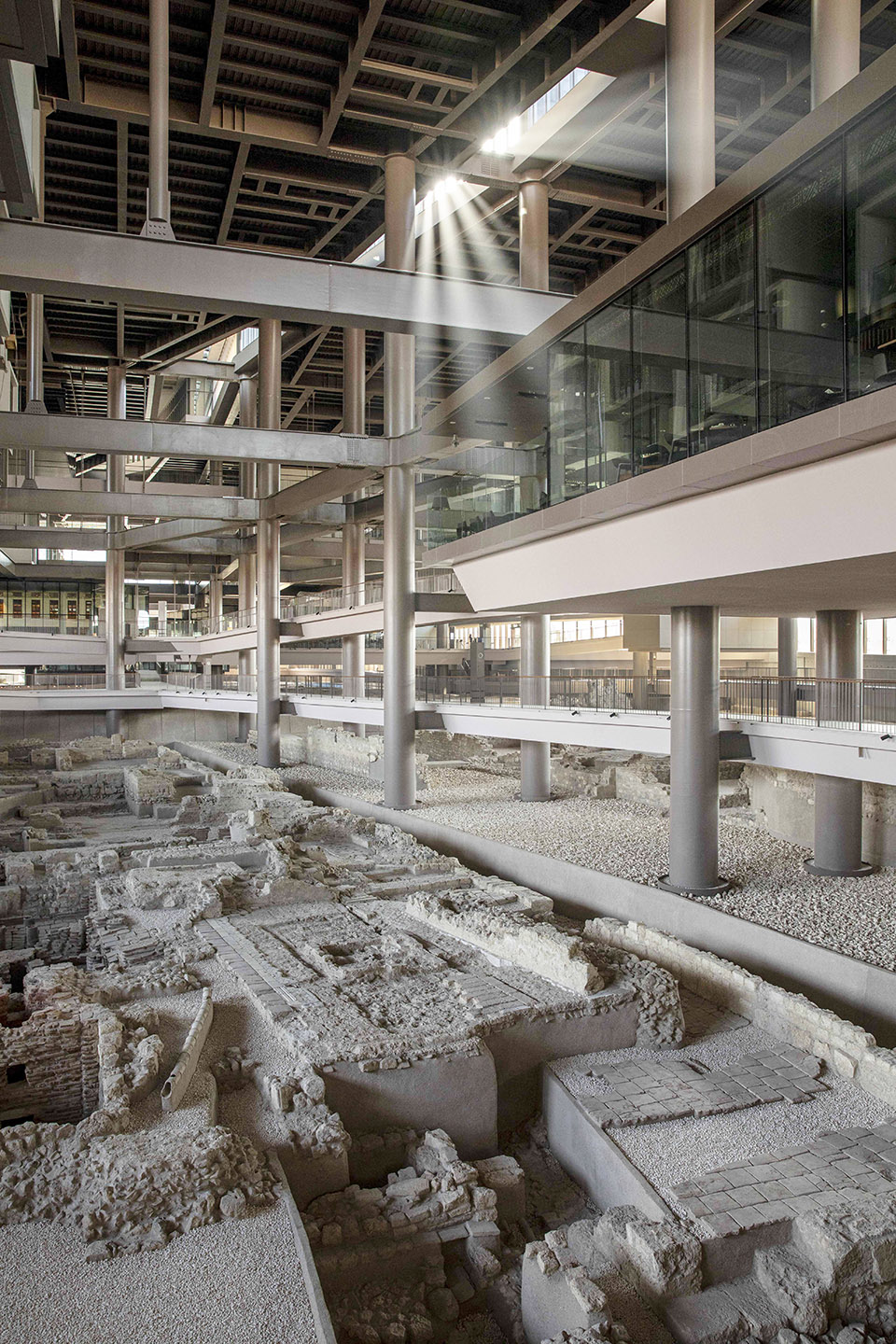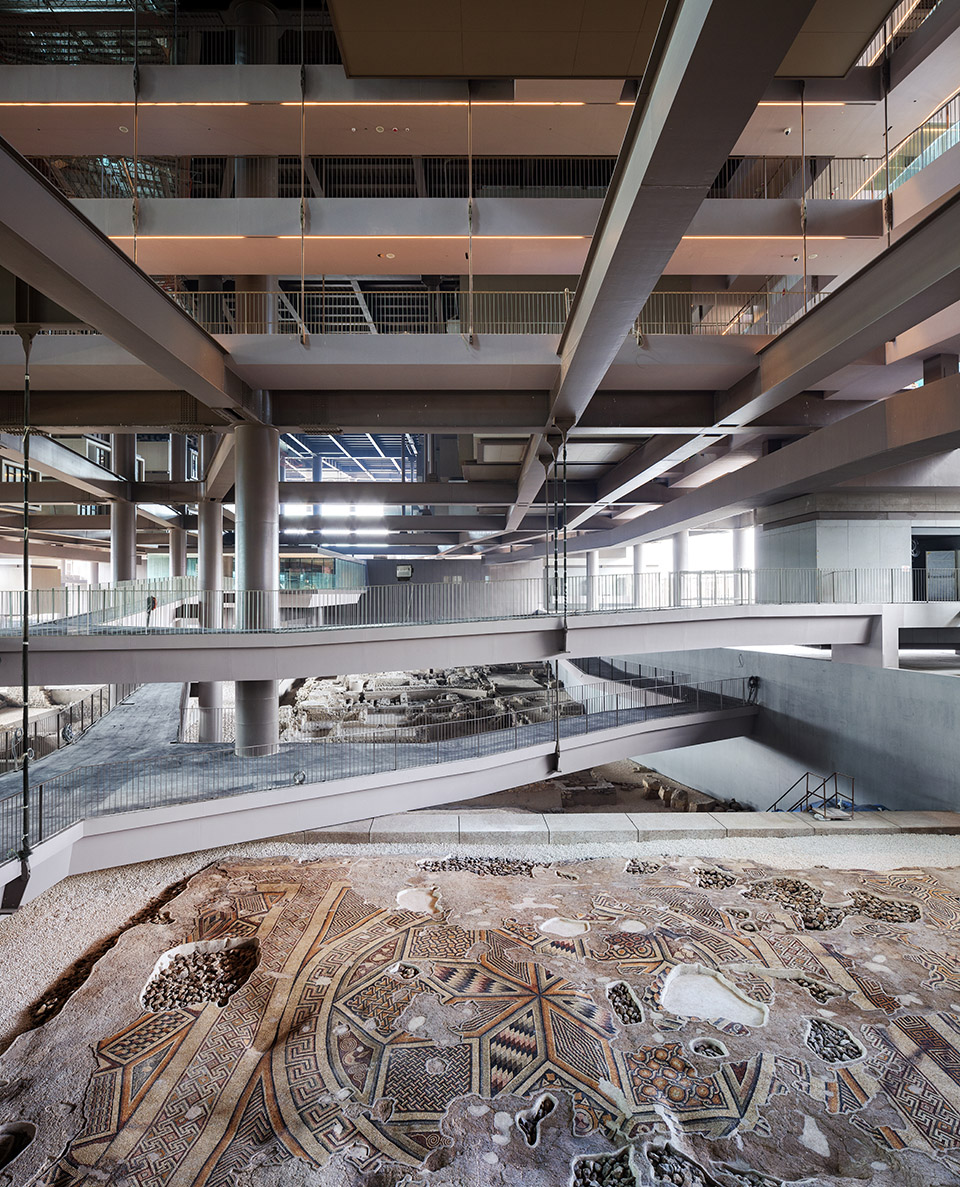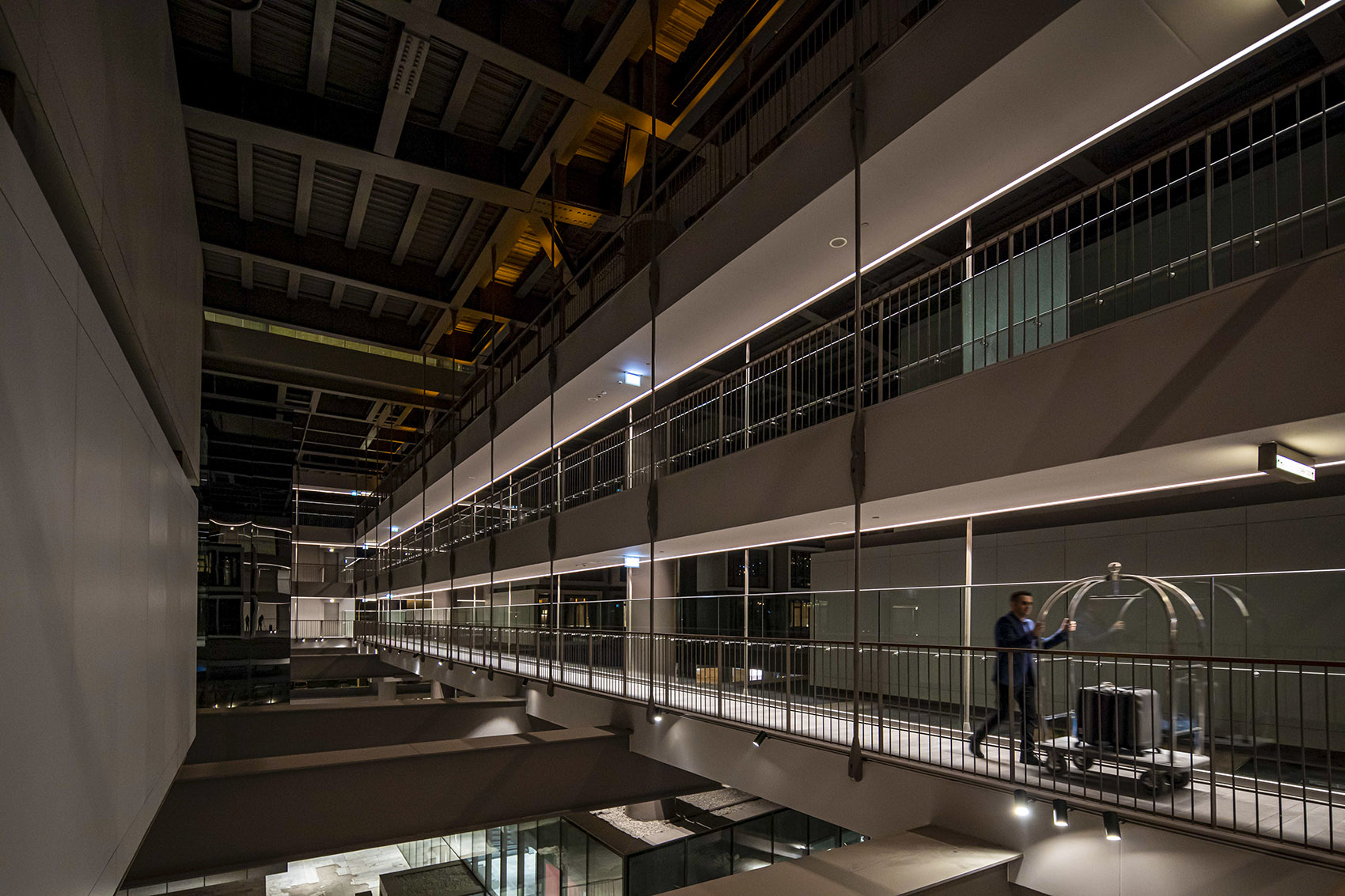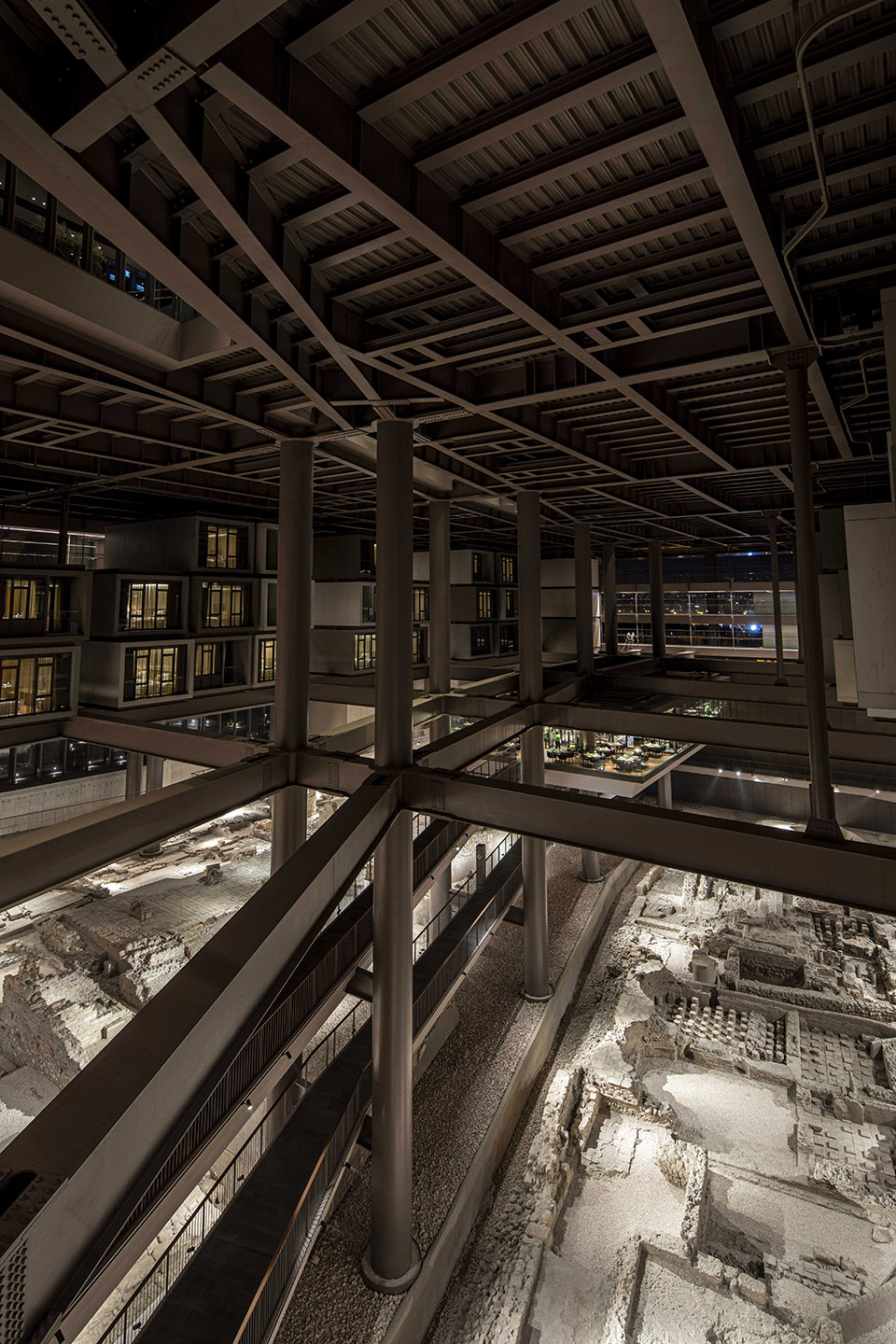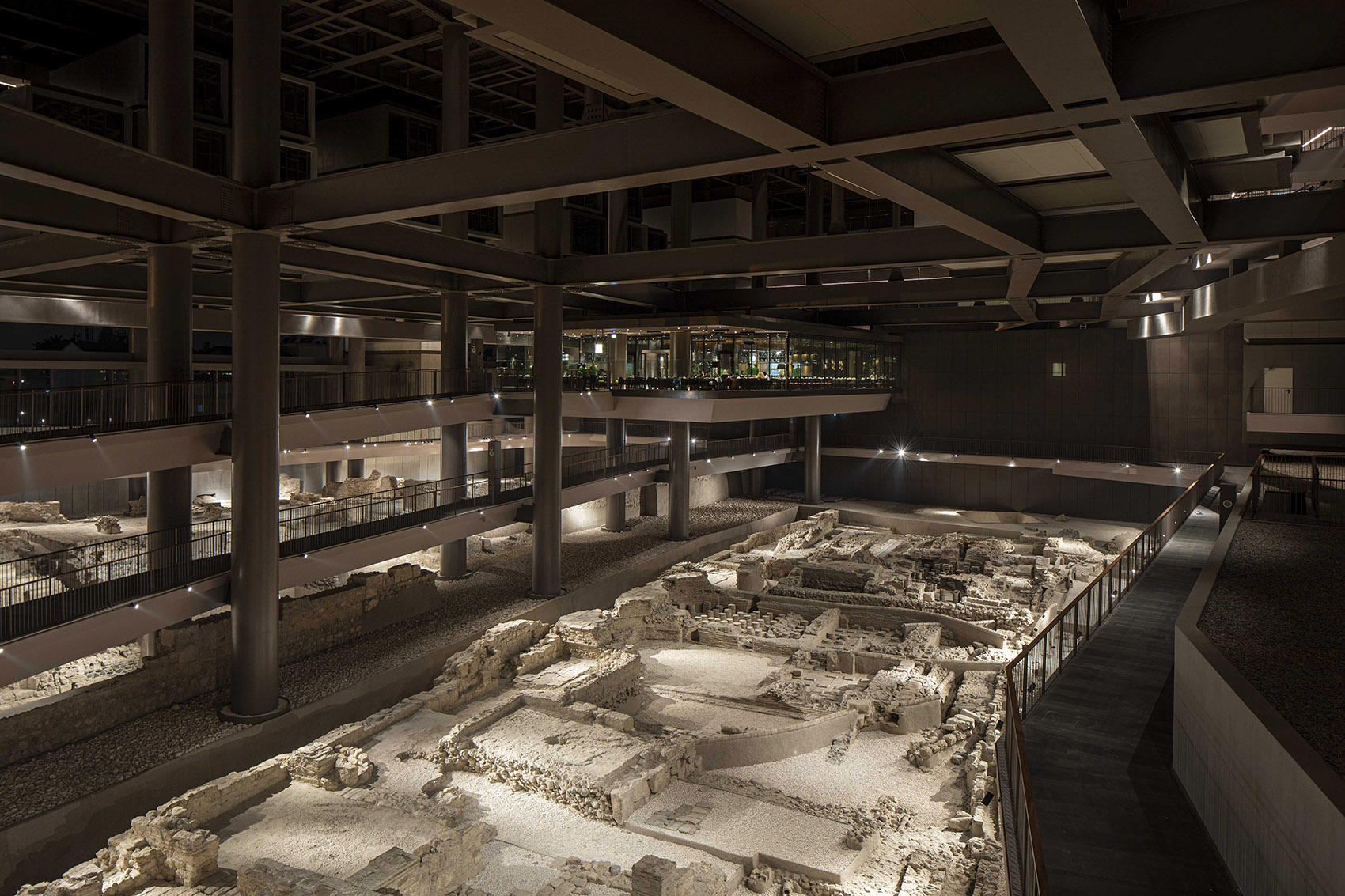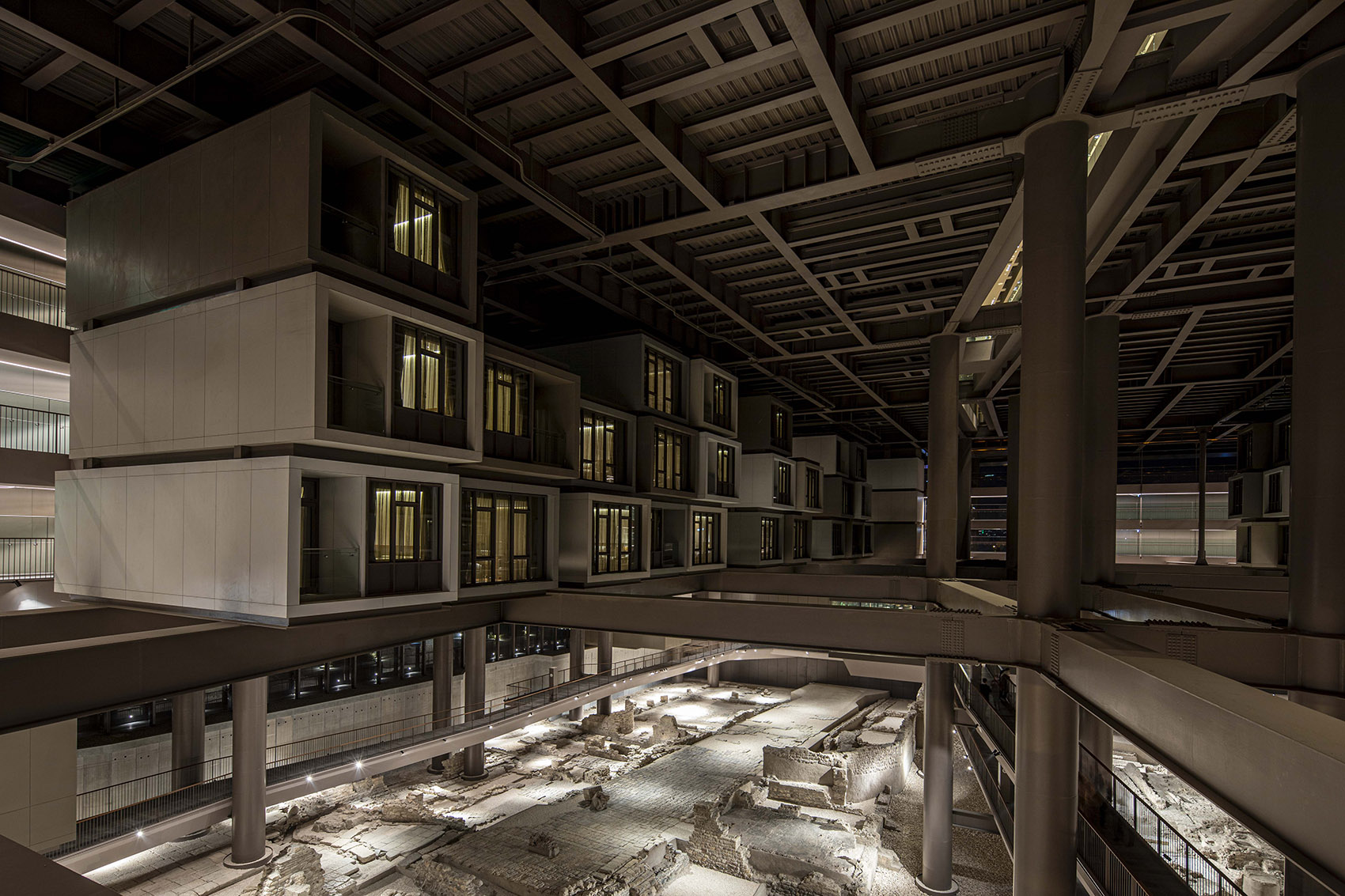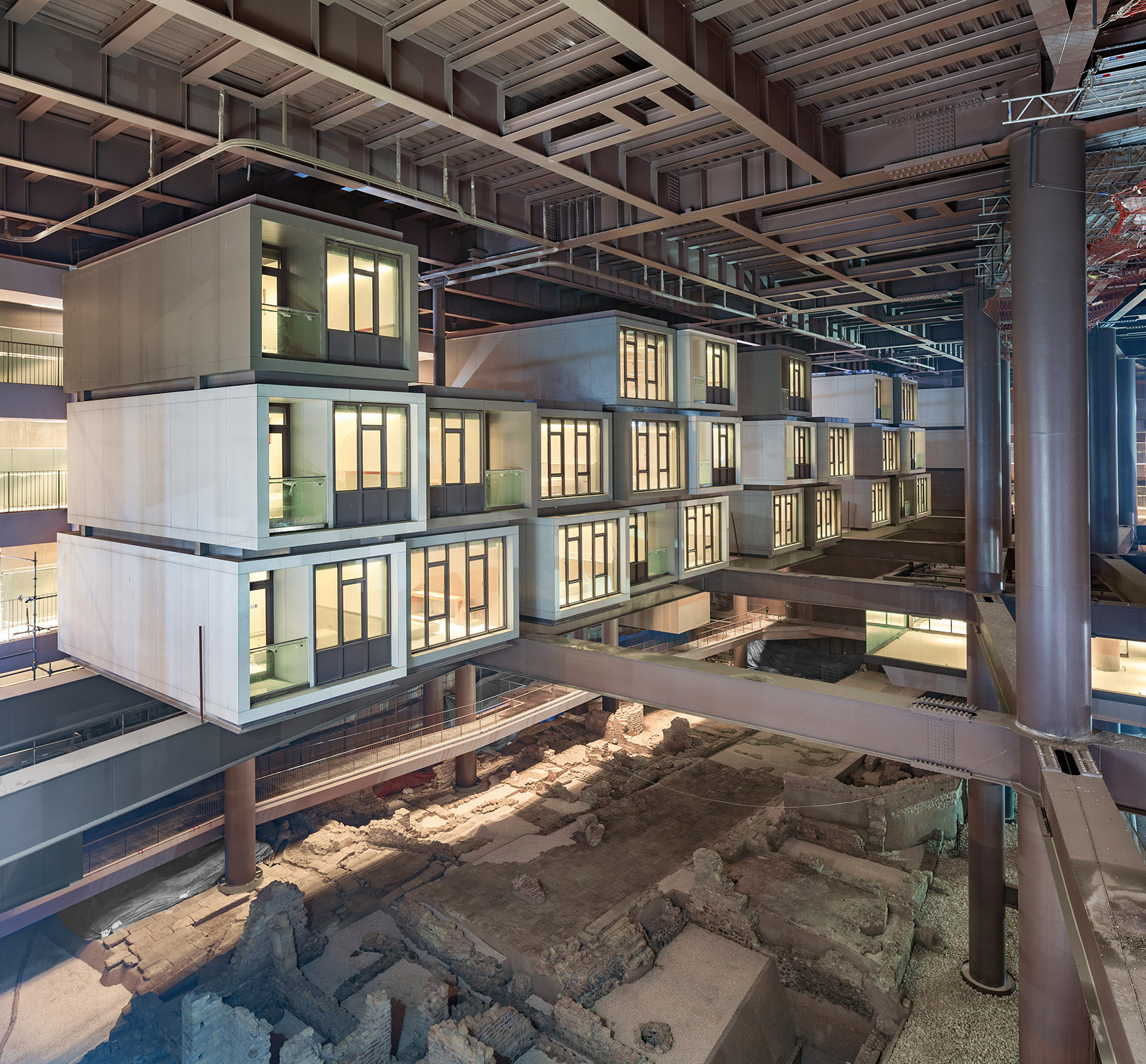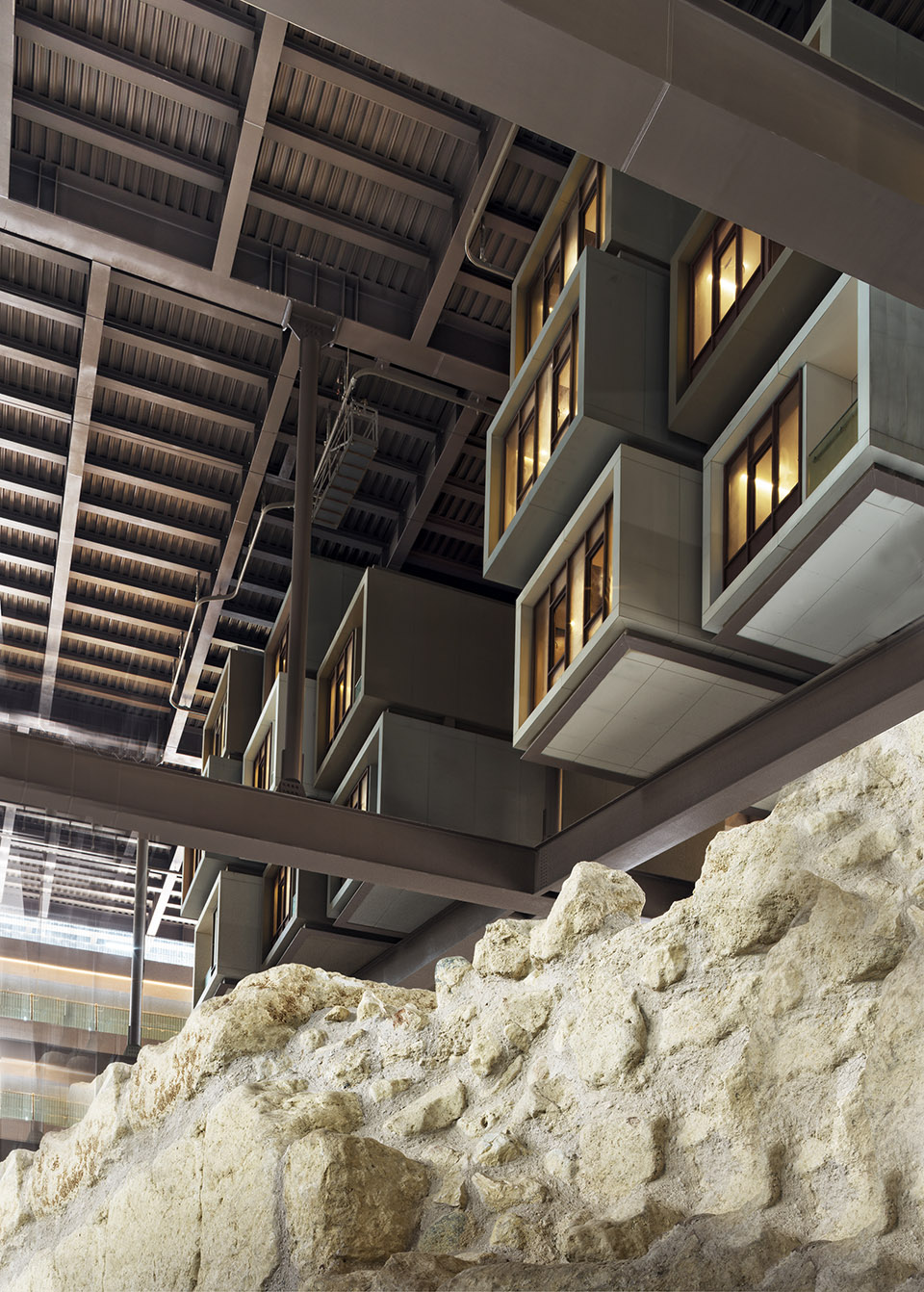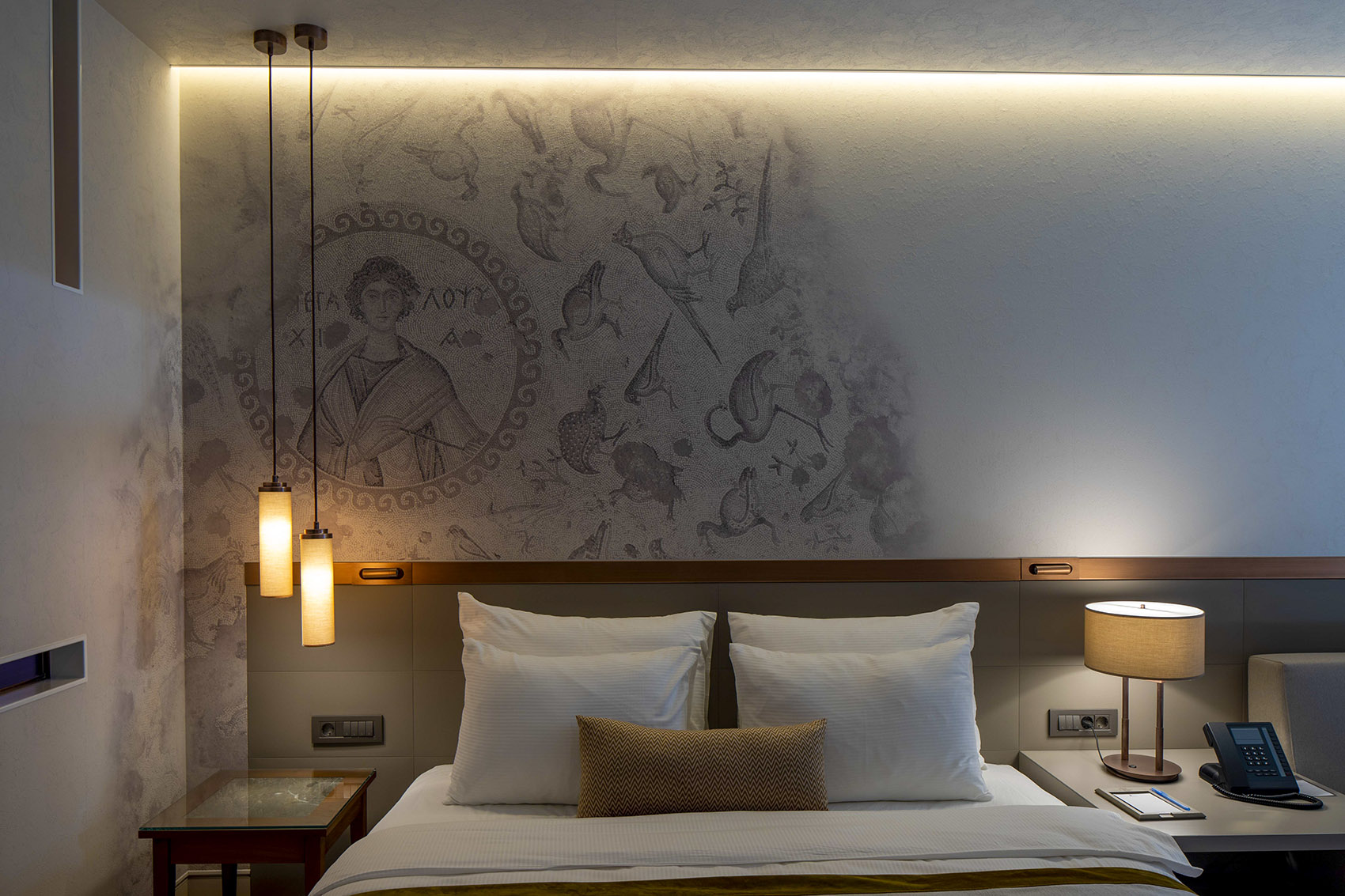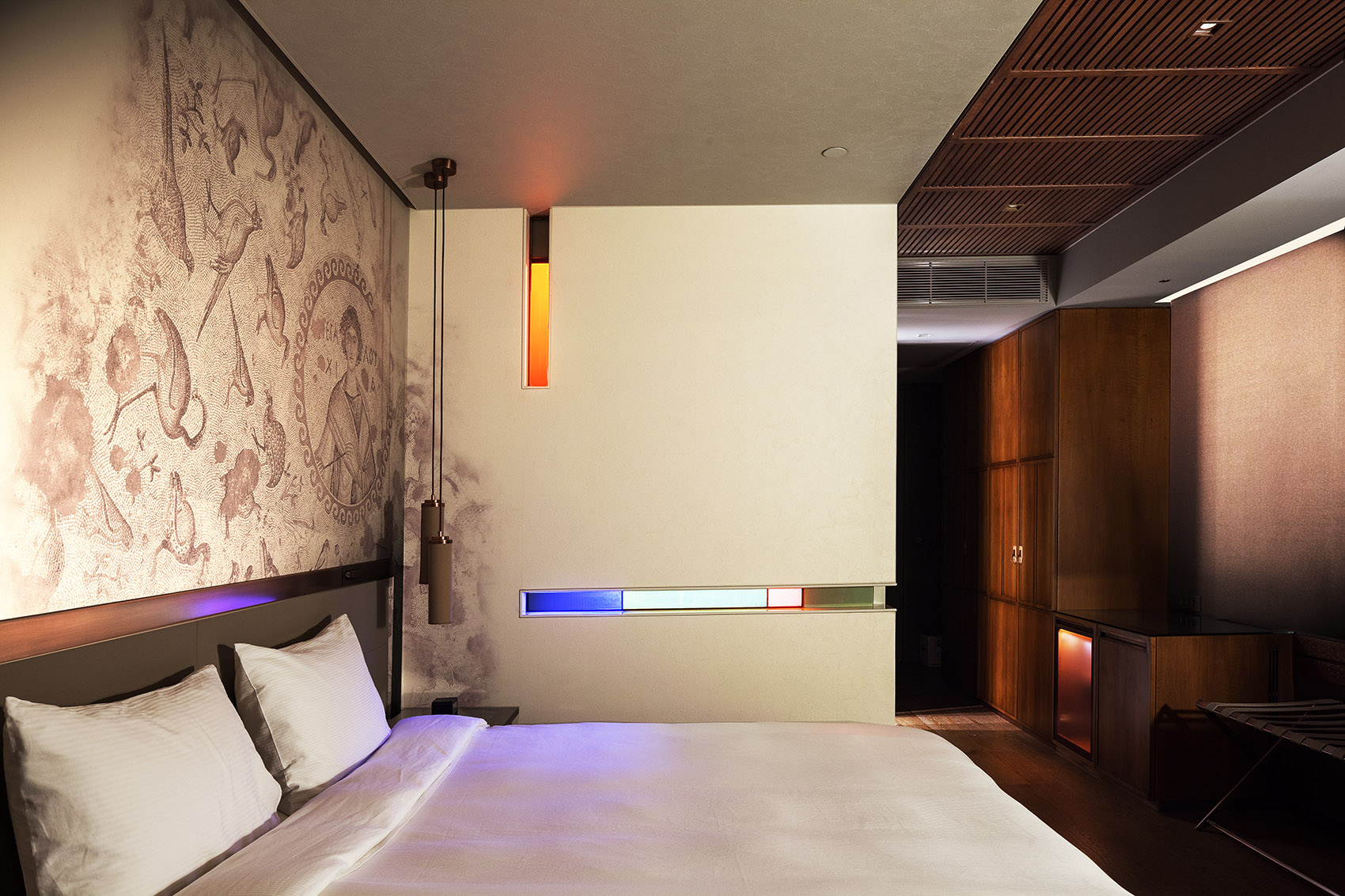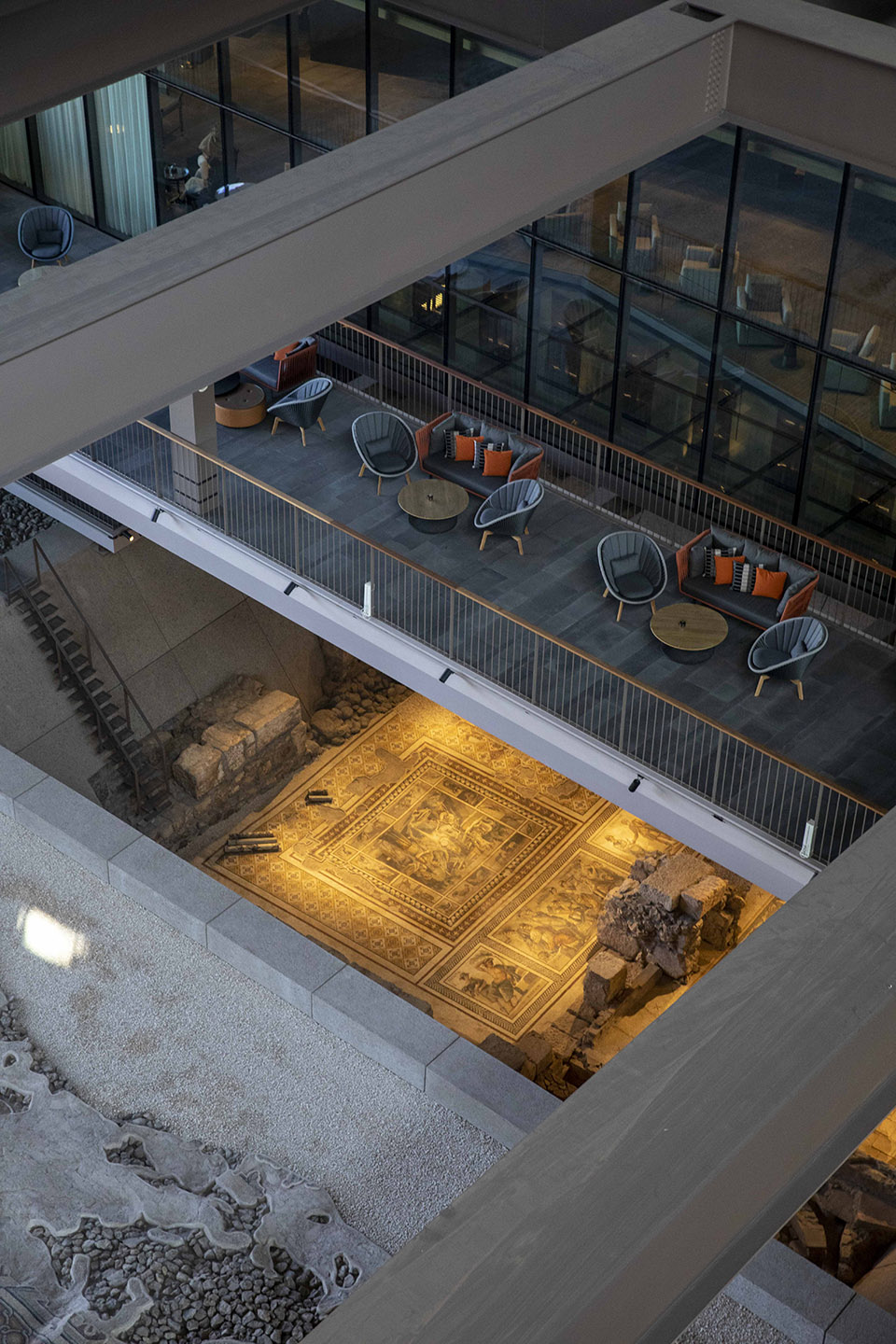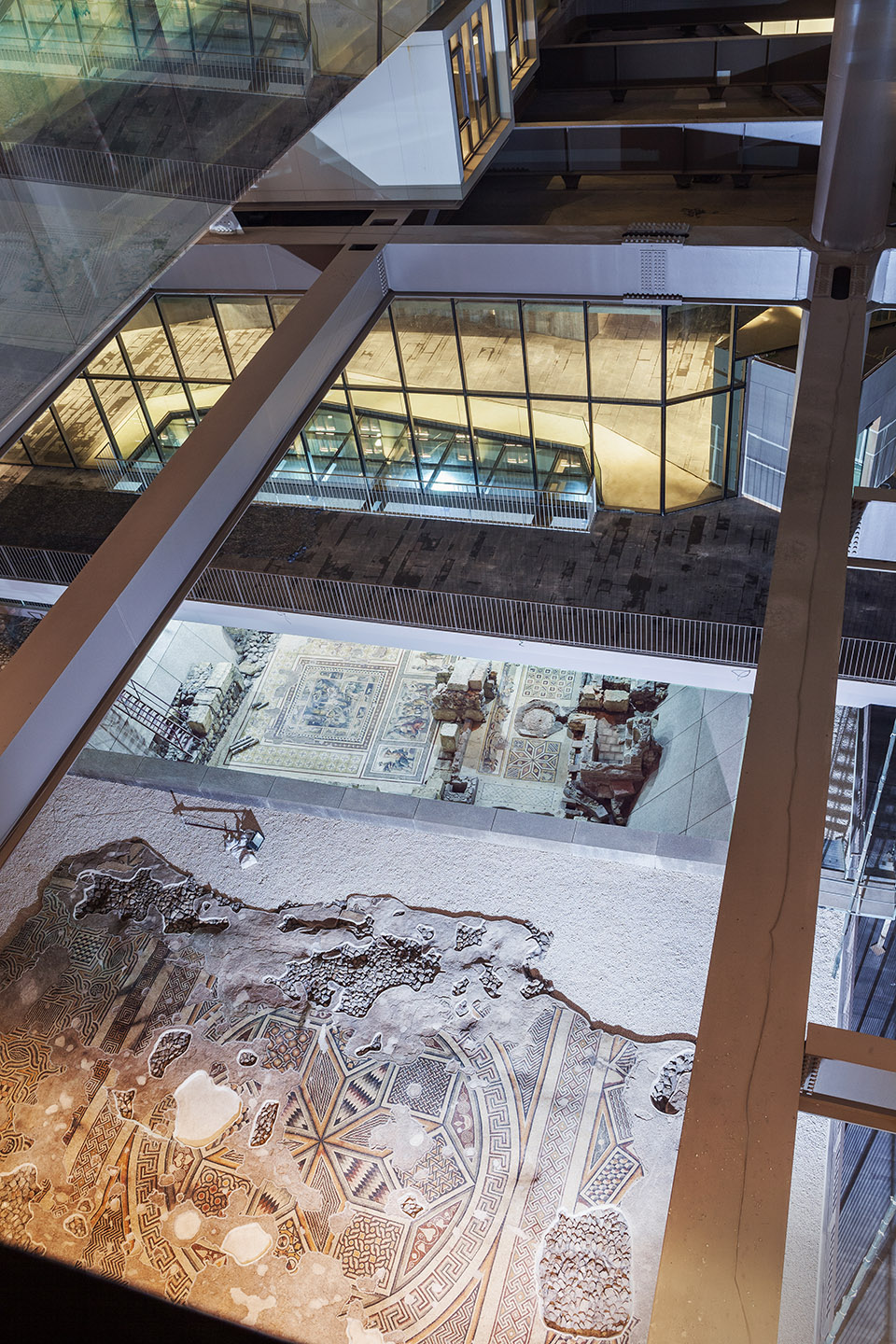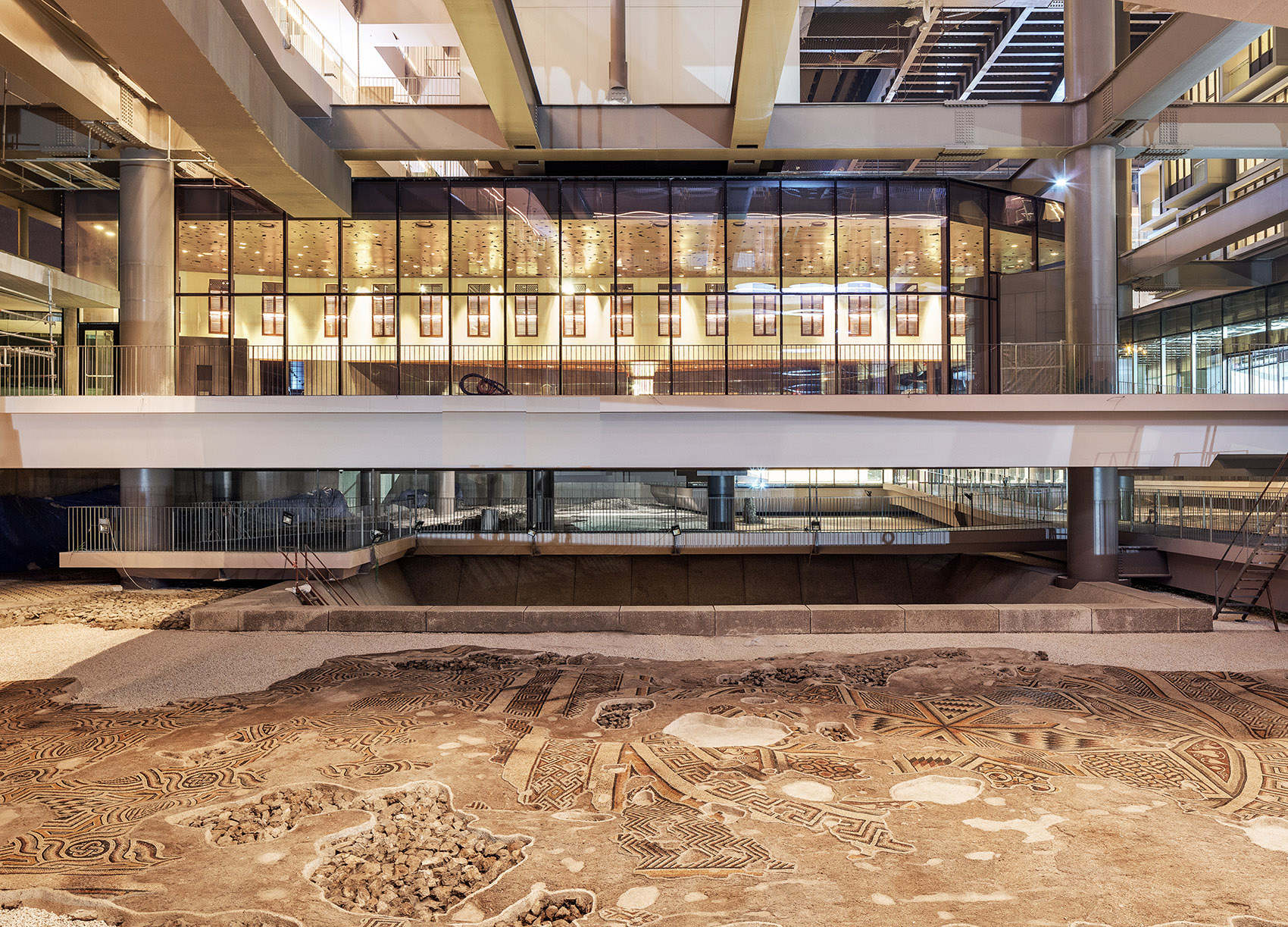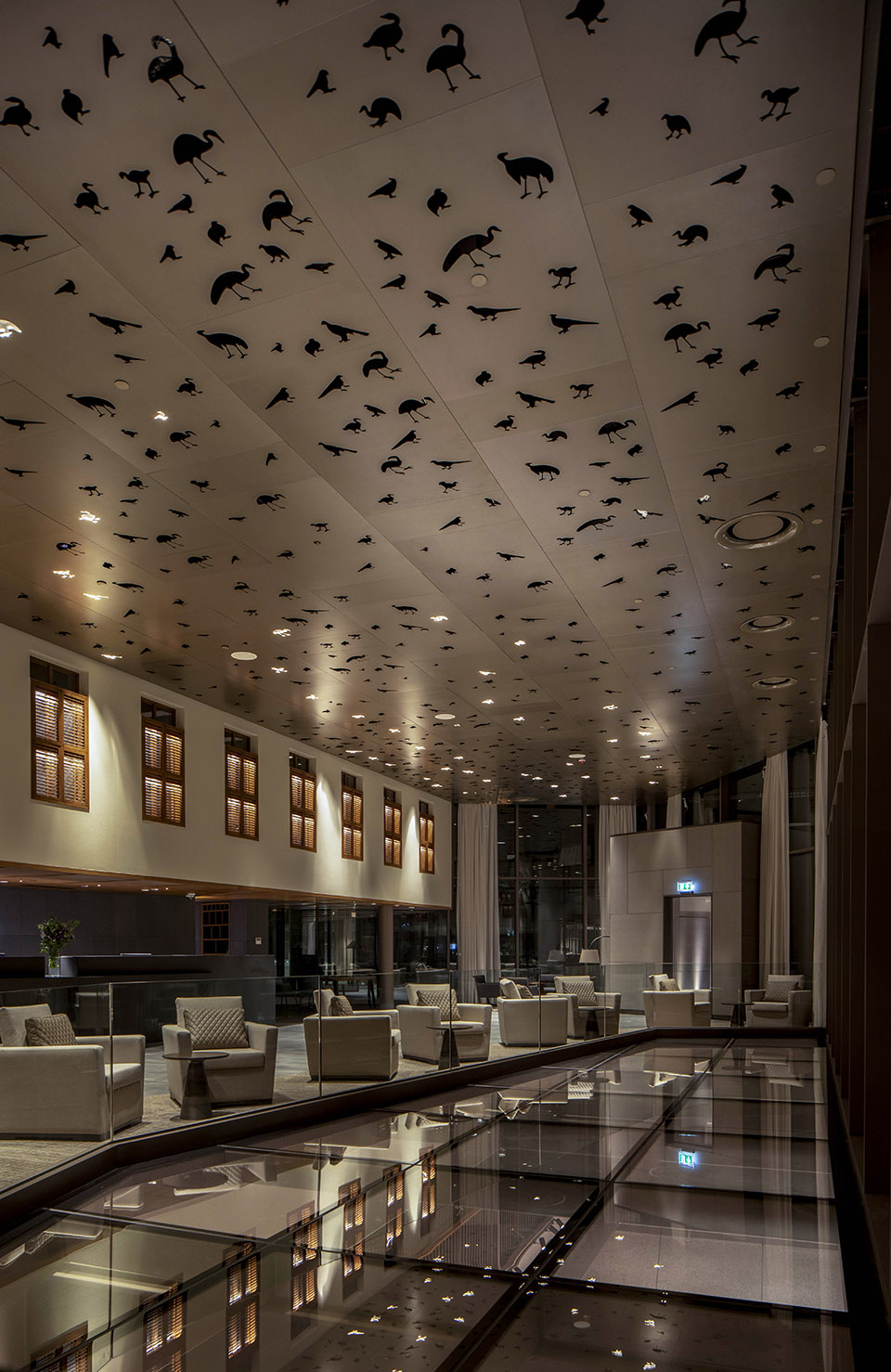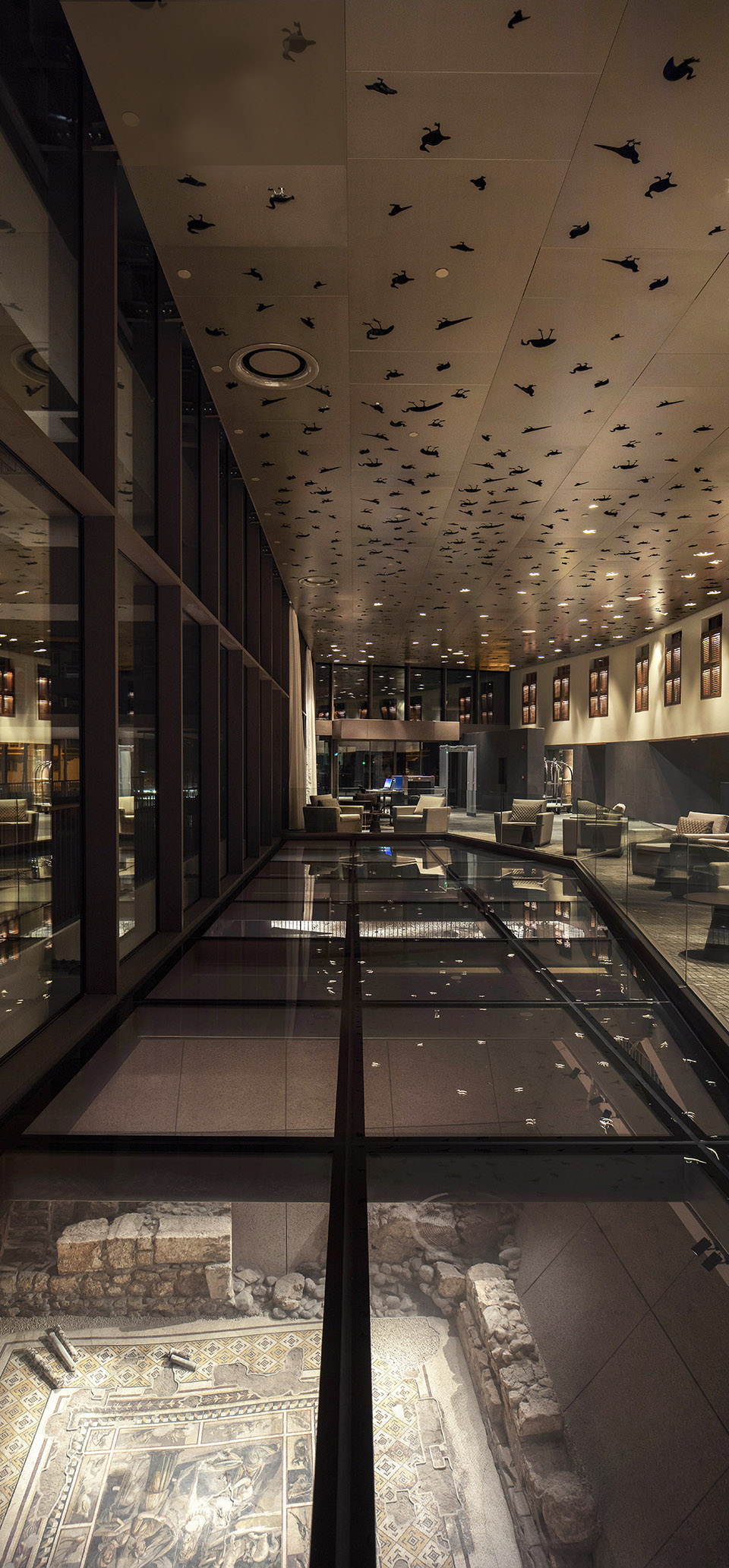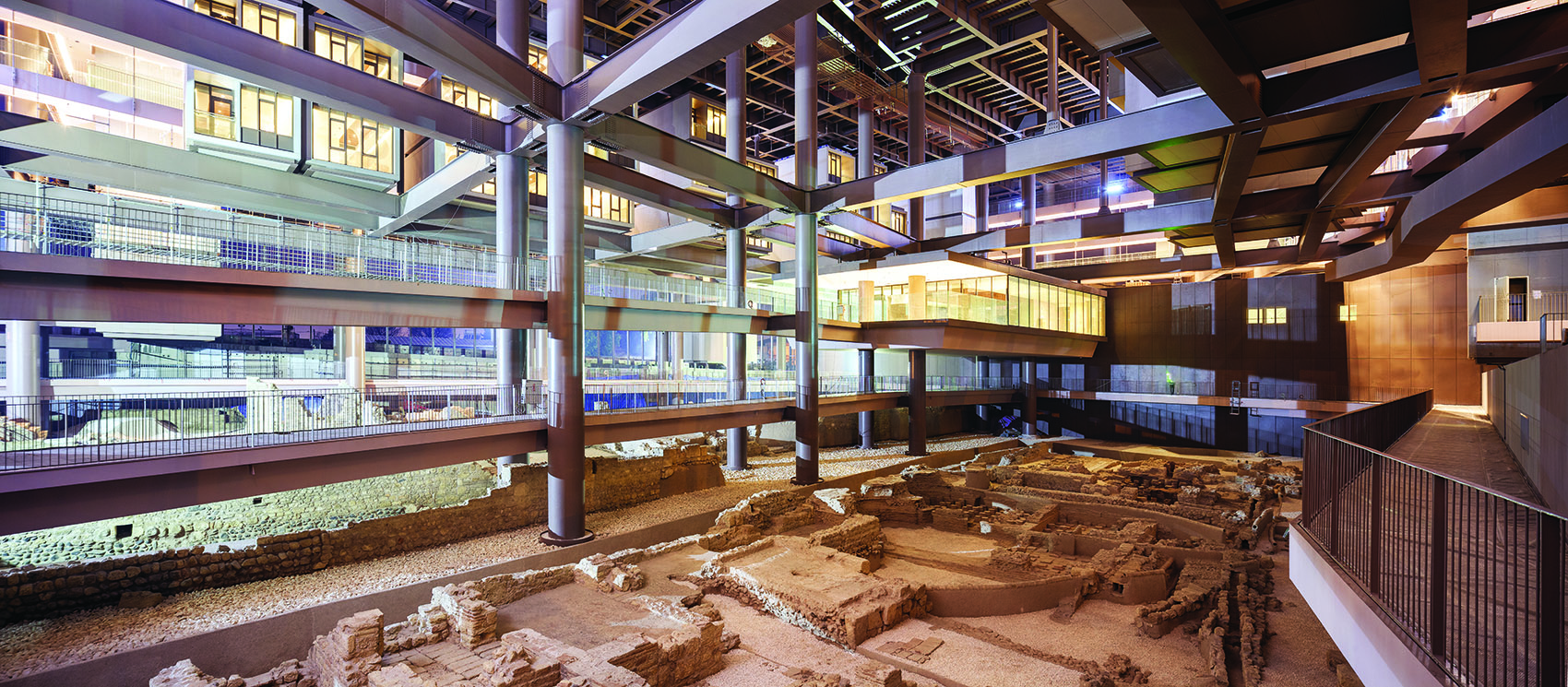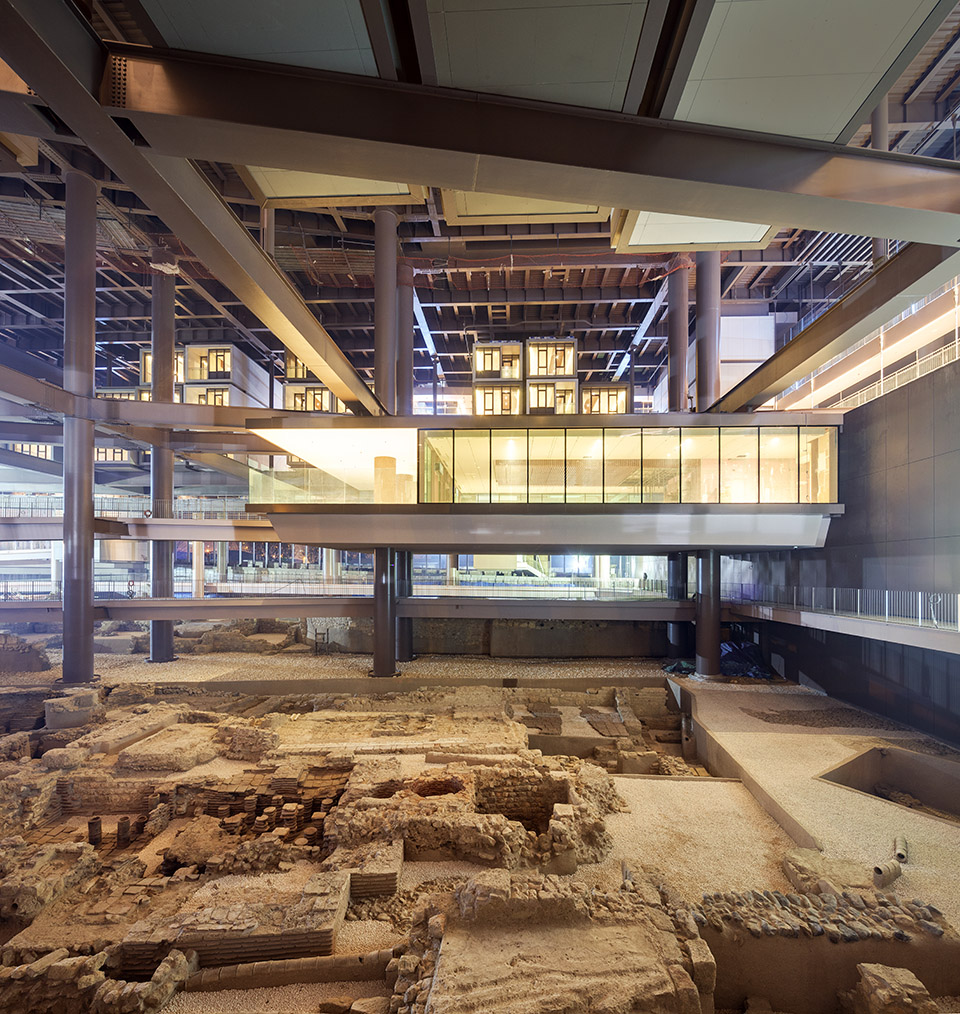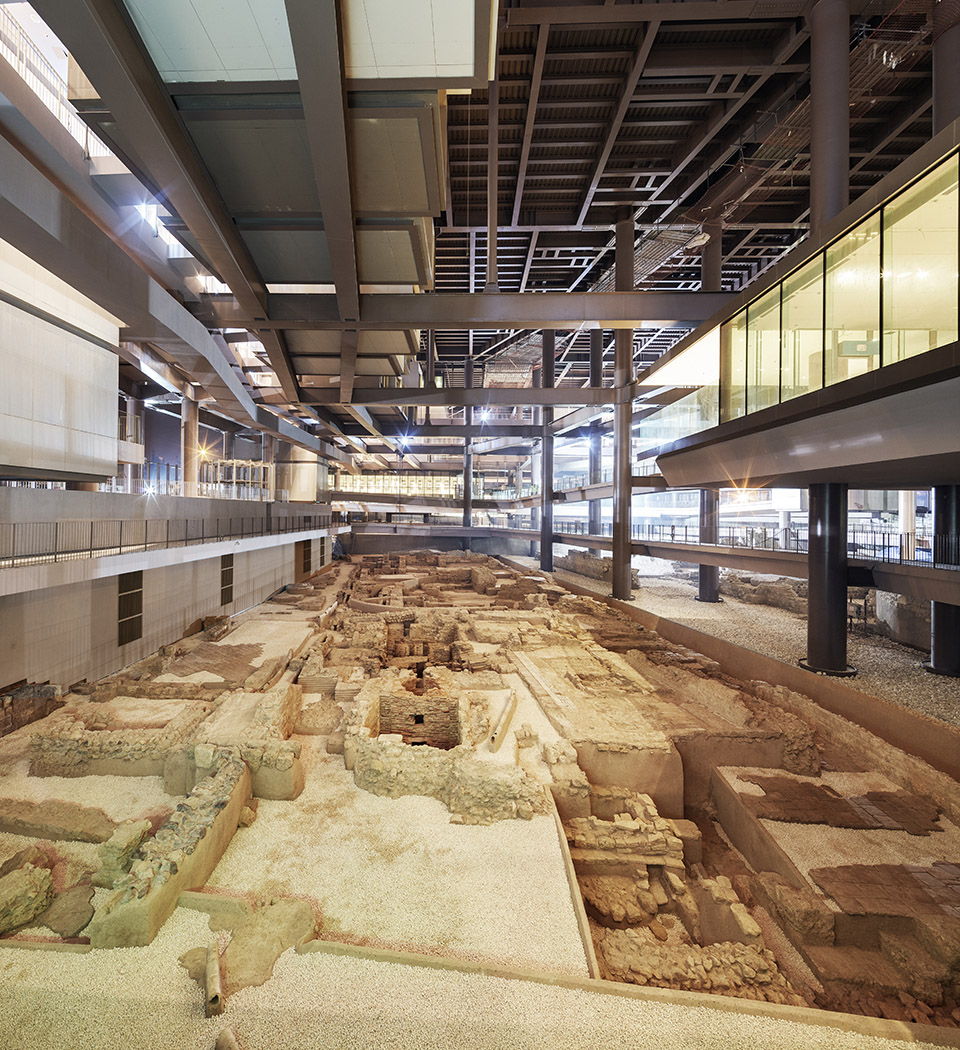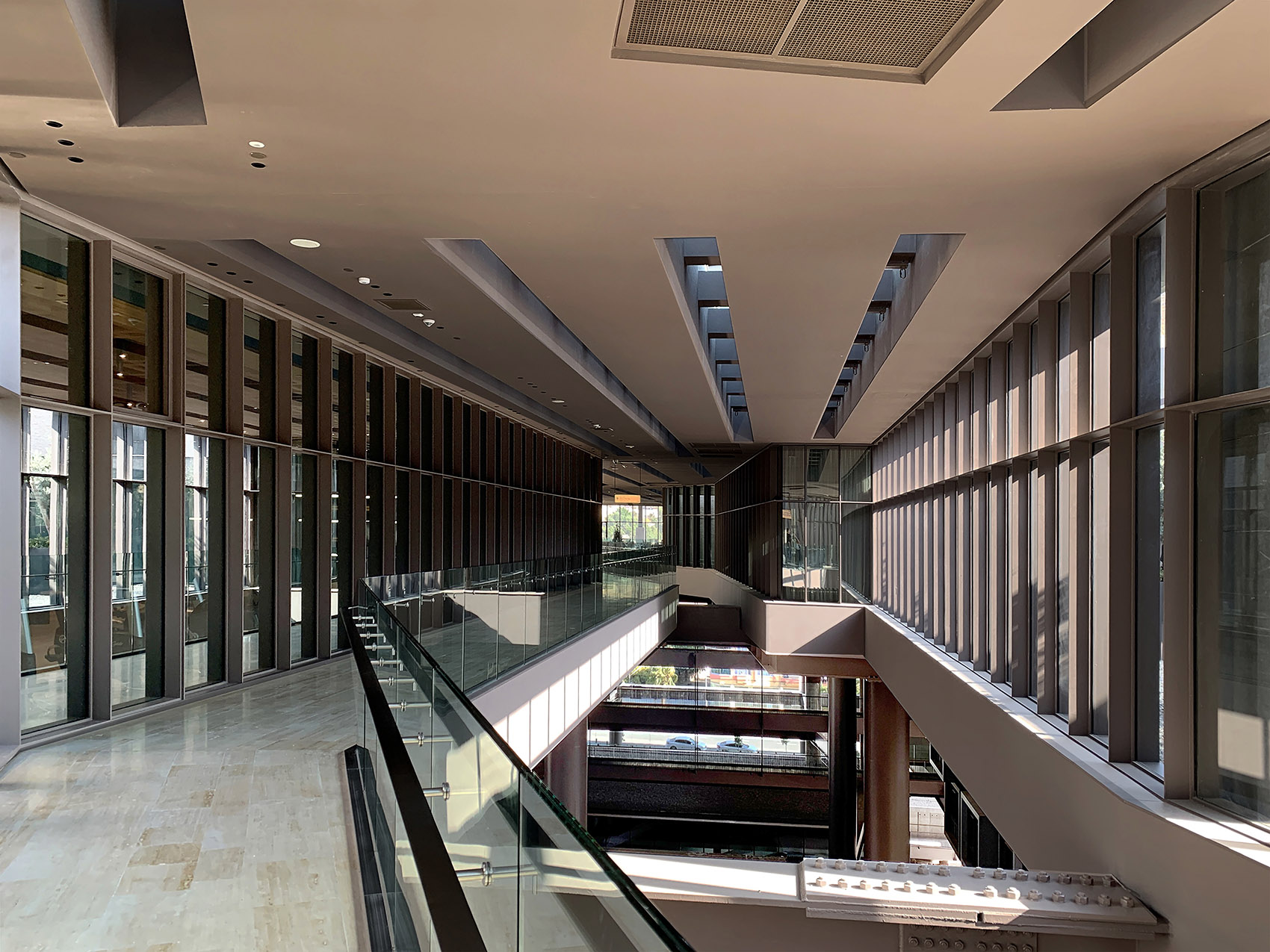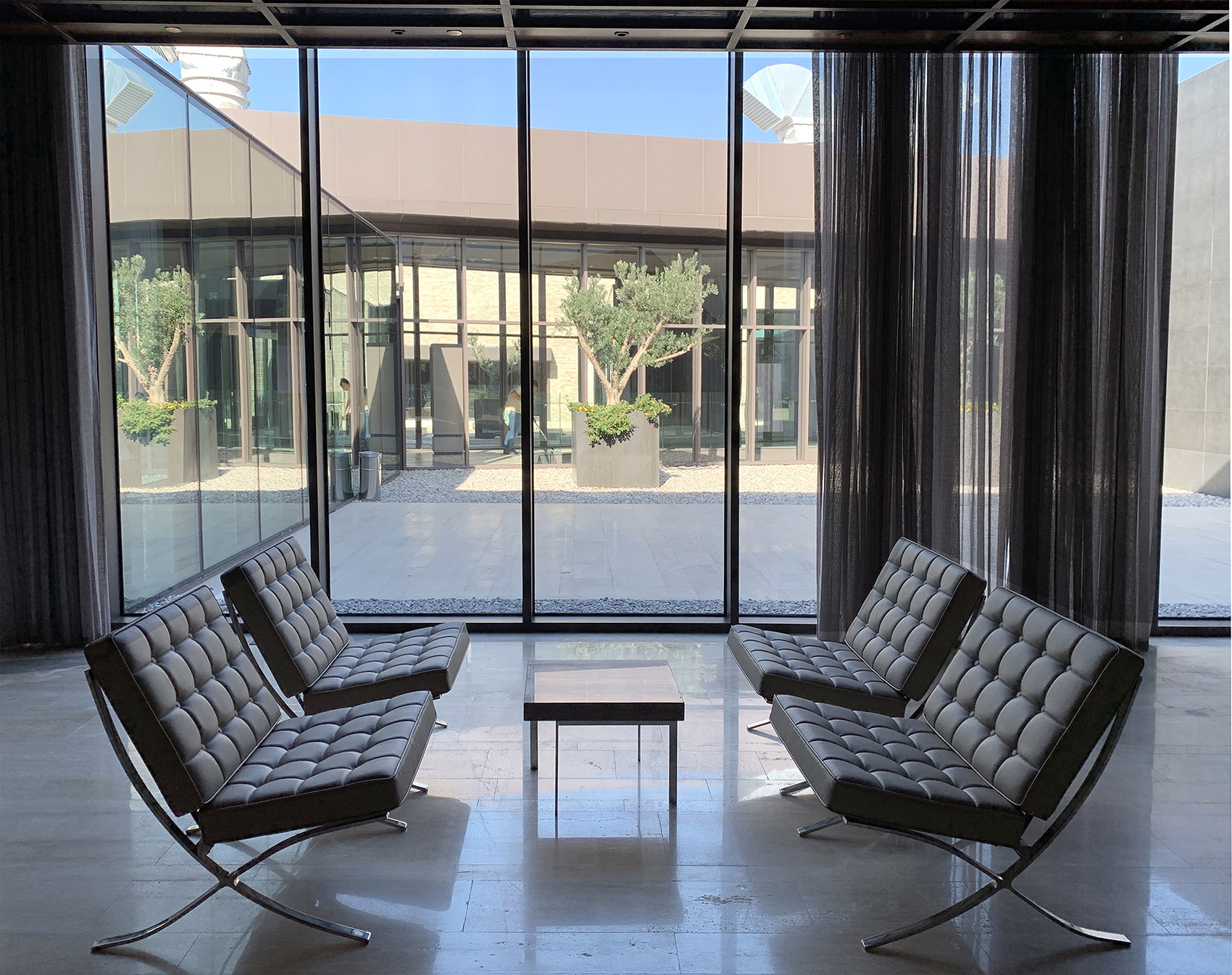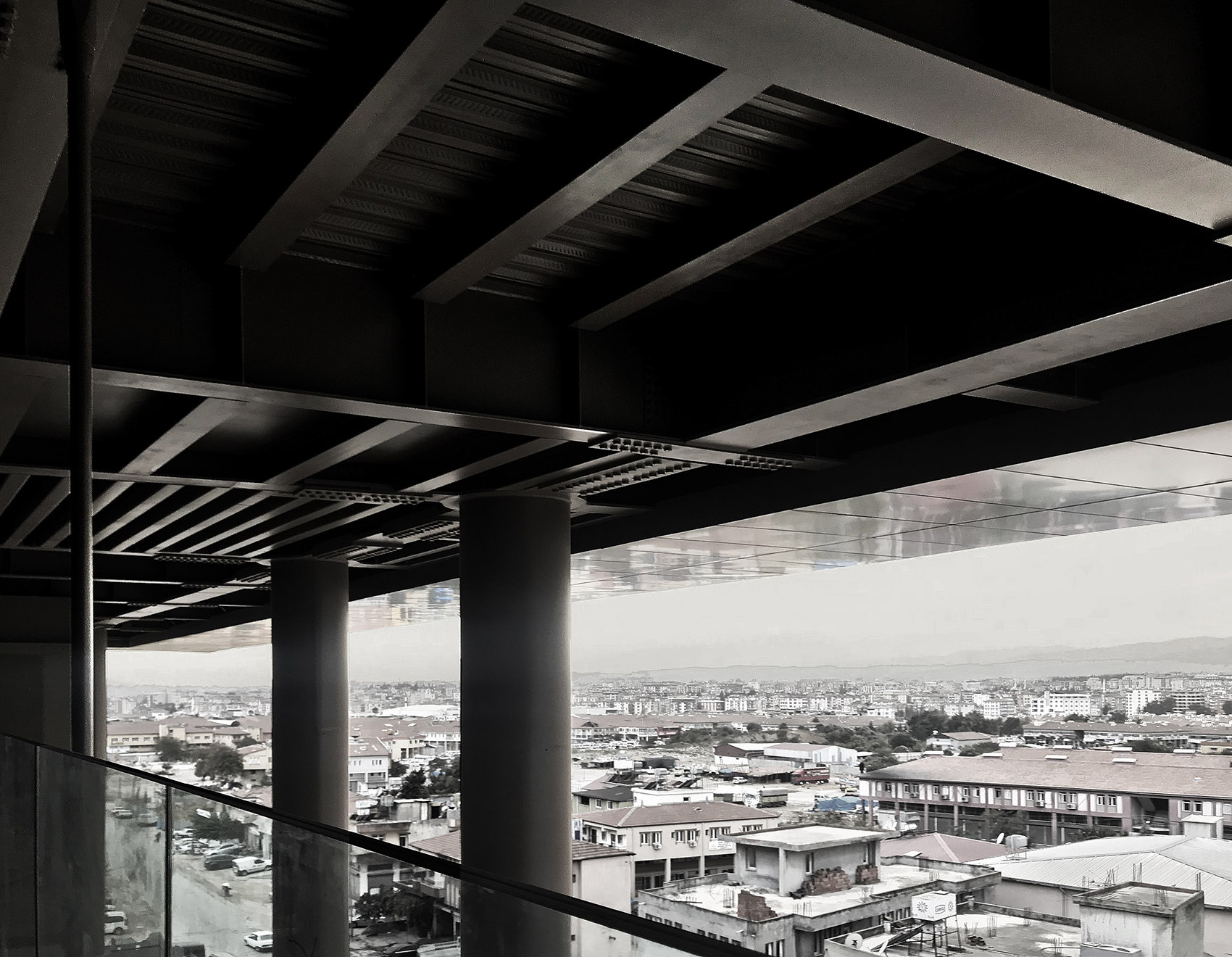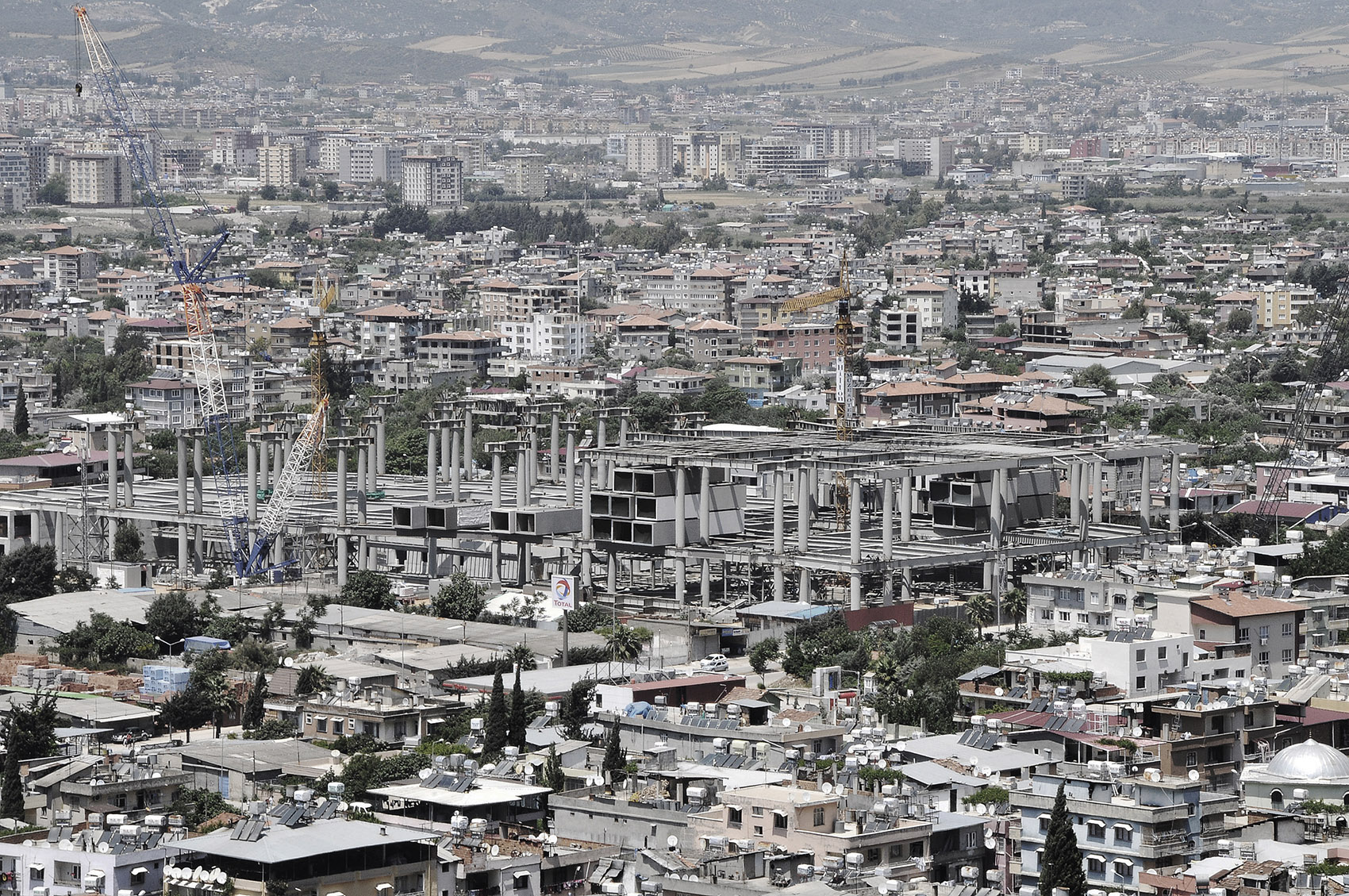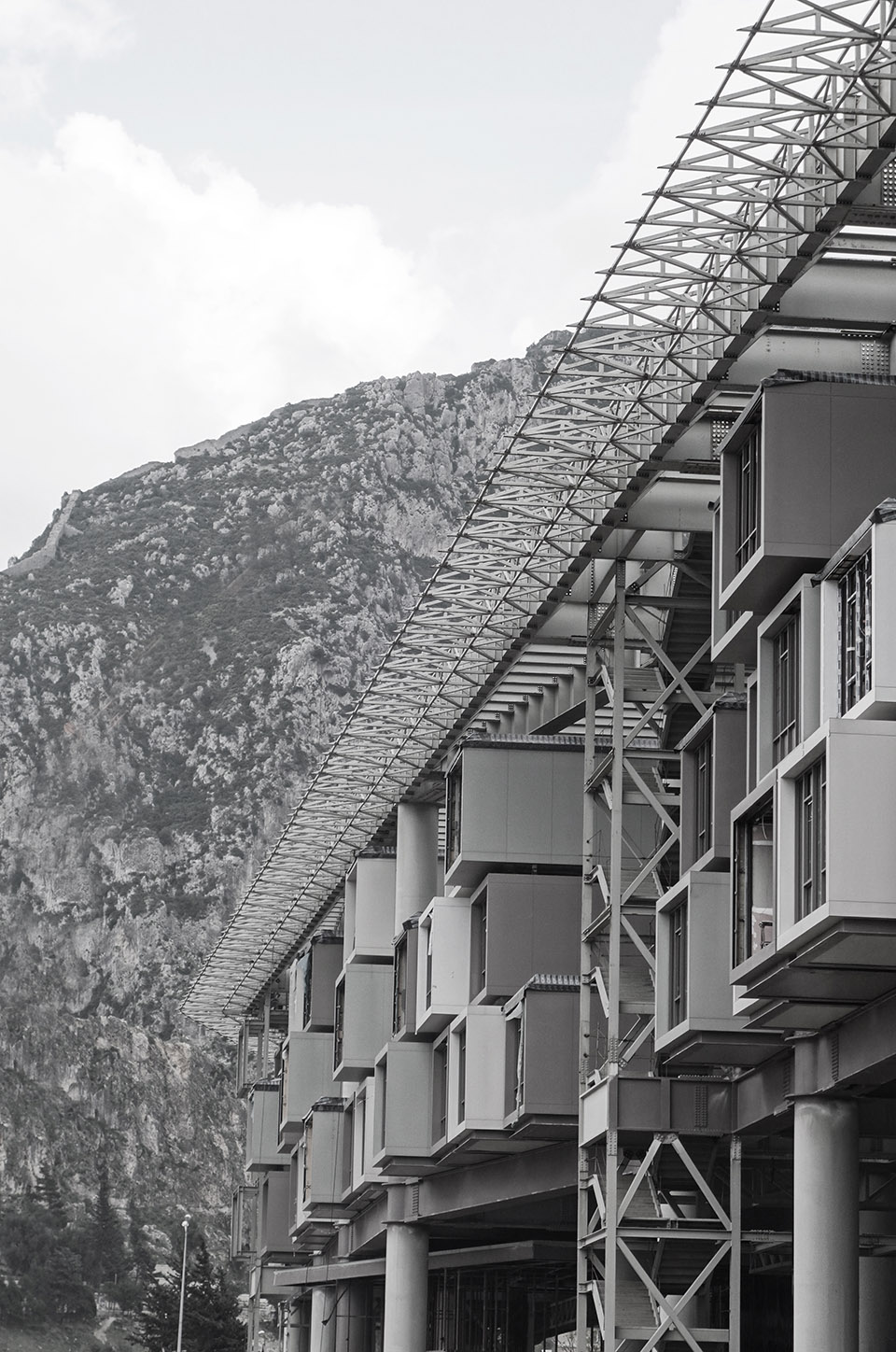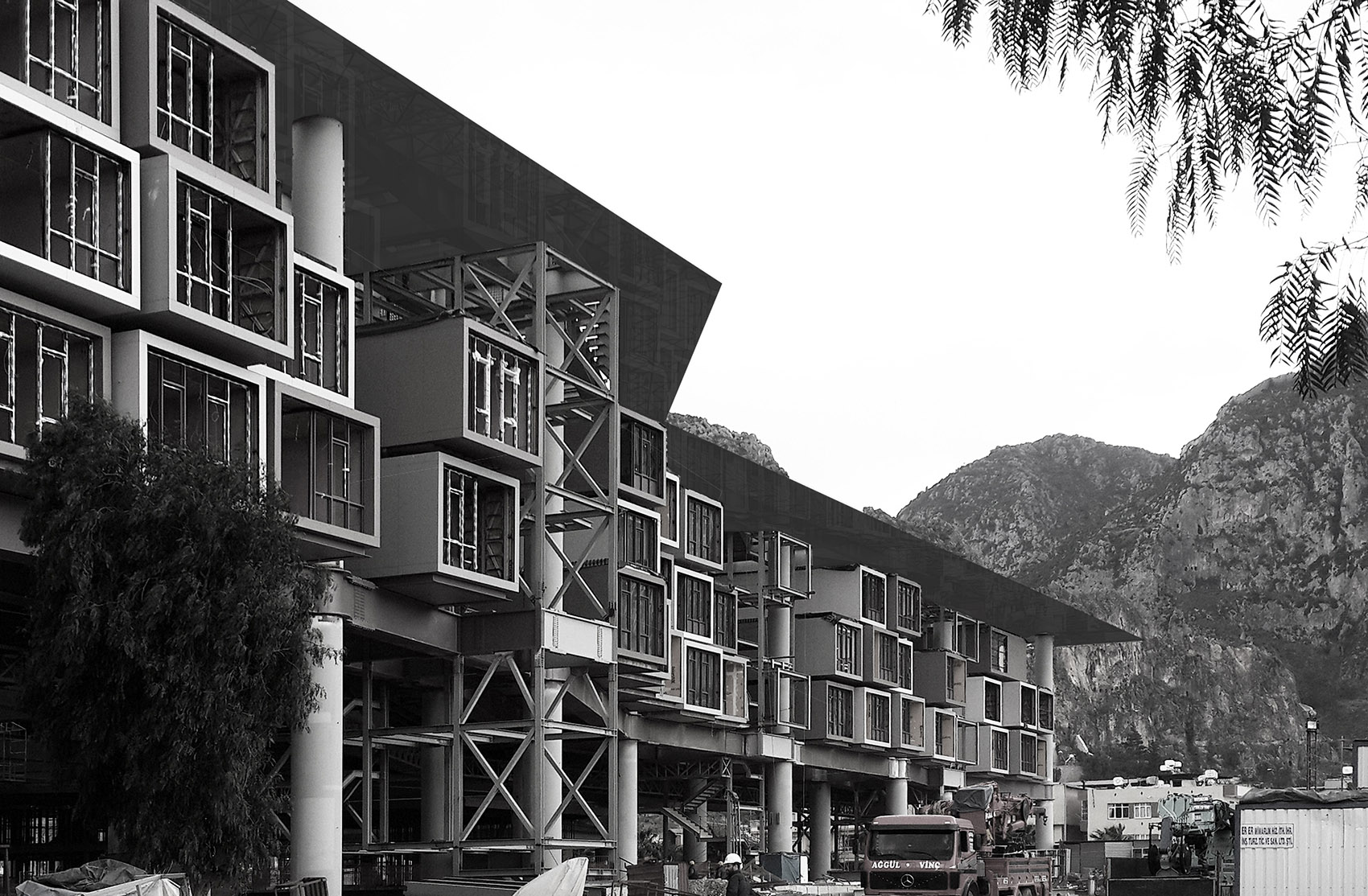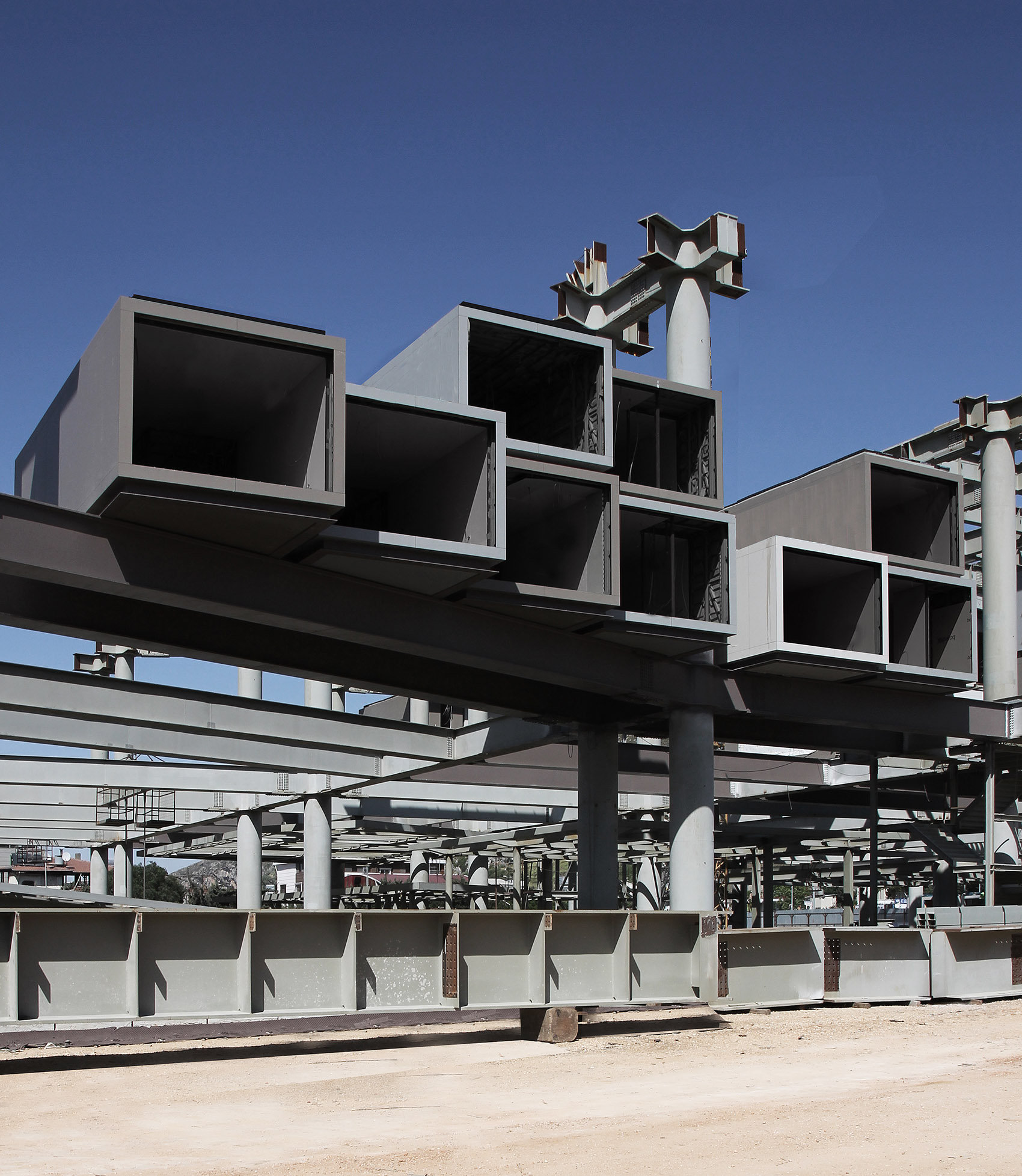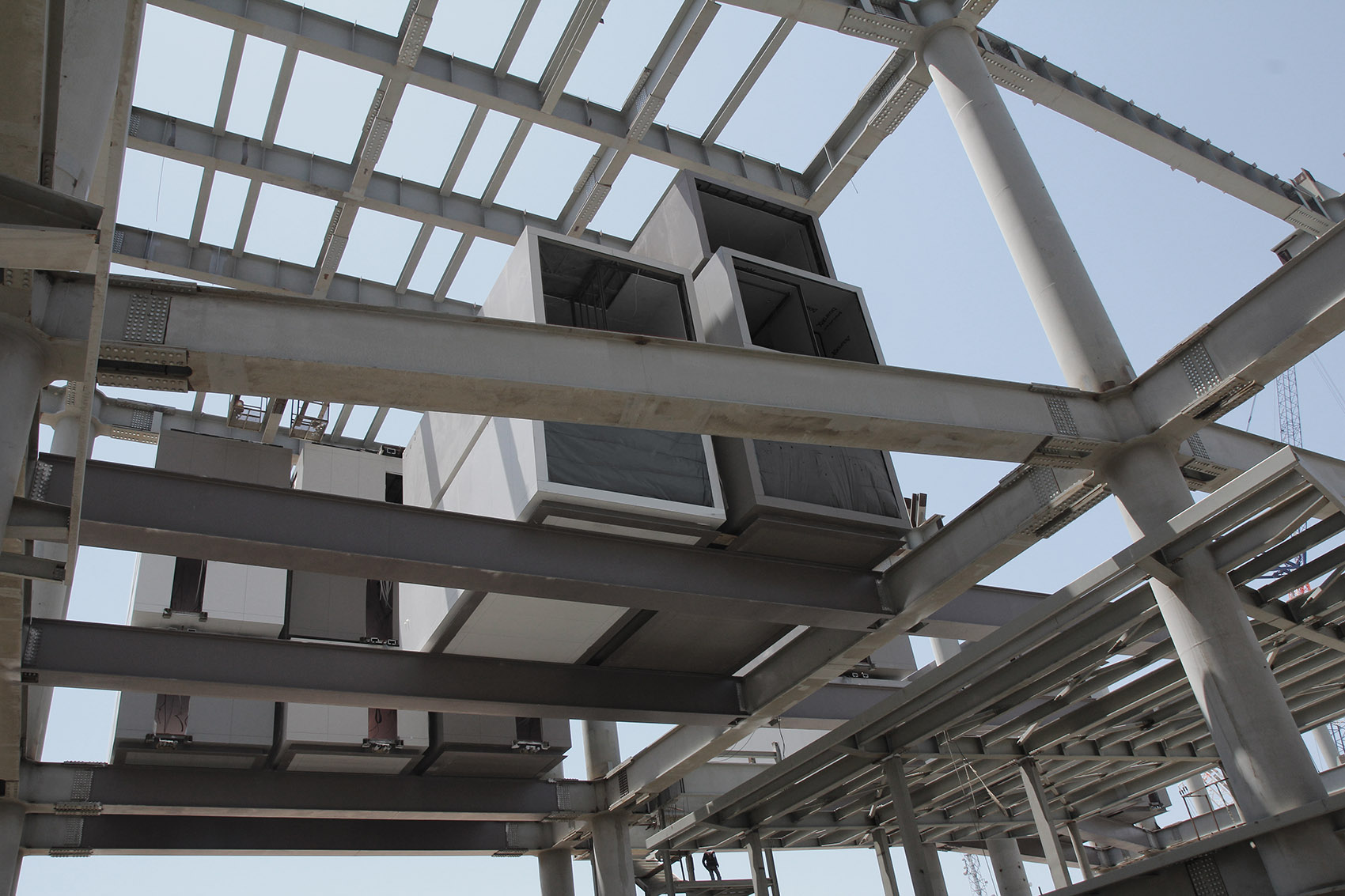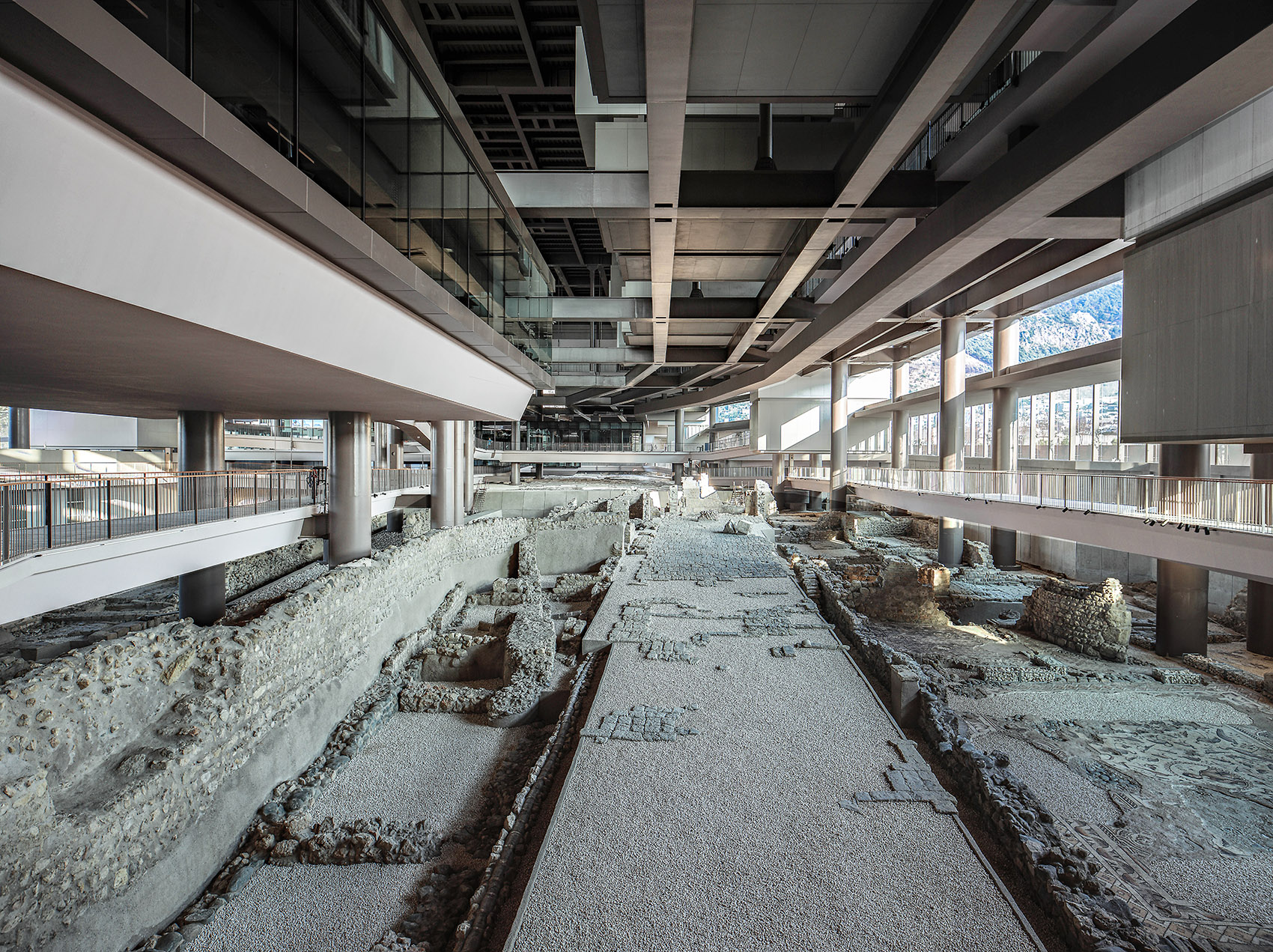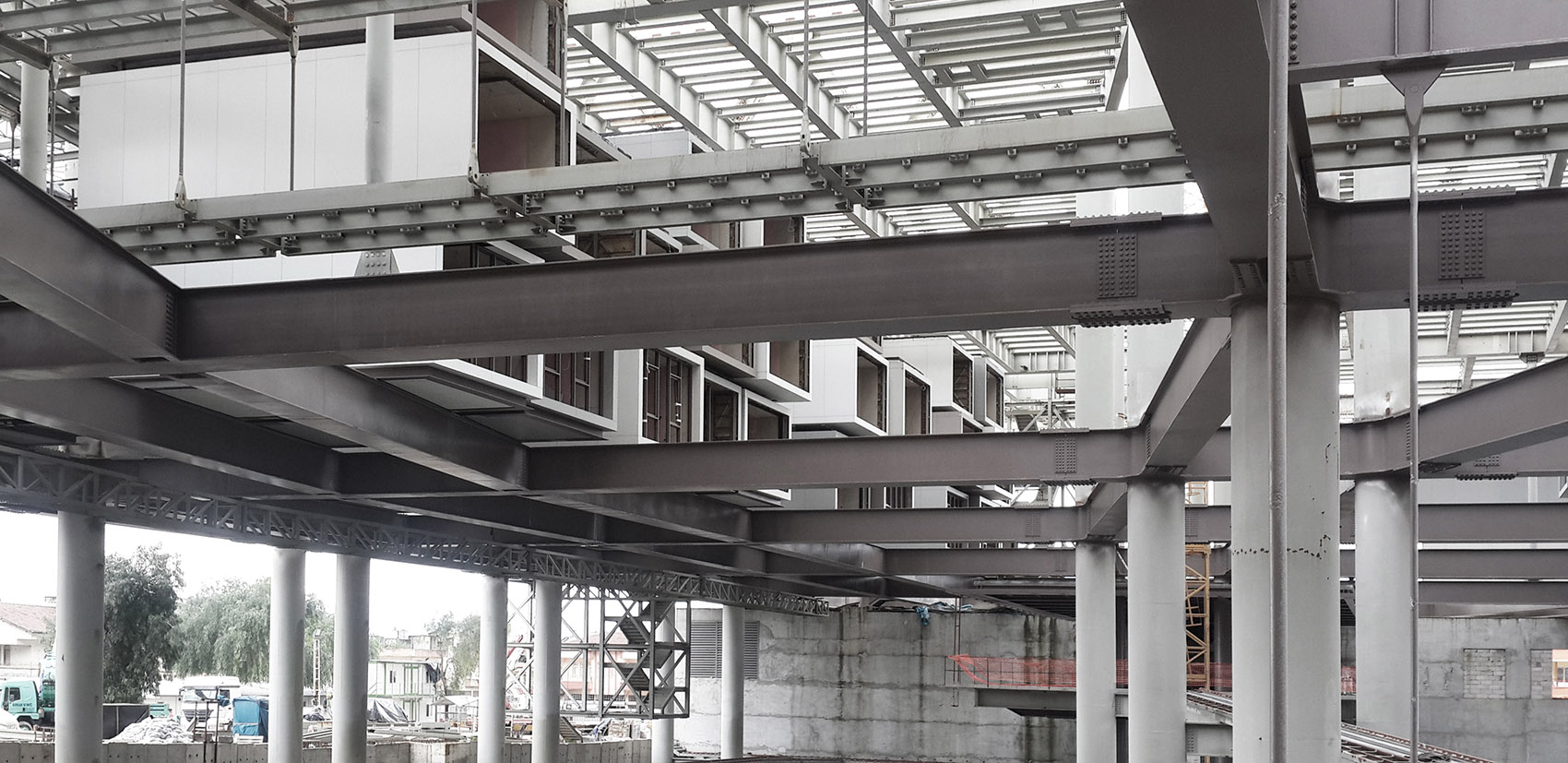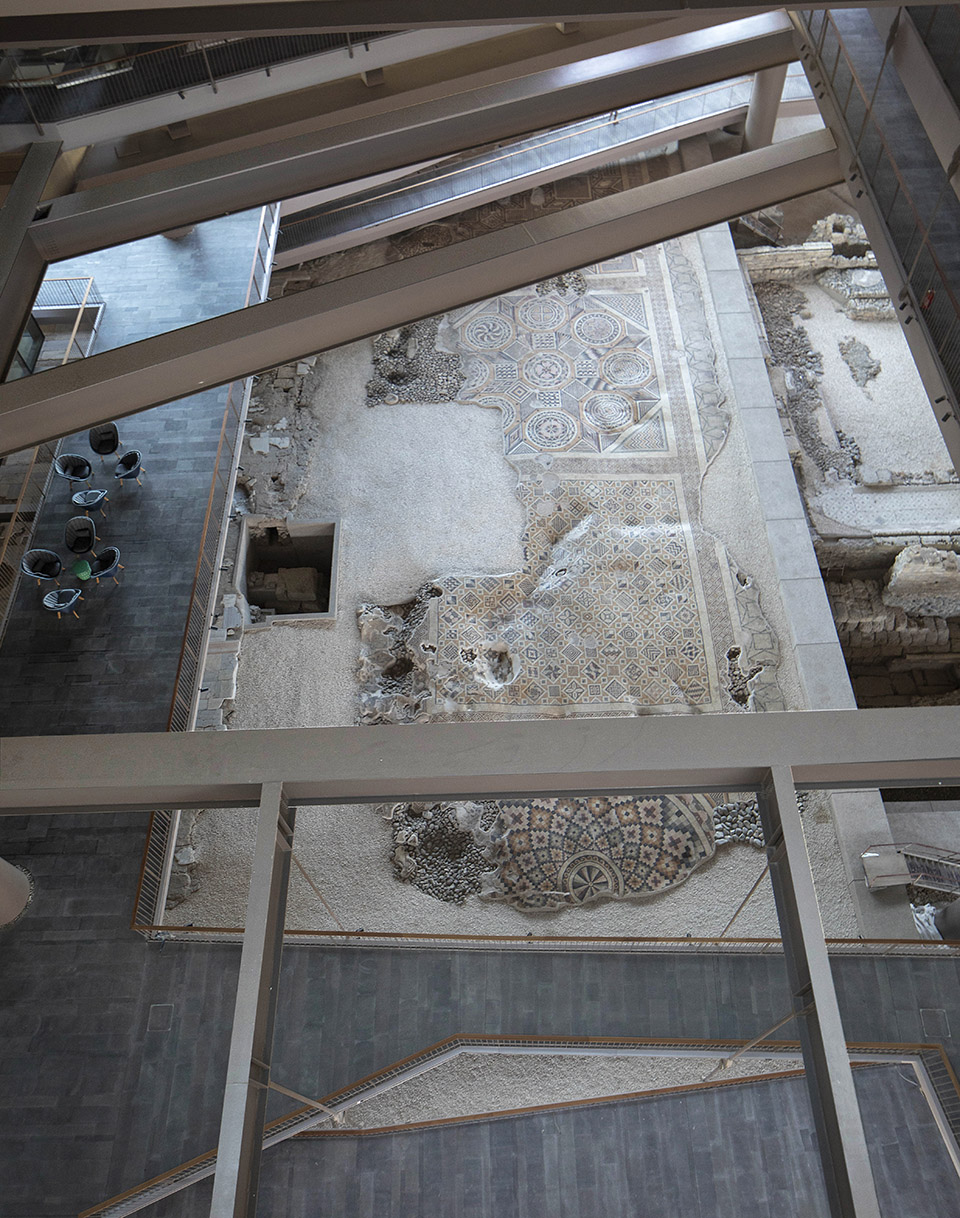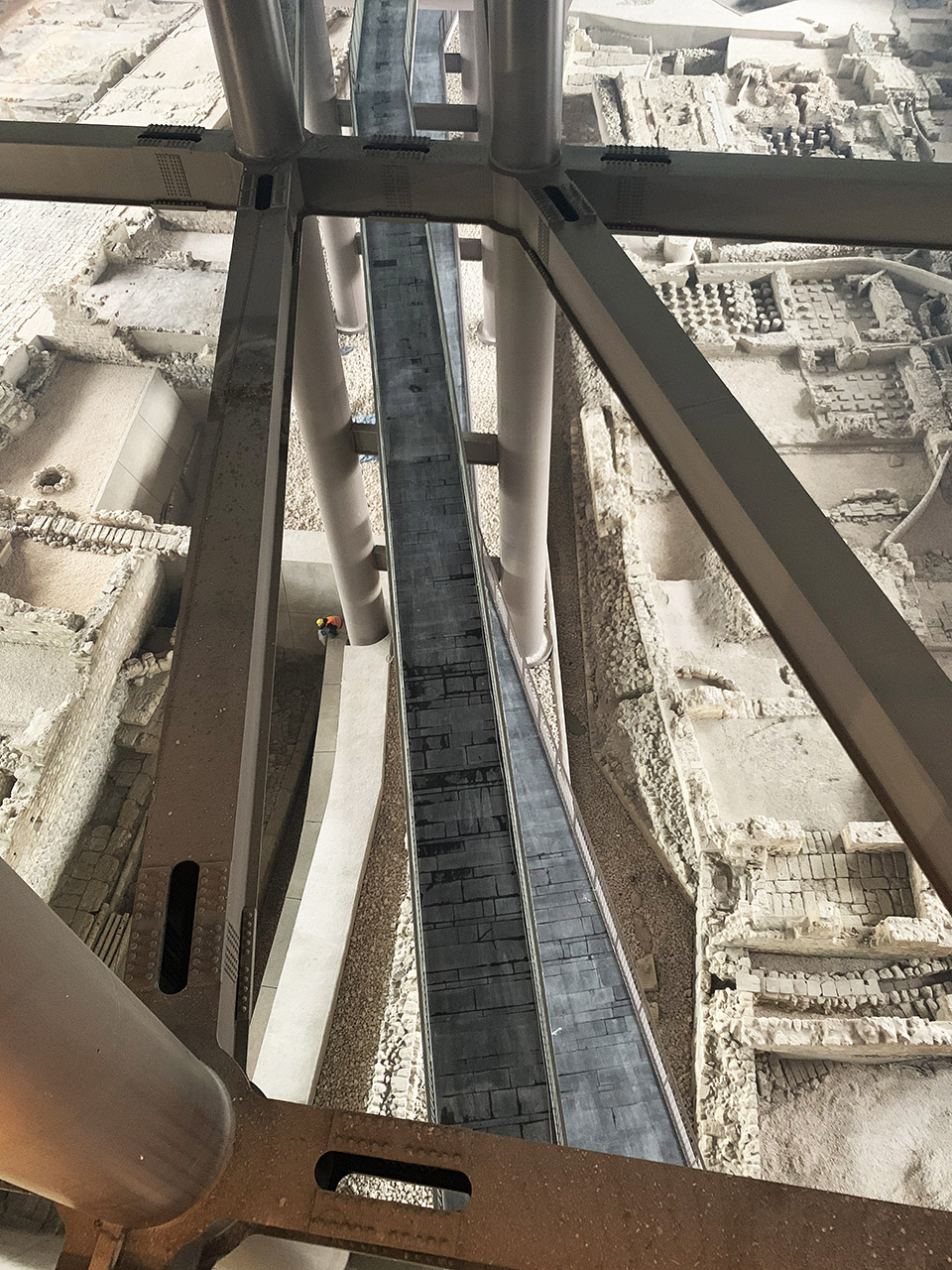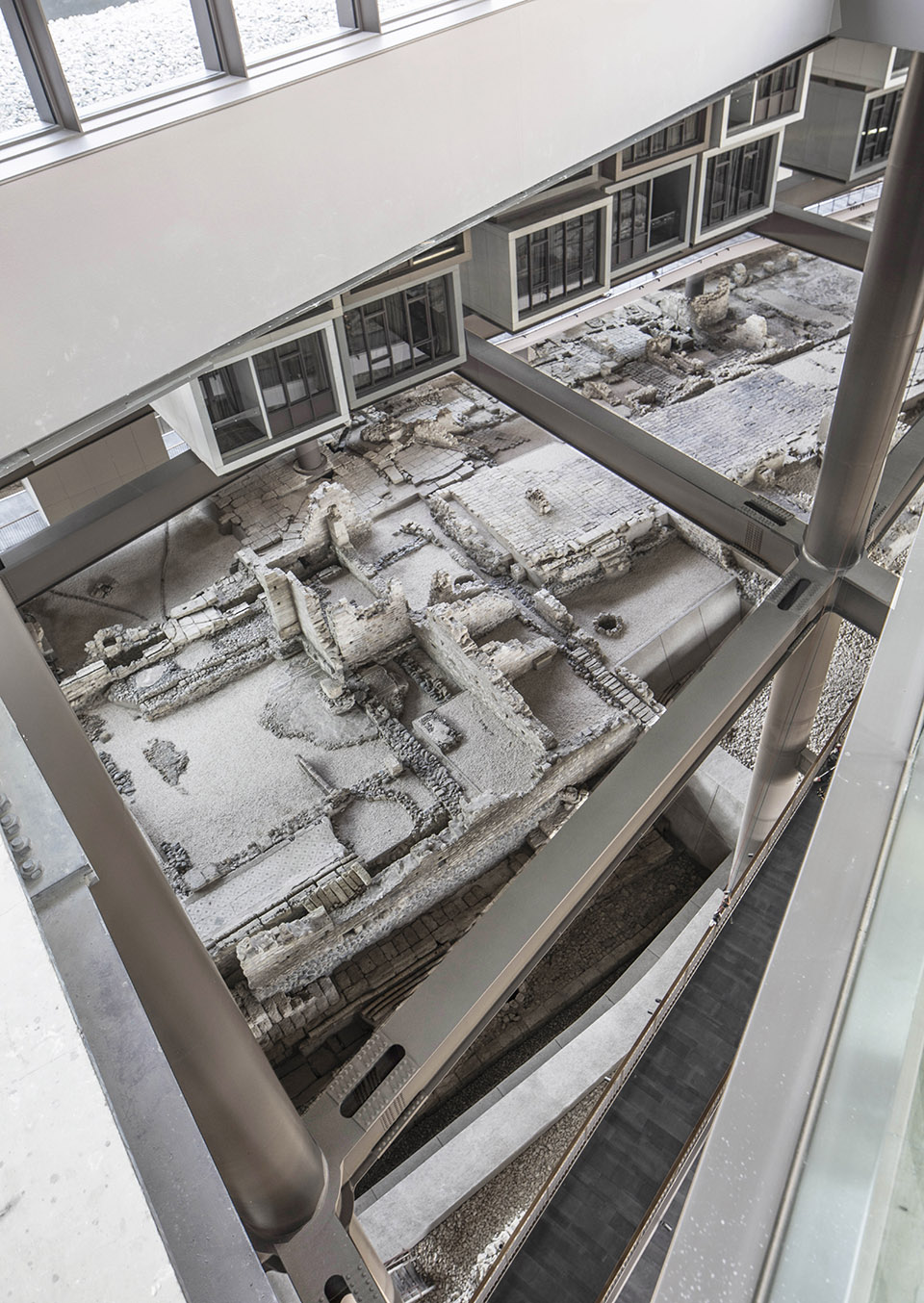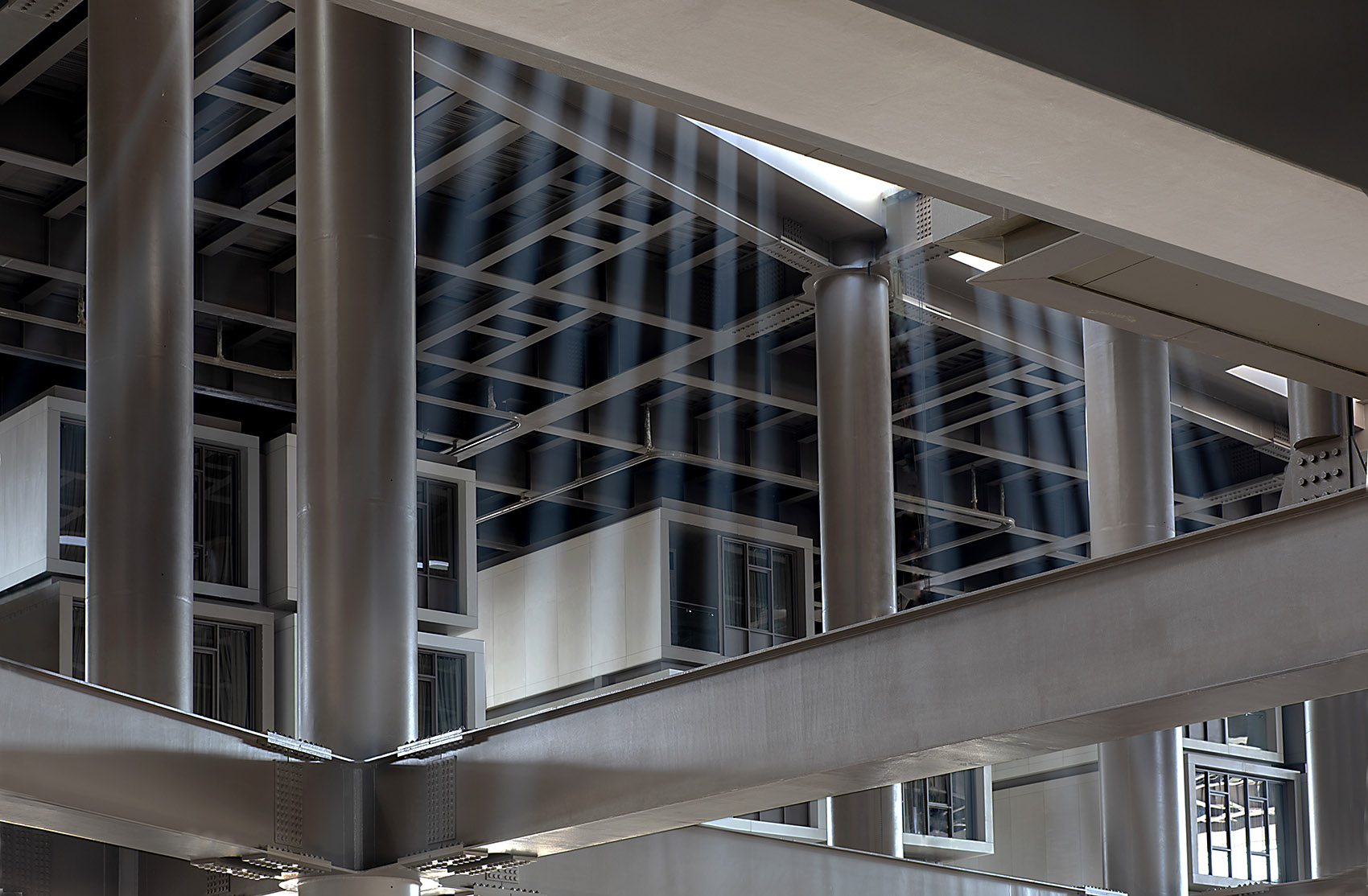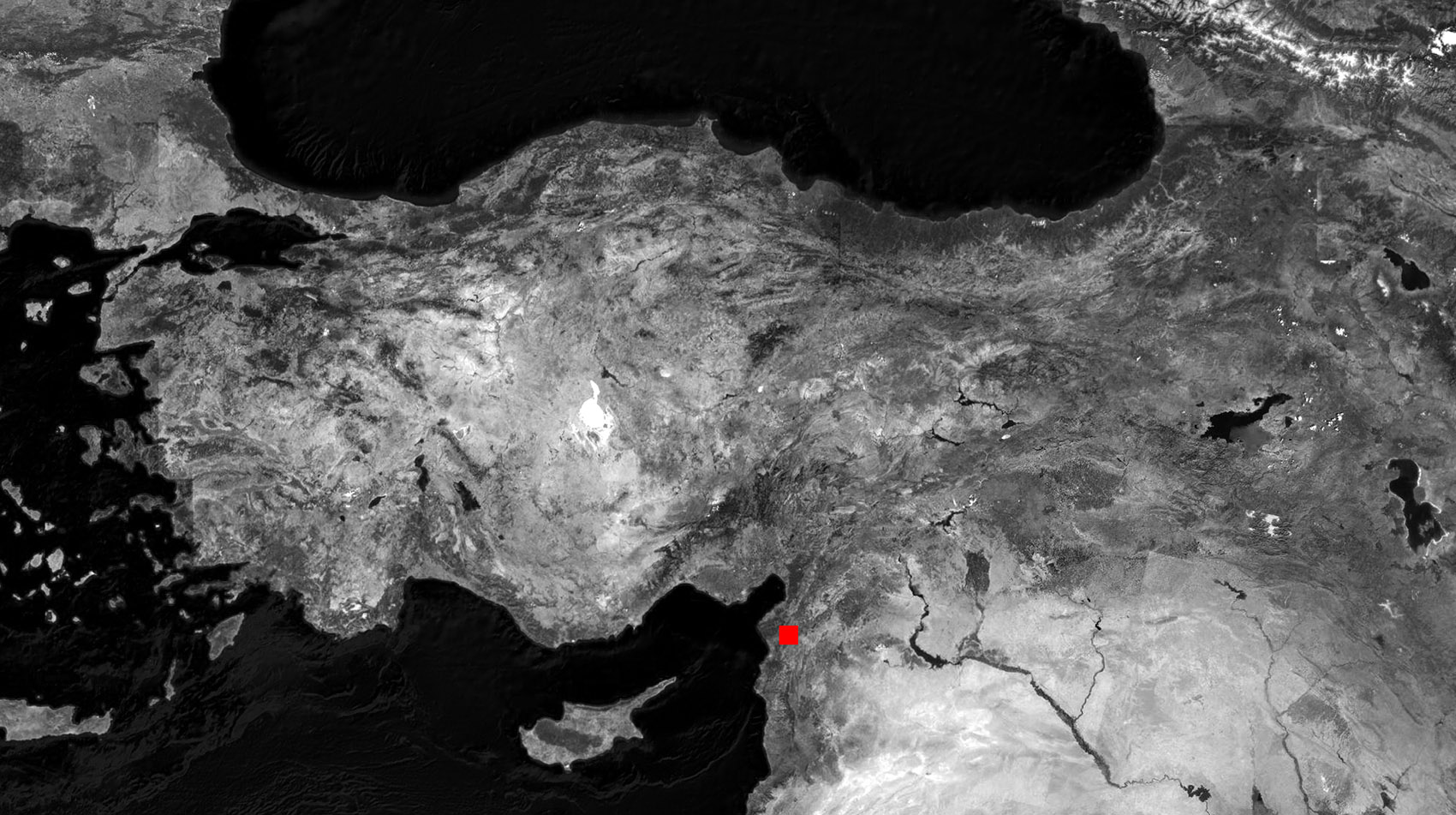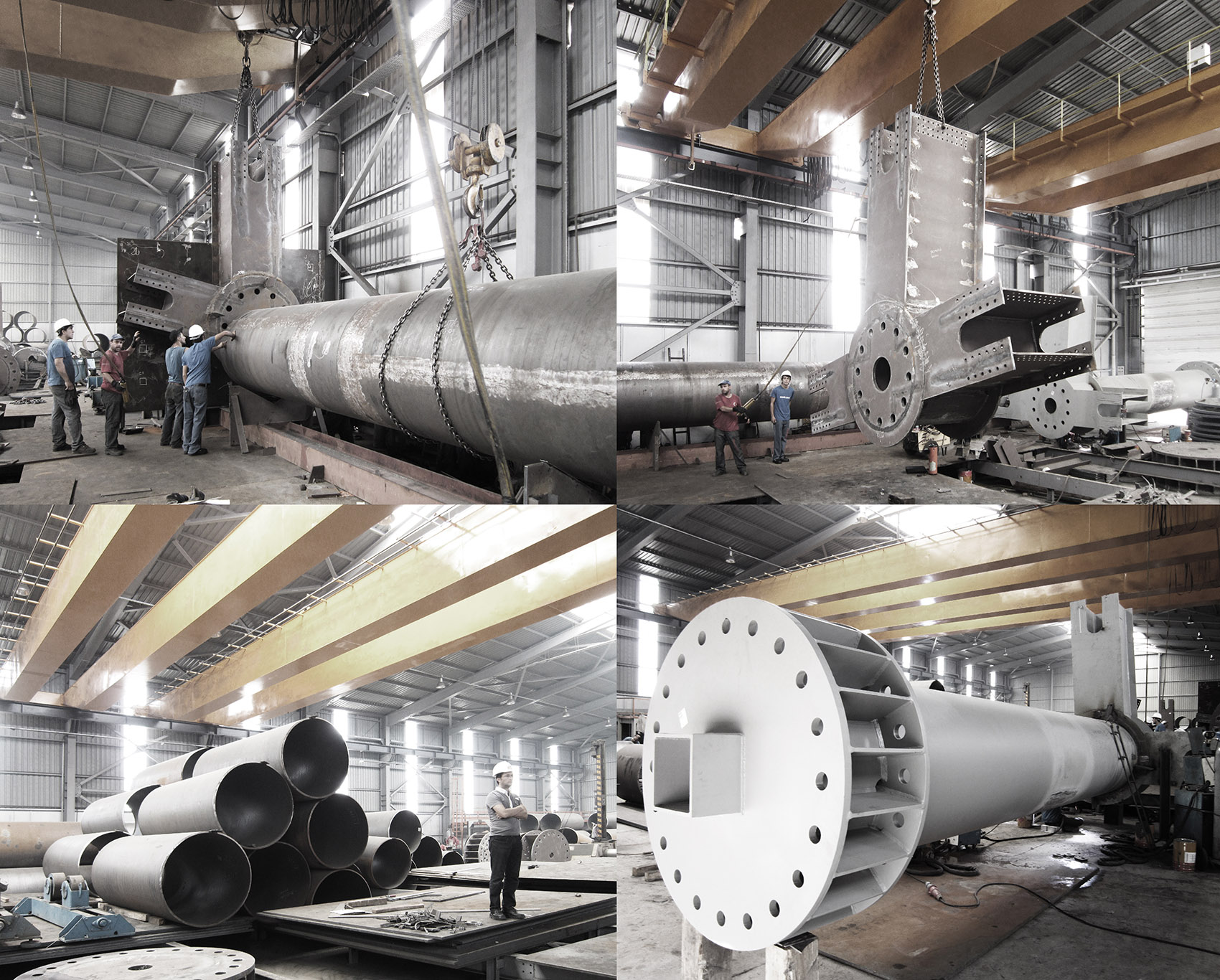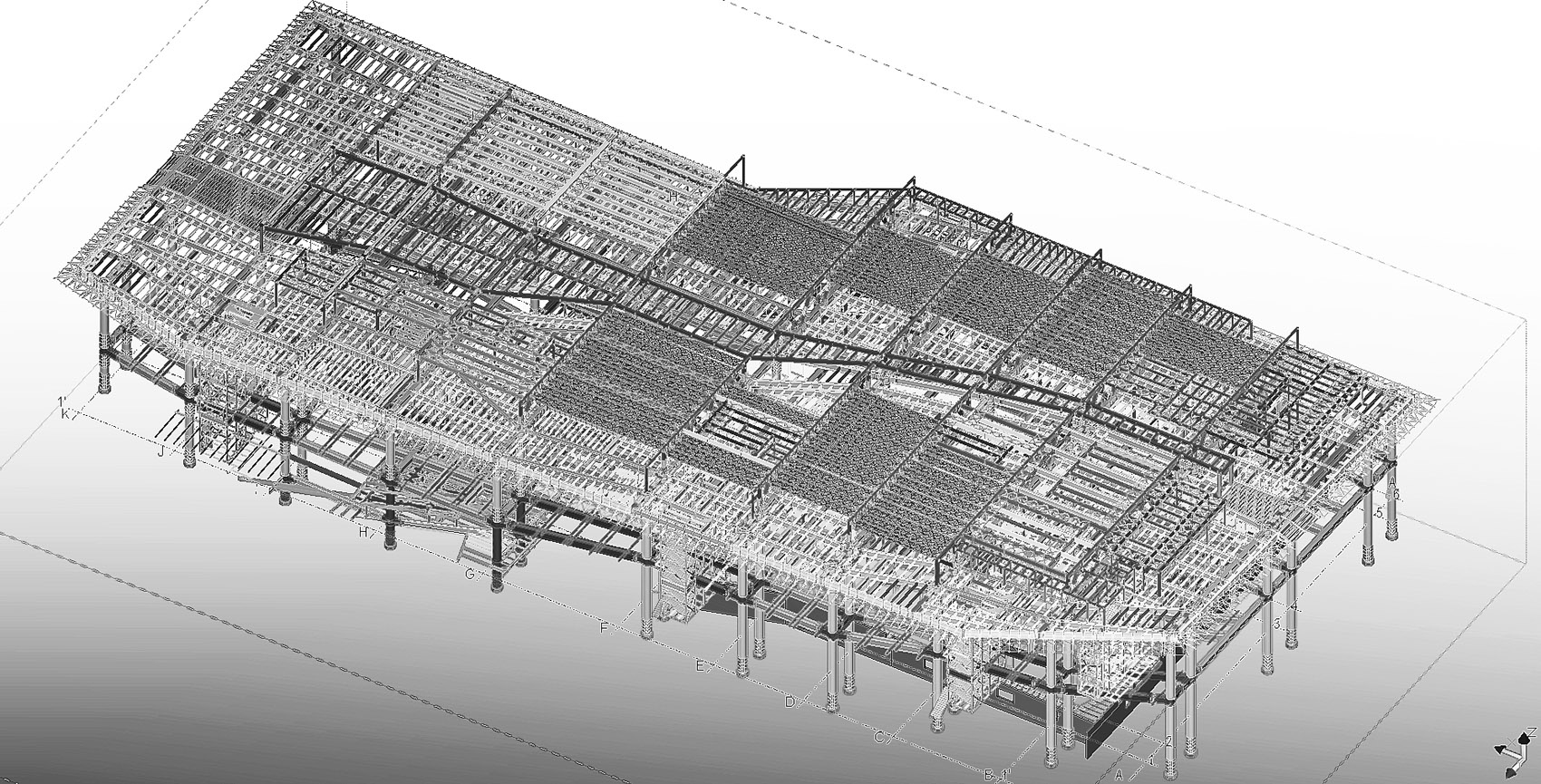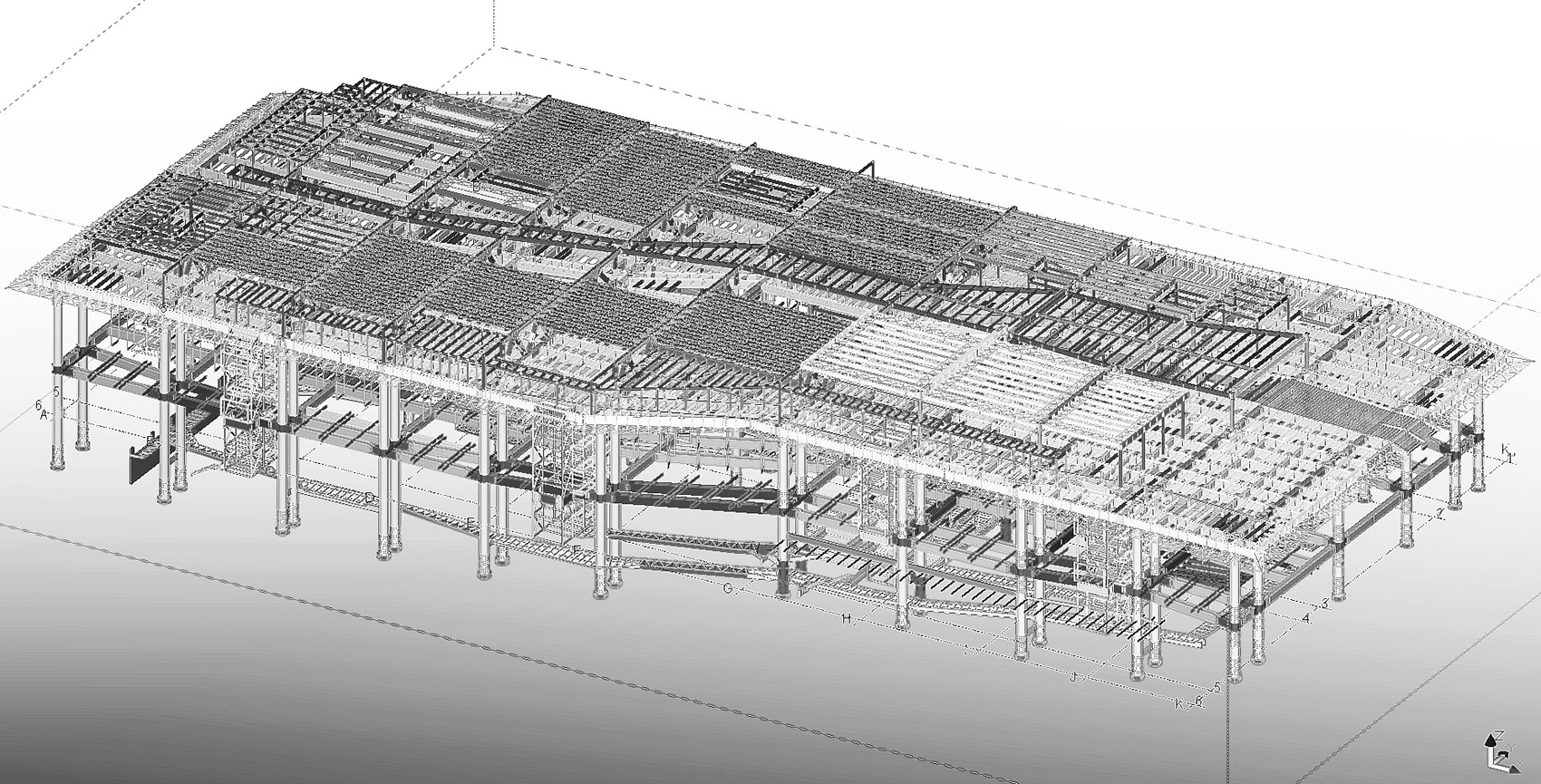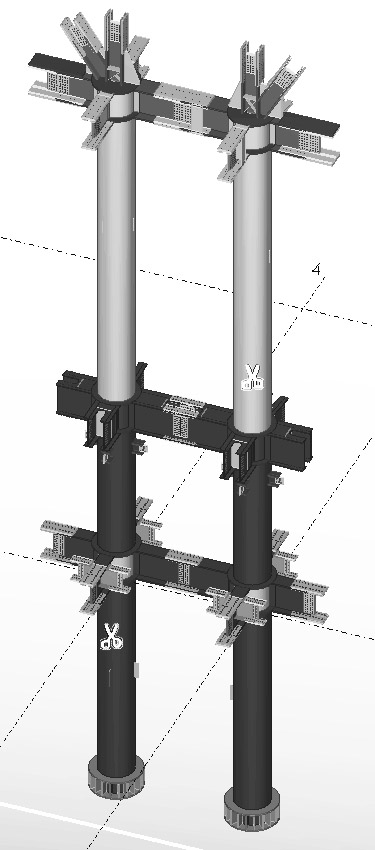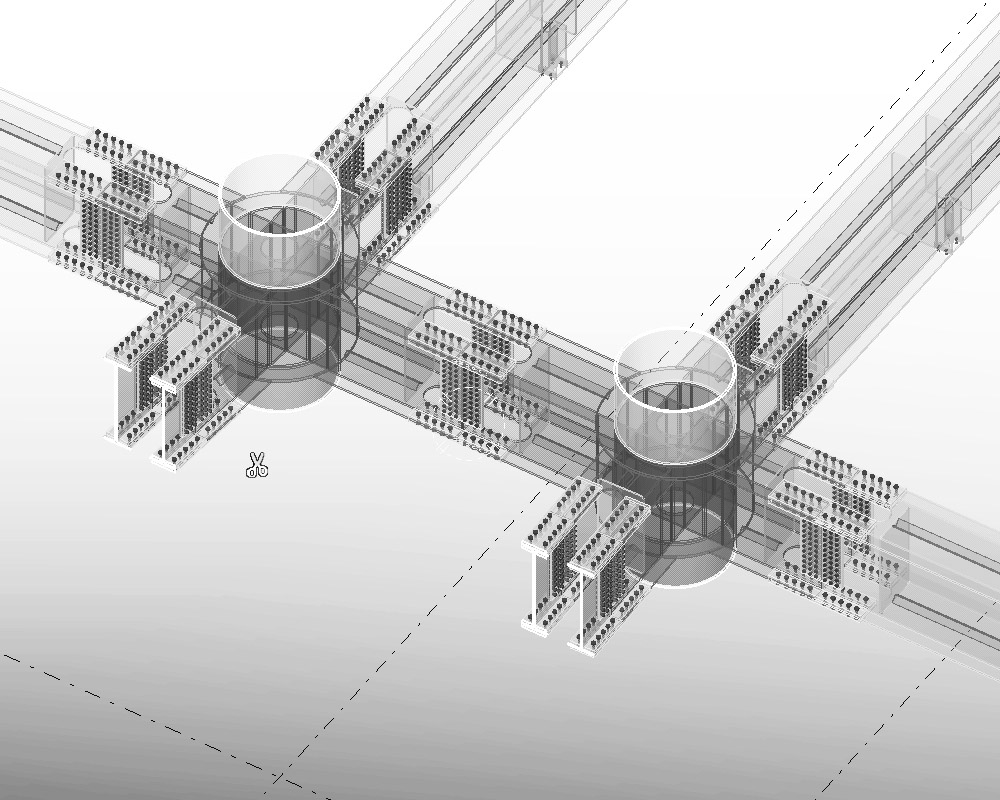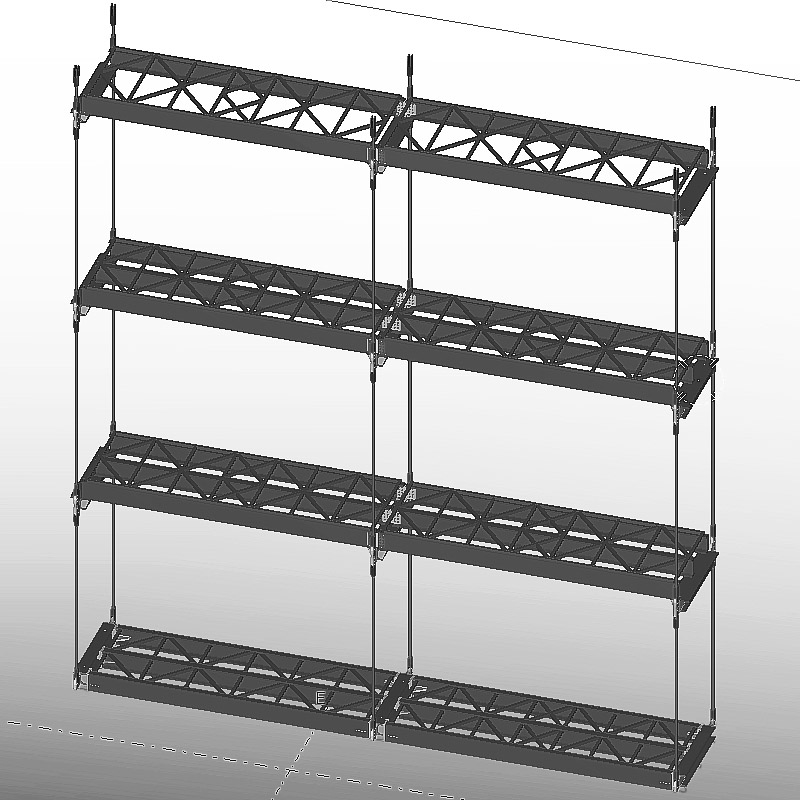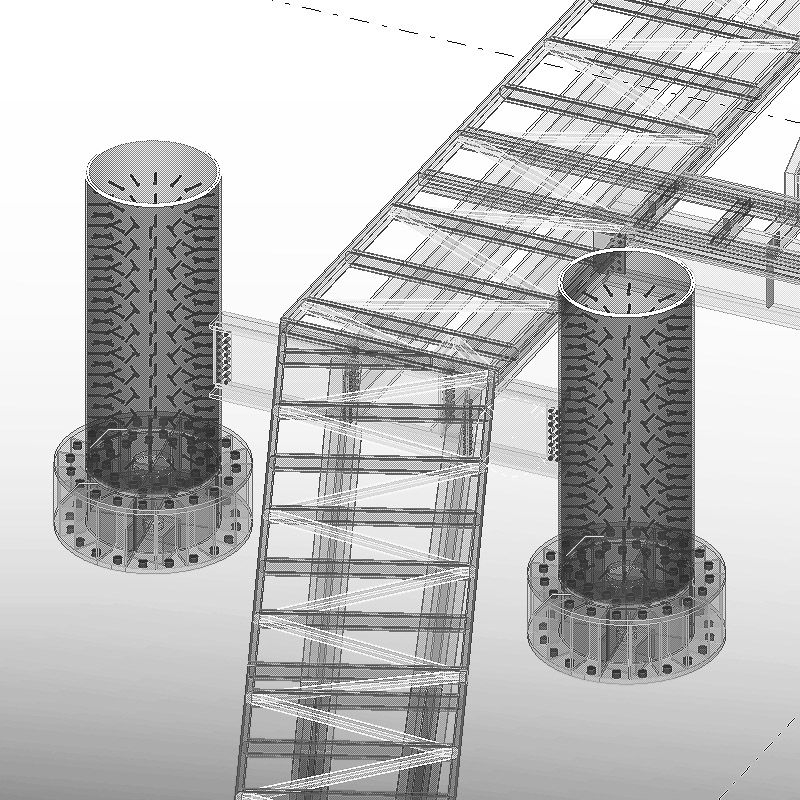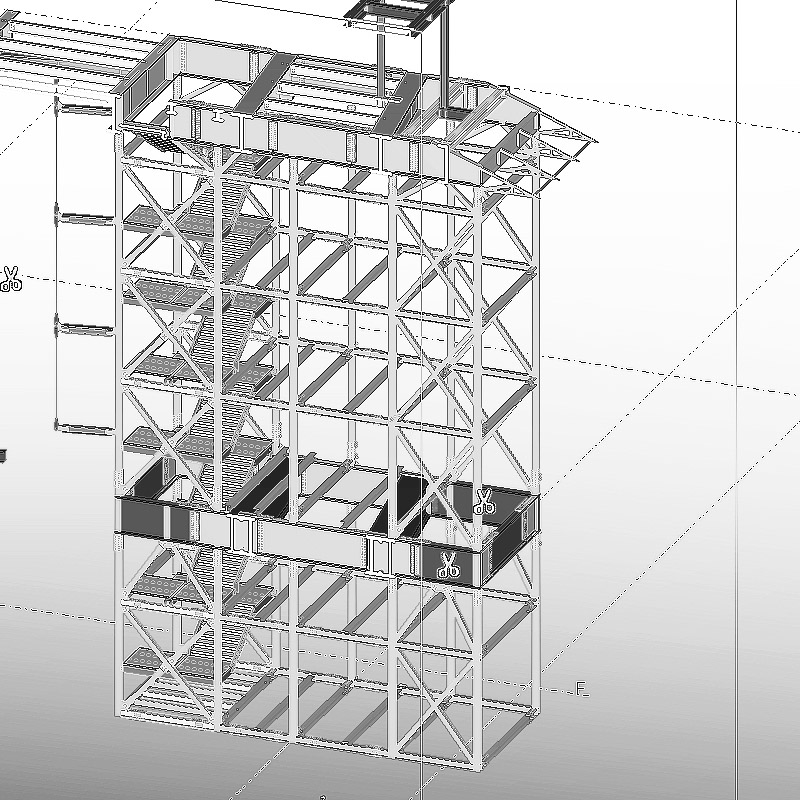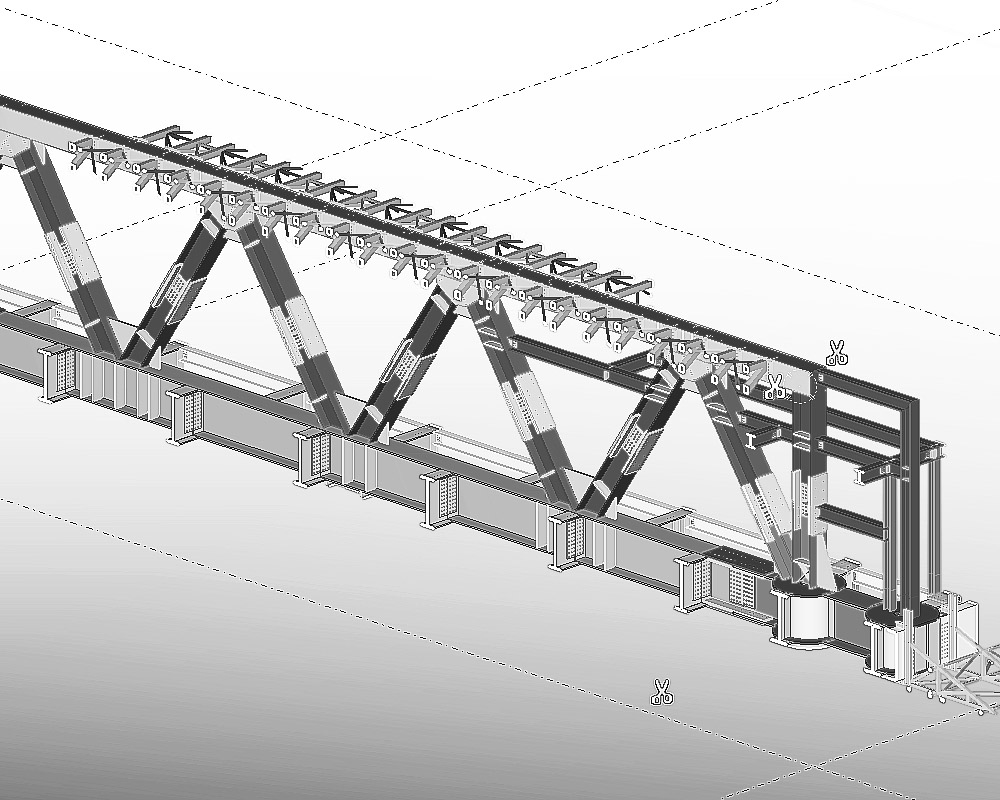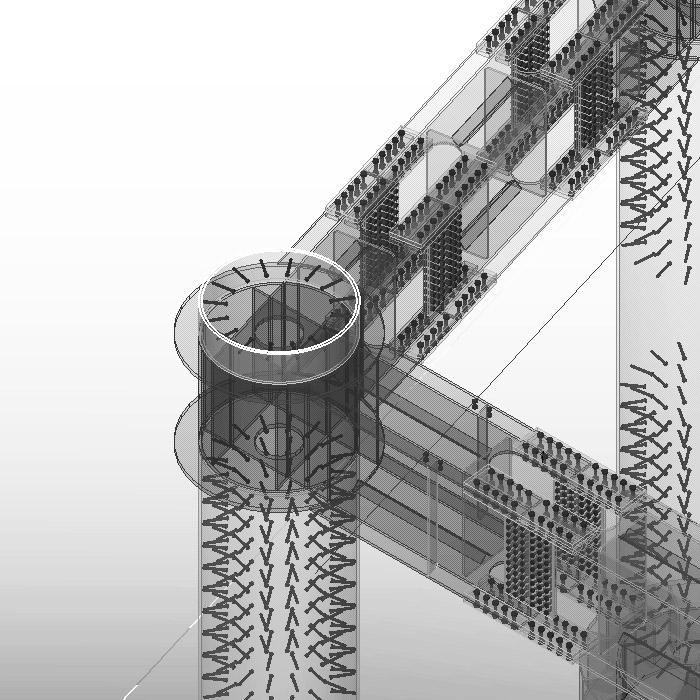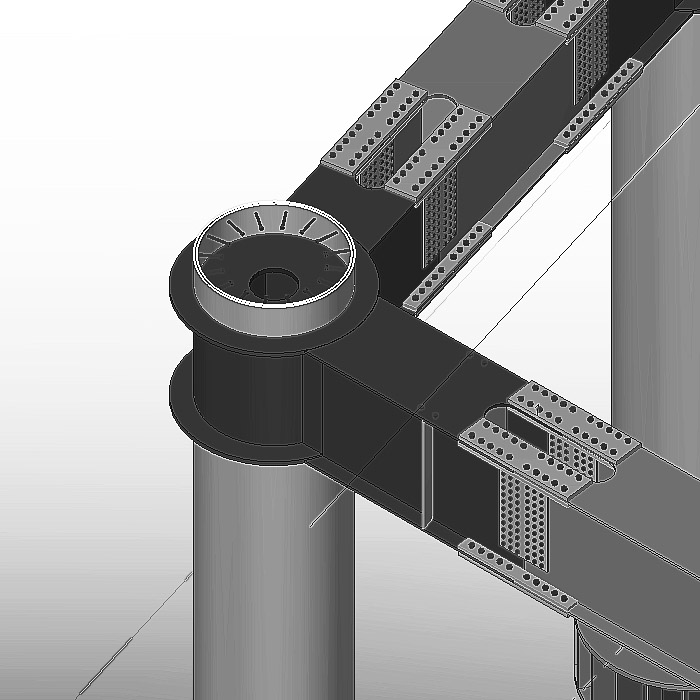安塔基亚博物馆酒店位于土耳其安提俄克市中心,根据史料,这里在罗马帝国统治时期是世界上第四大发达城市。基地面积约为20000平方米,毗邻基督教世界最重要的朝拜地之一——圣皮埃尔教堂。2009年,作为投资者的业主希望在此建造一座五星级酒店,并委托另一家建筑事务所设计了一个传统的酒店方案。然而施工开始时,基地上发现了重要的考古遗迹,因此文化和自然财产保护局勒令业主实行科学考古开发。在这个背景下,一个由跨学科专家组成的科学委员会成立了,其中包含考古学家、历史学家、文物保护专家和建筑师,共同评估项目进程。在该委员会的监督下,这里挖掘出了大量属于不同文明的重要考古发现,使得建造一栋传统建筑不再可行。正是此时,EAA受到科学委员会的成员邀请,参与到了项目的设计之中。
▼酒店外观,external view of the hotel ©Emre Dörter
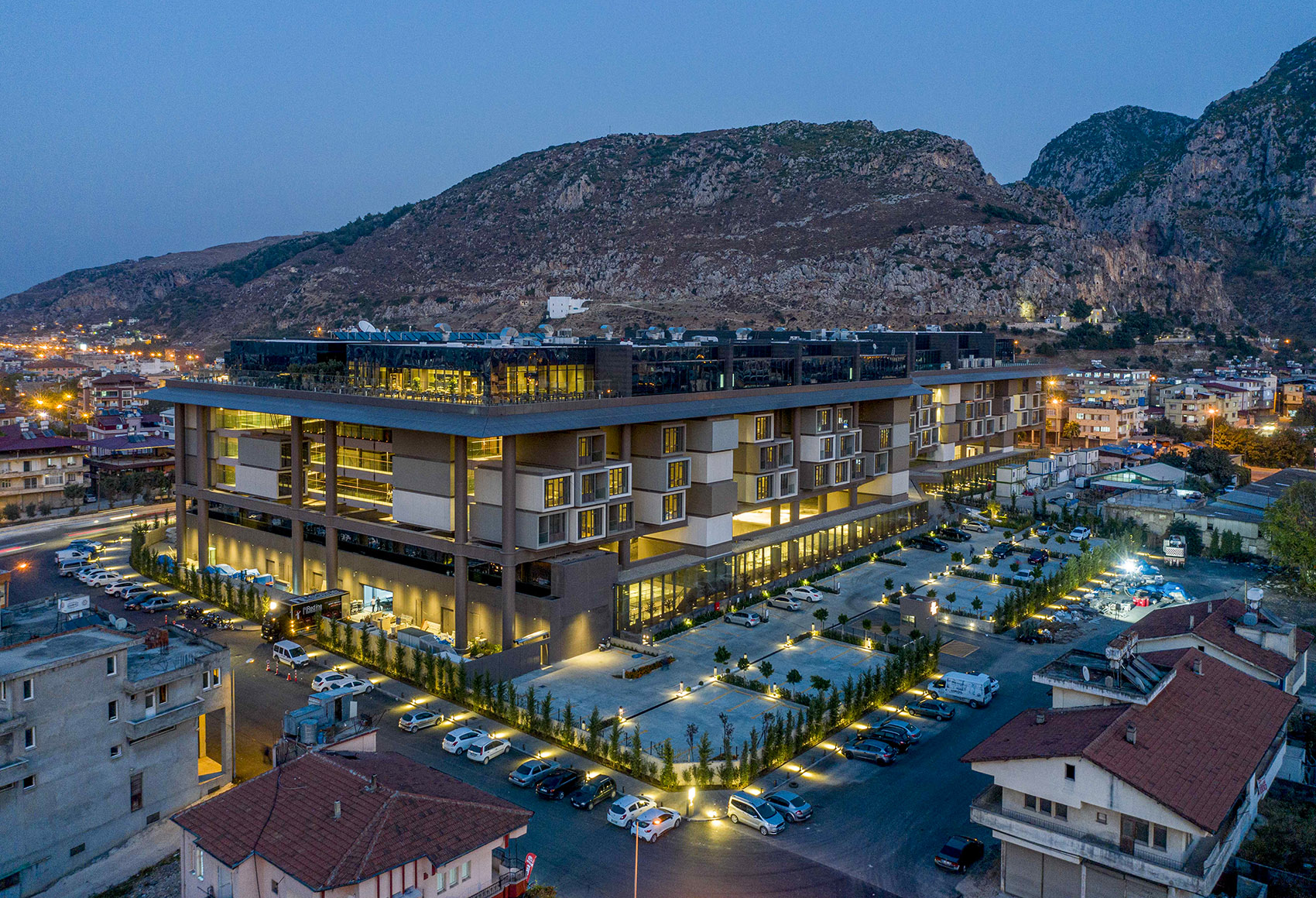
The Museum Hotel Antakya is located at the center Antioch which is used to be known as the world’s fourth-largest developed city during the Roman Empire’s reign according to the ancient sources. The site – approximately 20,000 sqm – is very close to Christian World’s one of the most important pilgrimage sites, St. Pierre Church. In 2009, the client, an investor who wished to build a five-star hotel, started excavation for a conventional hotel project which was already commissioned to a different architectural group. As soon as the process began, significant archeological artifacts were found and at that point the Cultural and Natural Assets Protection Board demanded the investor to initiate a scientific archeological excavation. In this context, a scientific committee was constituted of a trans-disciplinary group of experts, including archeologists, art historians, restorators and architects to evaluate the process. Under the supervision of the committee, a significant number of remarkable archeological findings belonging/that belonged to different civilizations were discovered and their exploration unfolded the ‘impossibility’ of construction of a conventional building on this land. EAA’s involvement with the project begun just then upon a call from a member of the scientific committee.
▼项目鸟瞰,位于城市中心,aerial view of the project located in the center of the city ©Emre Dörter

▼酒店沿街外观,external view of the hotel along the street ©Emre Dörter
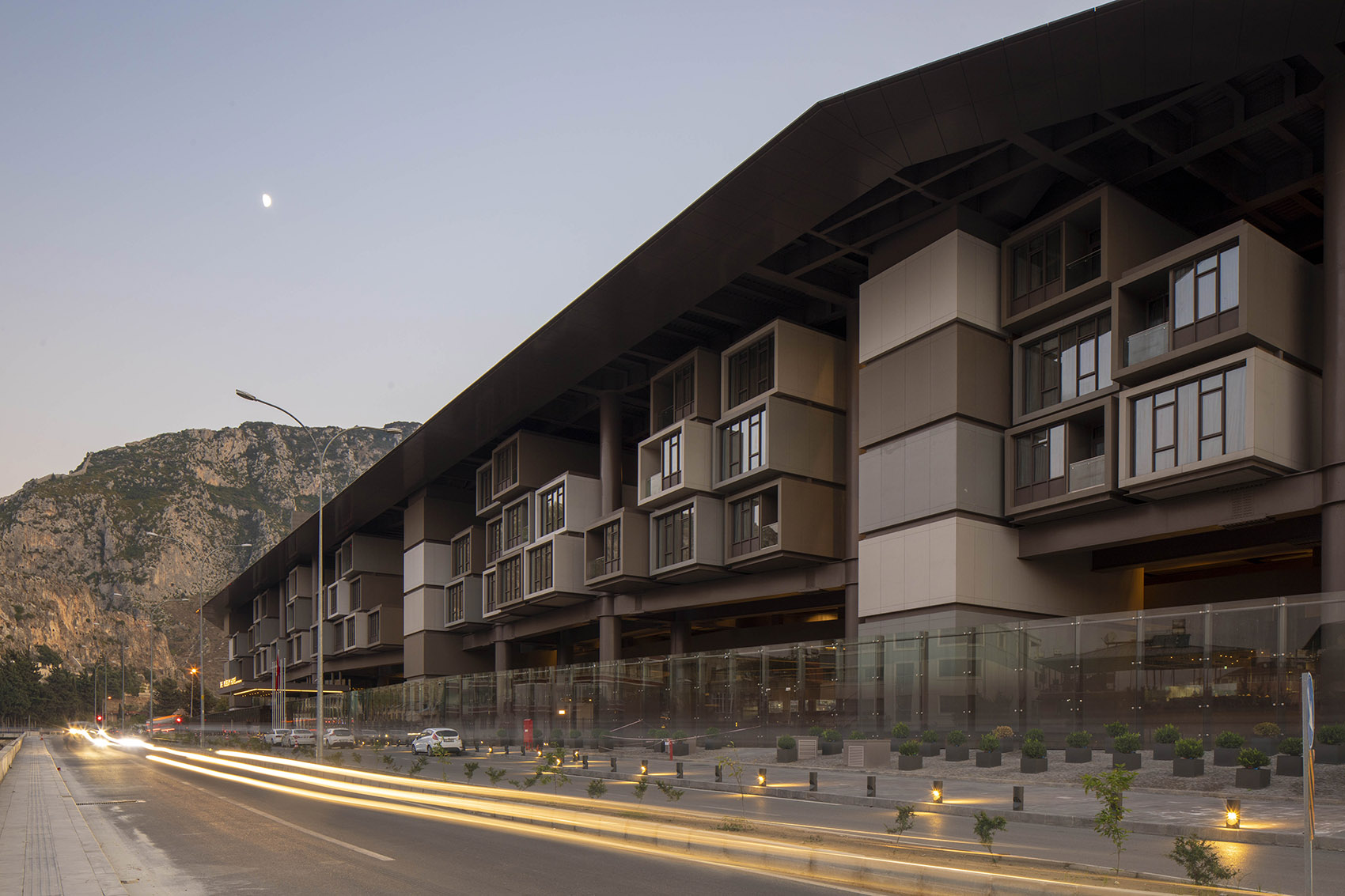
▼由客房模块组成的立面,facade made of hotel room modulars ©Cemal Emden
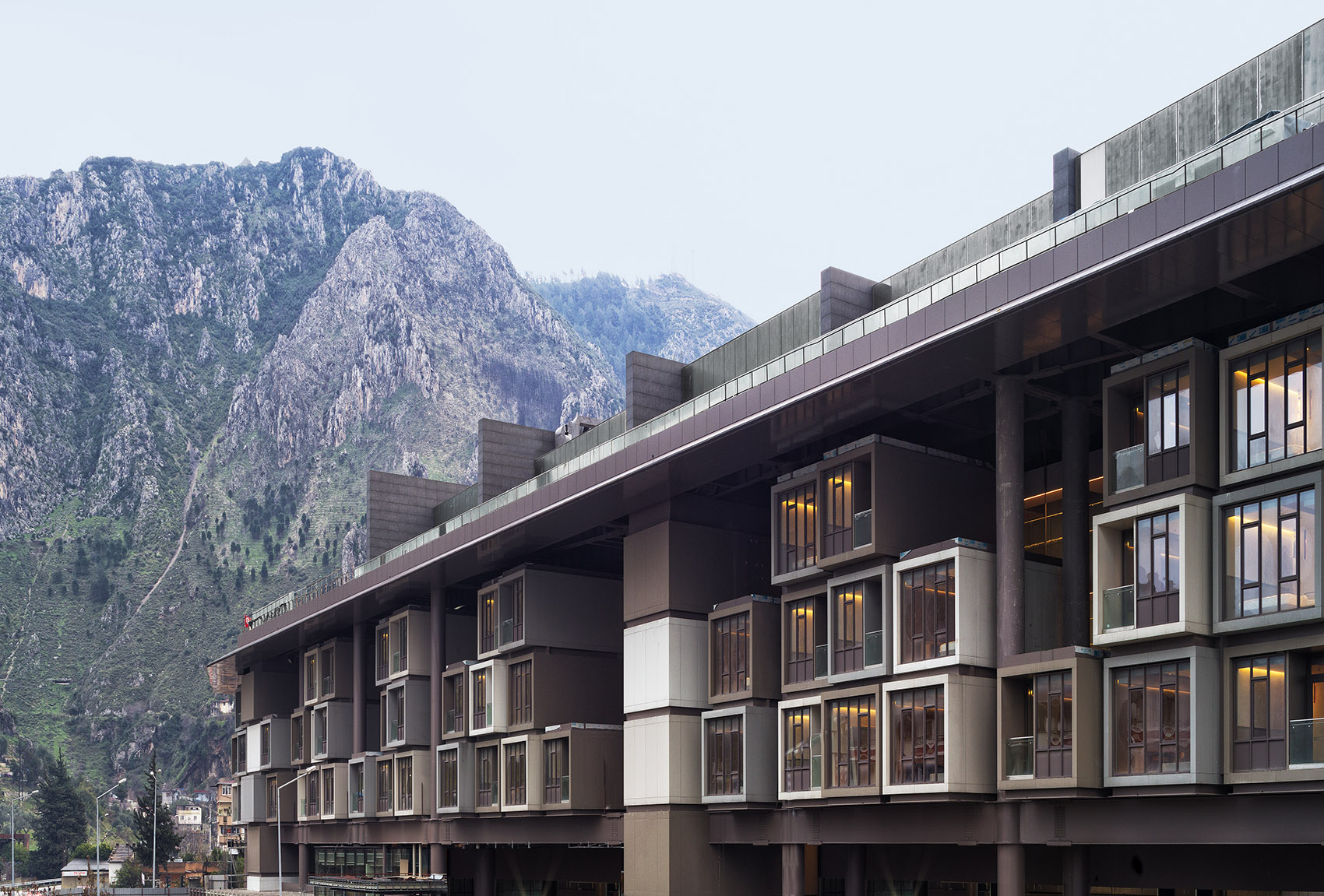
▼侧立面,side facade ©Cemal Emden
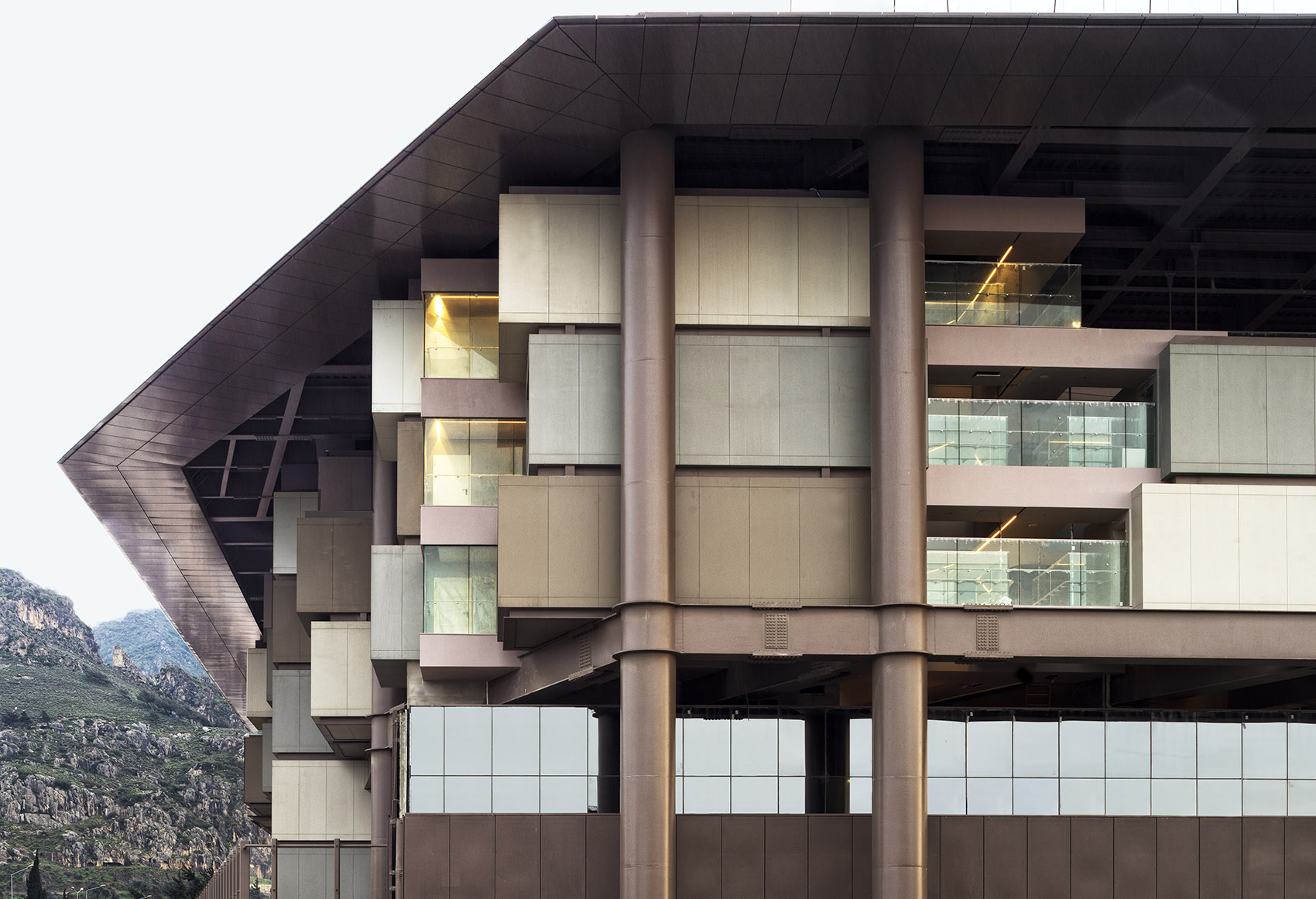
▼立面细部,closer view to the facade ©Emre Dörter
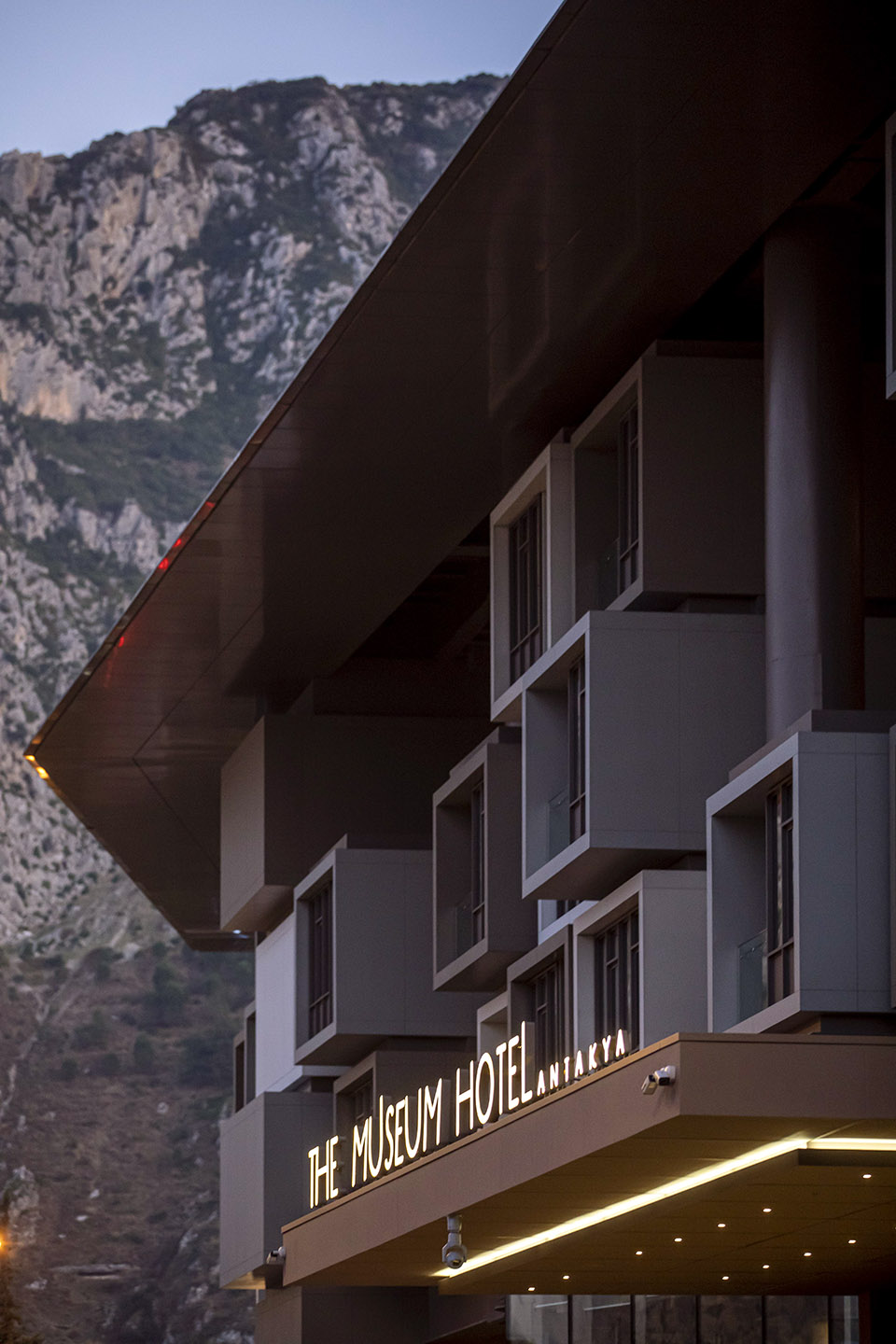
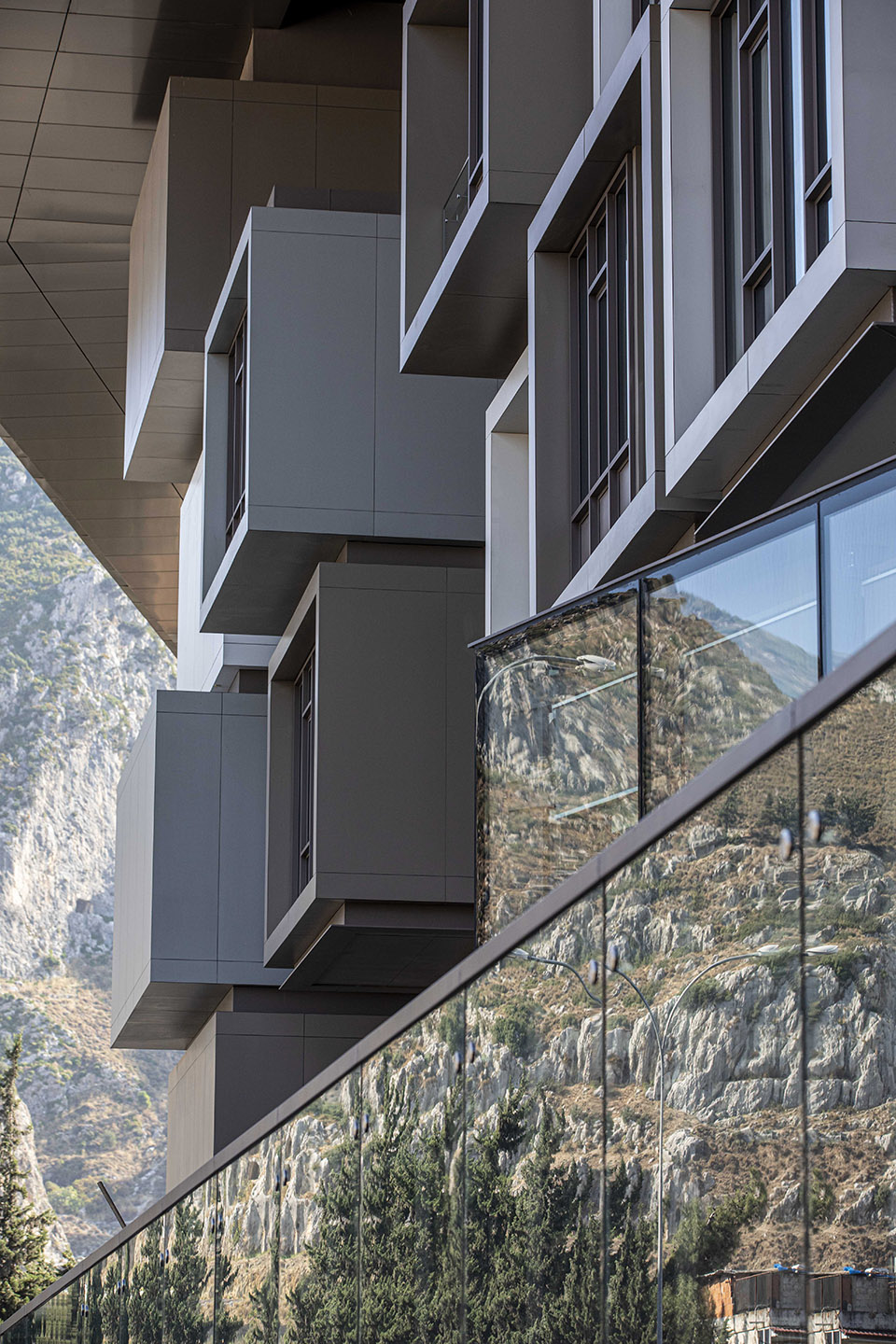
考古发现的重要性和由其产生的各种限制,以及酒店严格的功能规范相互角力,成为了组成项目文化和物理框架的主要决定因素。这一挑战颠覆了传统的酒店原型,提出了将展示考古文物的公共博物馆与酒店整合在一起的设计概念。最终,这座独特的建筑以此种形式展现在了人们面前,不同社会阶层的人可以在这里相聚,公共与私人空间无缝共存。
The tension between the significance of archeological findings, their restrictions and the hotel’s strict programmatic codes was the main determinant that constituted the contextual and physical frame of the project. This strain subverted the conventional hotel typology and it put forward the idea of integrating a public museum that would exhibit the restored archeological artifacts. The unique building program that came into existence in this way and which enabled the togetherness of different social classes feeding each other reinforced the idea of a smooth coexistence of public and private.
▼酒店内部空间概览,overall view of the interior of the hotel ©Studio Majo
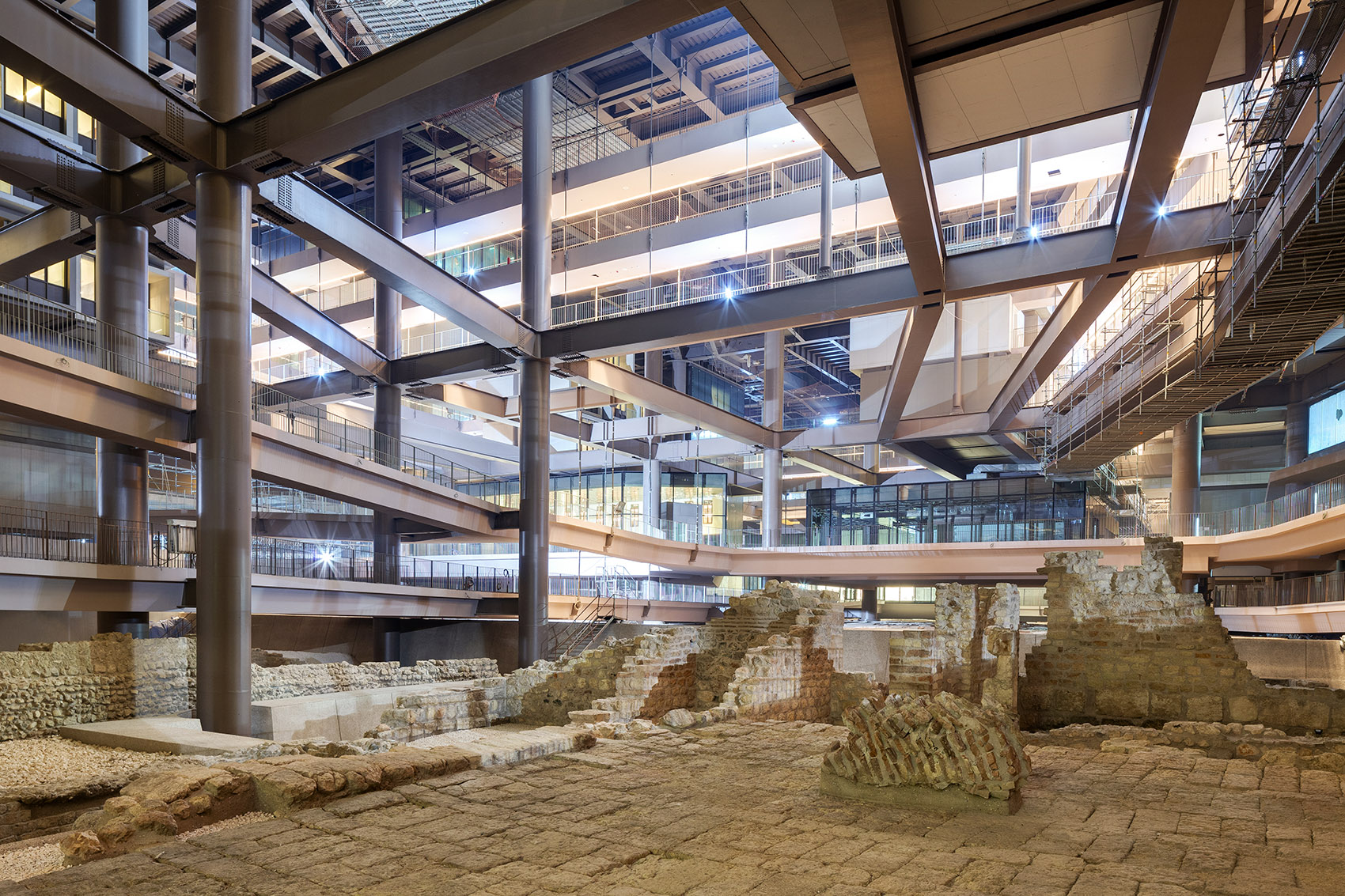
▼考古遗迹,archeological artifacts ©Cemal Emden

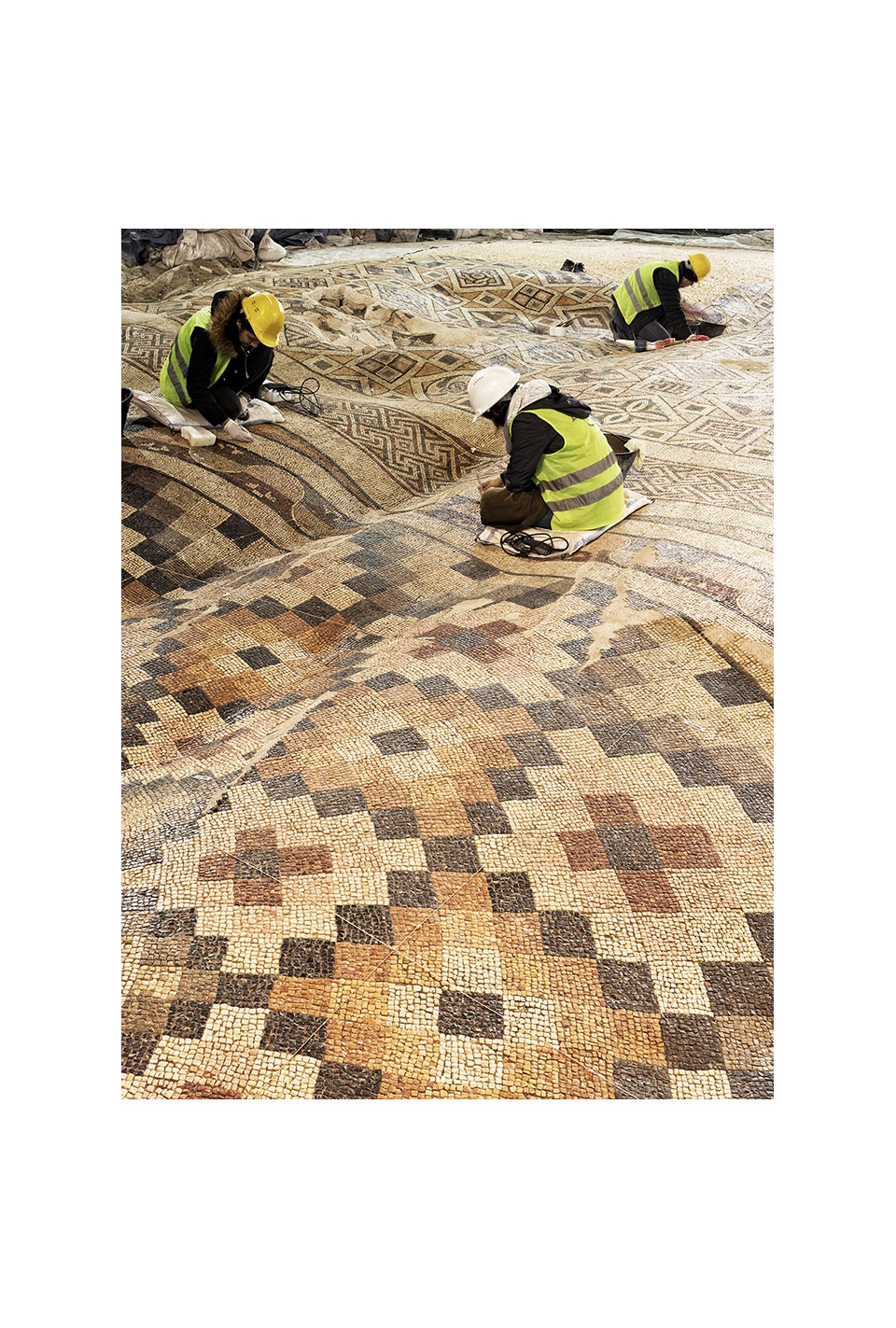
专家组紧密合作,确定了尚未被发现的文物的准确位置以及全部细节。遗迹上方25米处搭建了一片保护性顶棚,古老的河床从基地中部流过。舞厅、餐厅、夜总会、健身房和游泳池等通常出现在一层的酒店常见设施被设置在屋顶层,其中开放的庭院和景观元素参考了当地传统建筑形式。距遗迹15米的较低楼层上建造了由钢梁组成的网格结构。工人通过吊车将工厂组装的预制客房模块间隔放置在该系统上。房间下方,及遗迹上空10米处为酒店大堂和休闲区。各楼层空间相互渗透流通,与考古基地产生了丰富的视觉联系。
▼屋顶庭院,roof courtyard ©EAA Archives
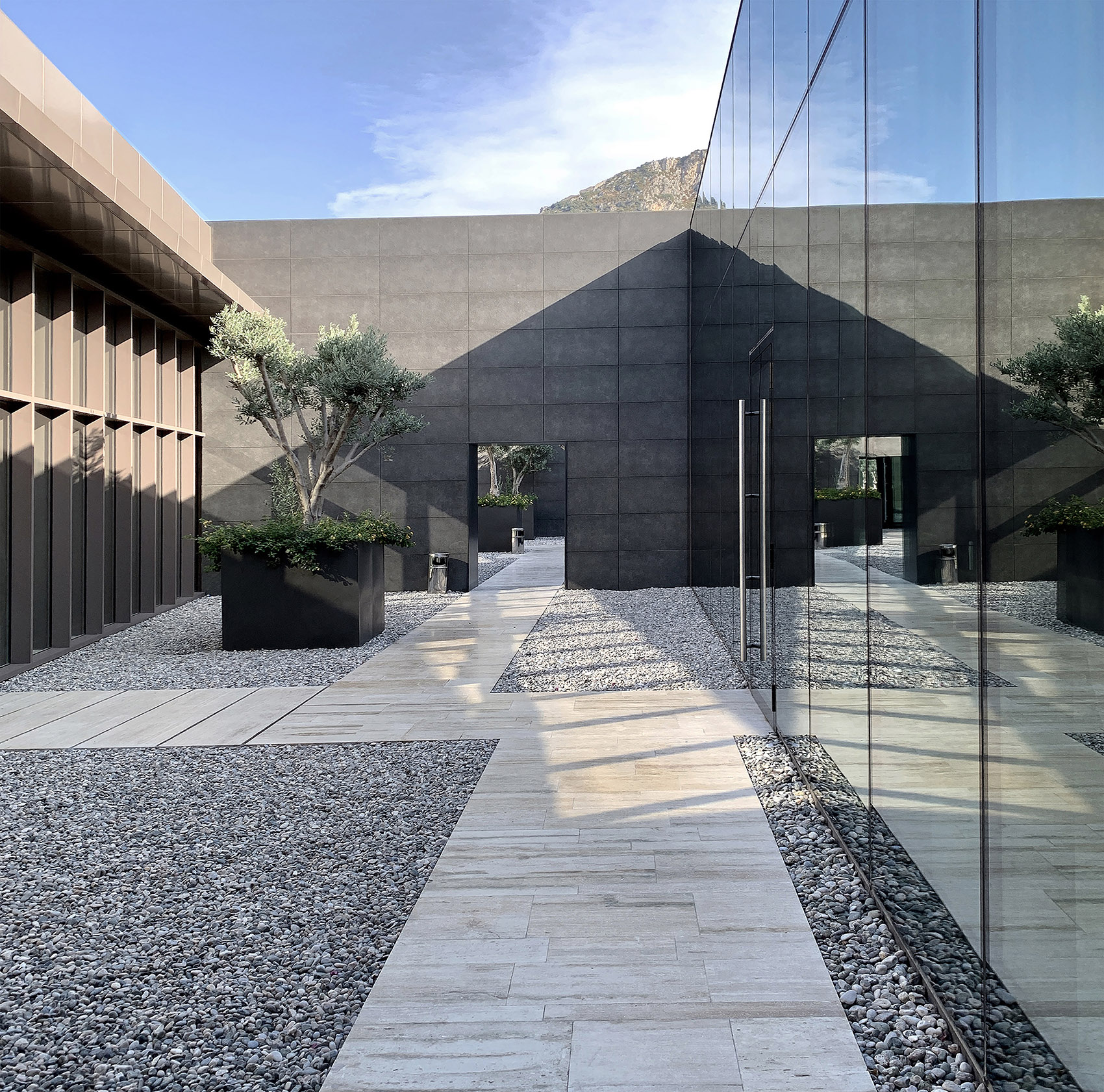
▼屋顶的功能空间,functional facility on the roof ©EAA Archives

▼客房层概览,overall view of the guest room level ©Russo Roberto
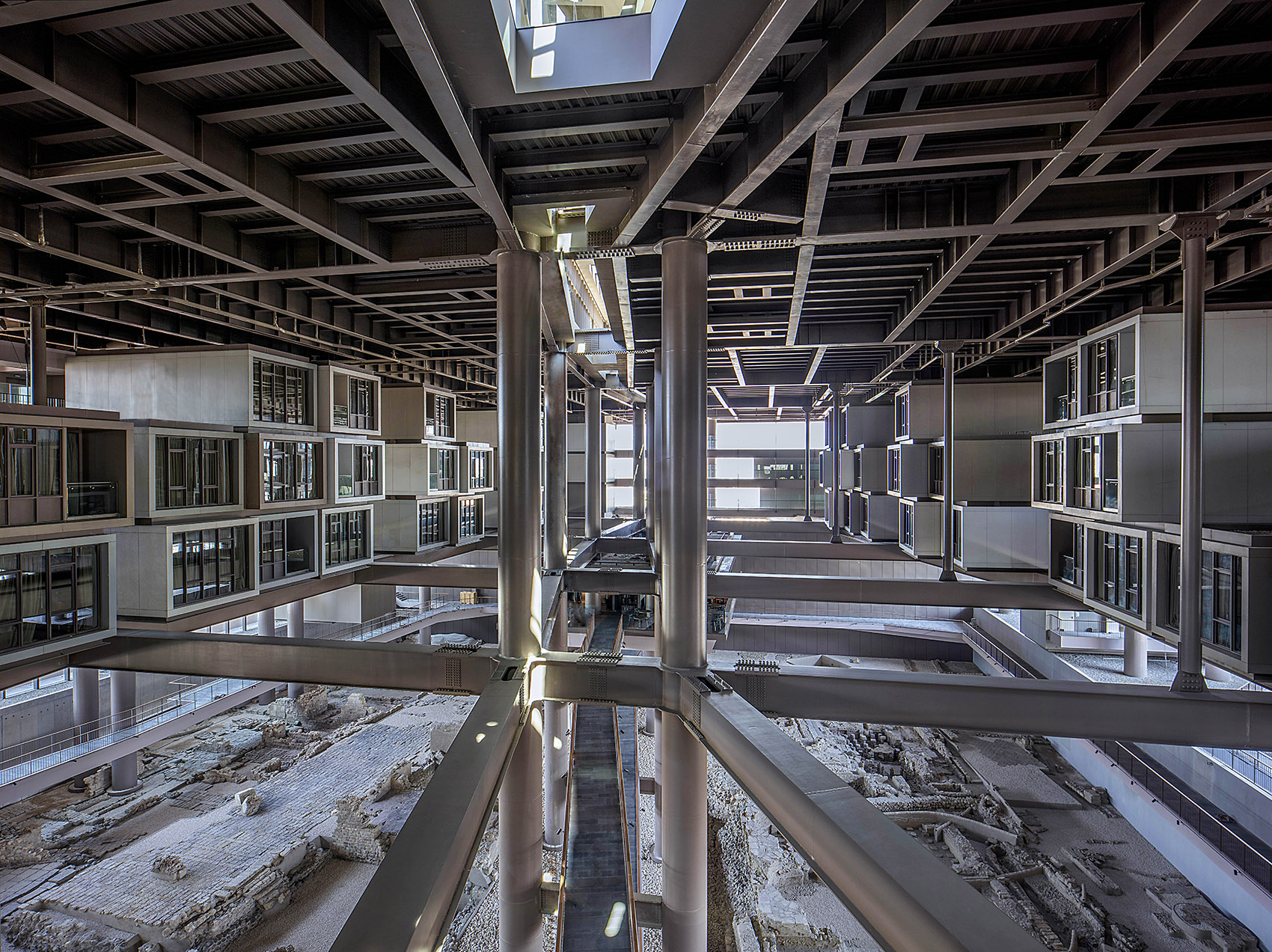
▼钢梁组成结构网格,structural grid composed of steel beams ©Emre Dörter
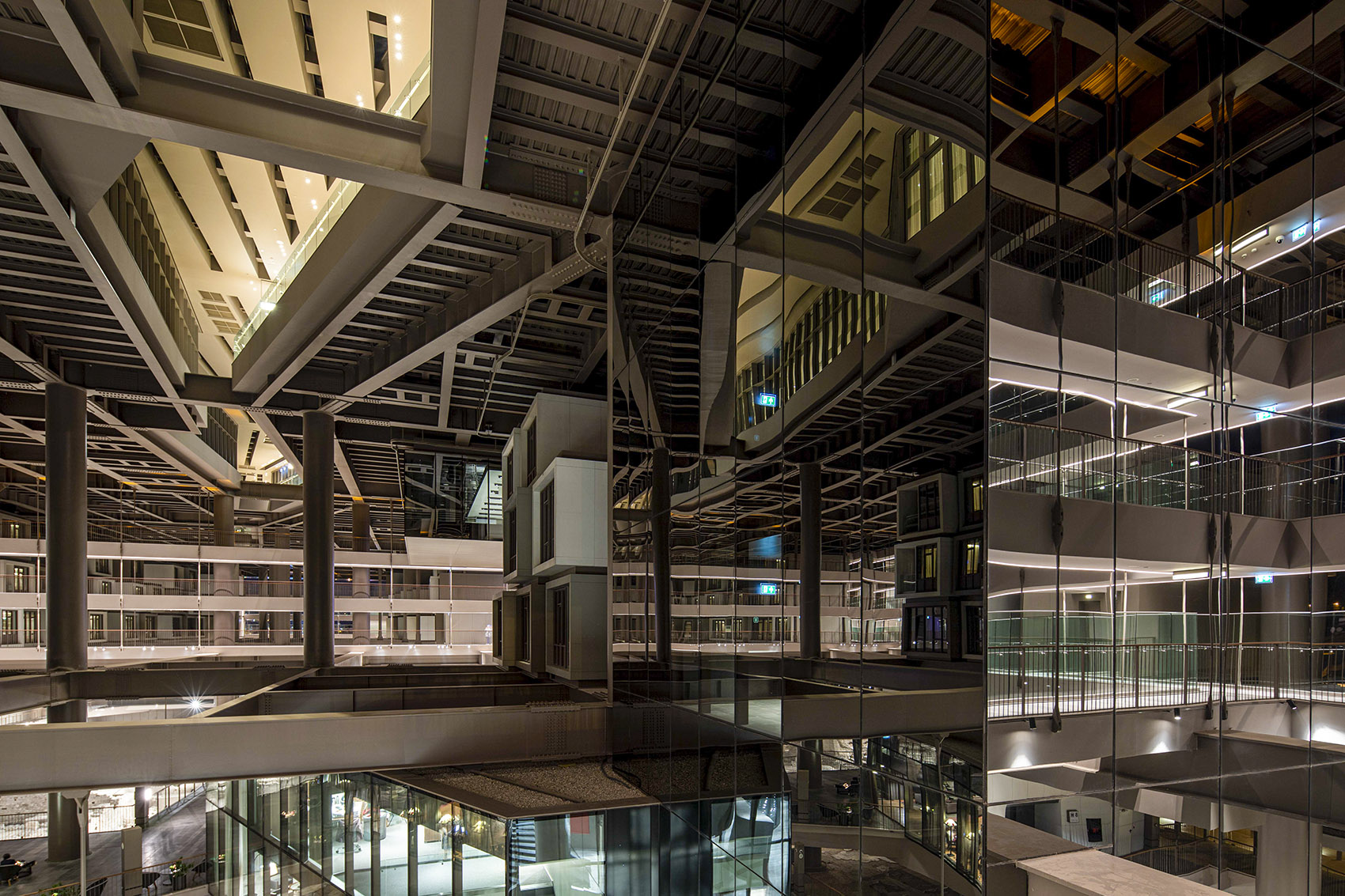
▼客房模块放置在网格中 room modulars placed on the grid ©Emre Dörter
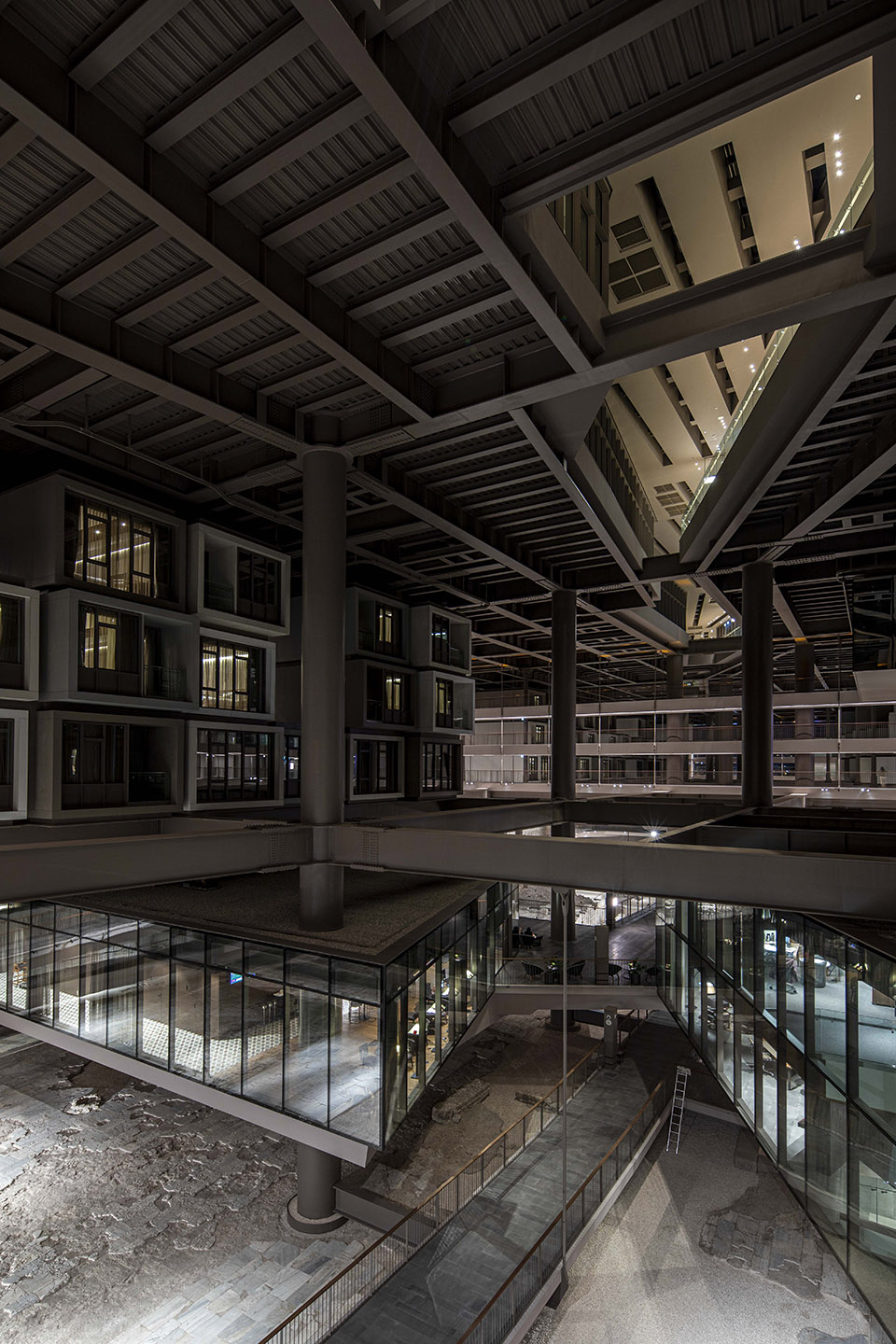
▼客房模块细部,closer view to the room modulars ©Russo Roberto
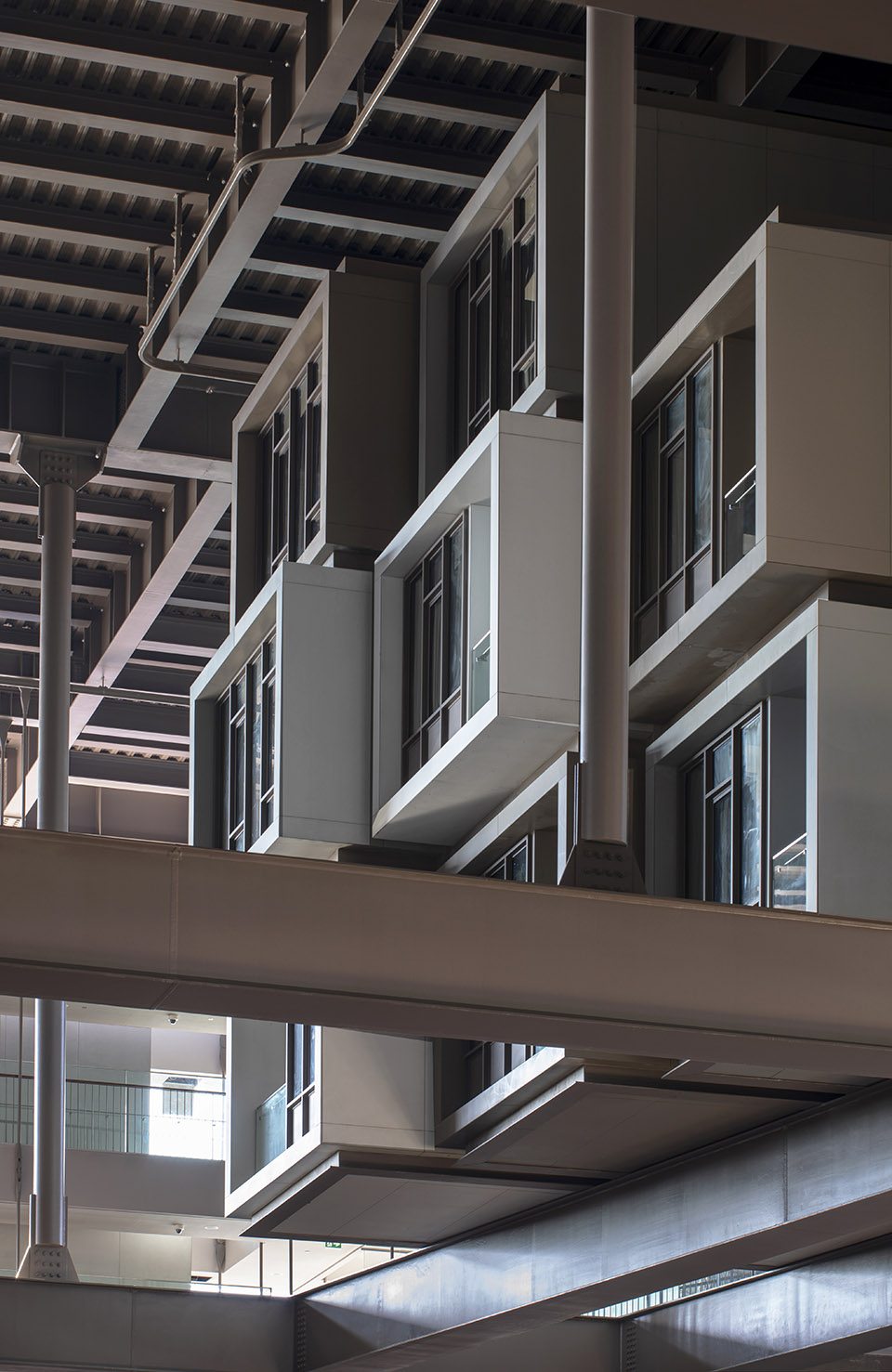
▼客房下的酒店大堂,hotel lobby under the guest rooms ©Studio Majo
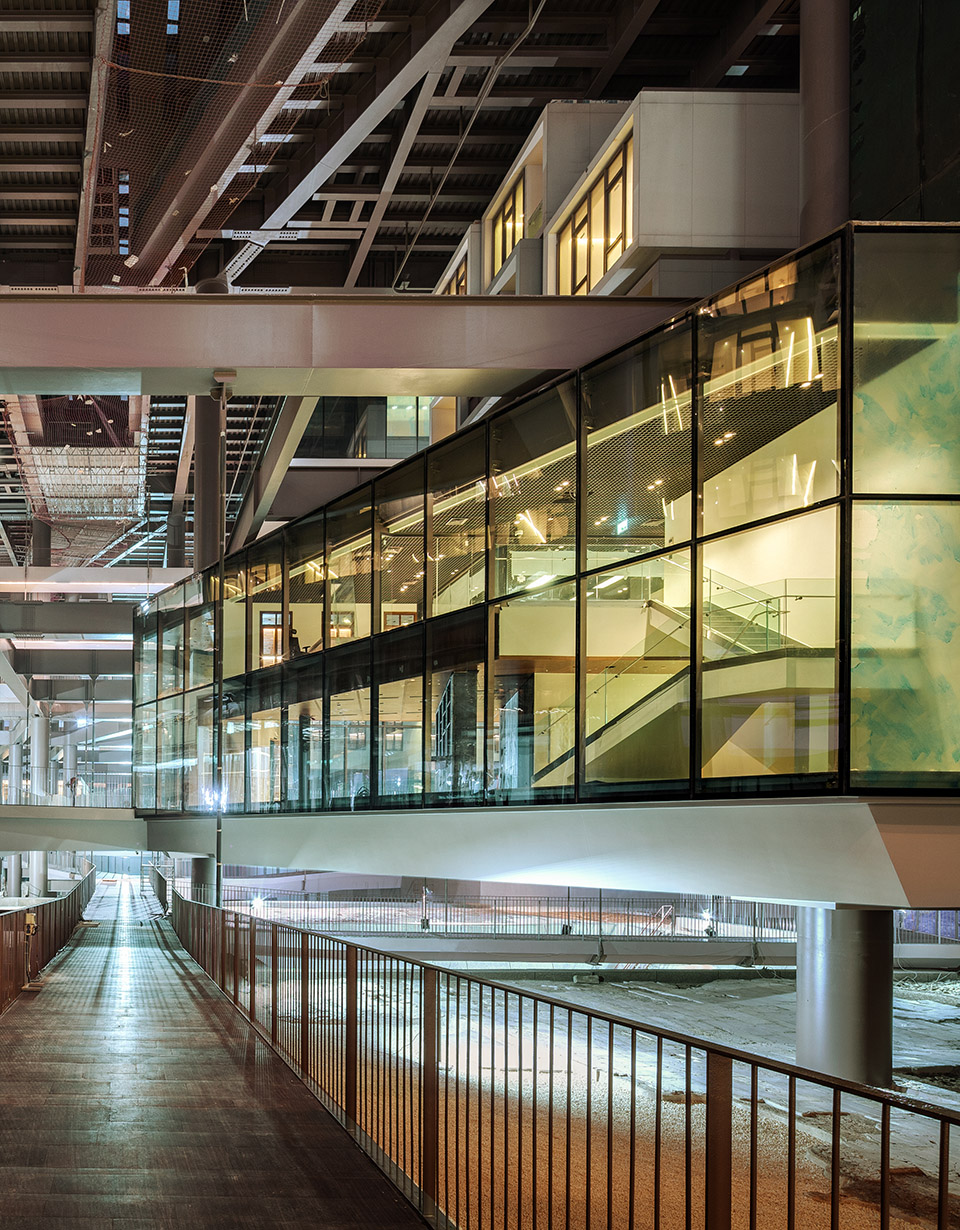
▼俯瞰通透的大堂体块,look down at the transparent volume of the lobby ©Studio Majo
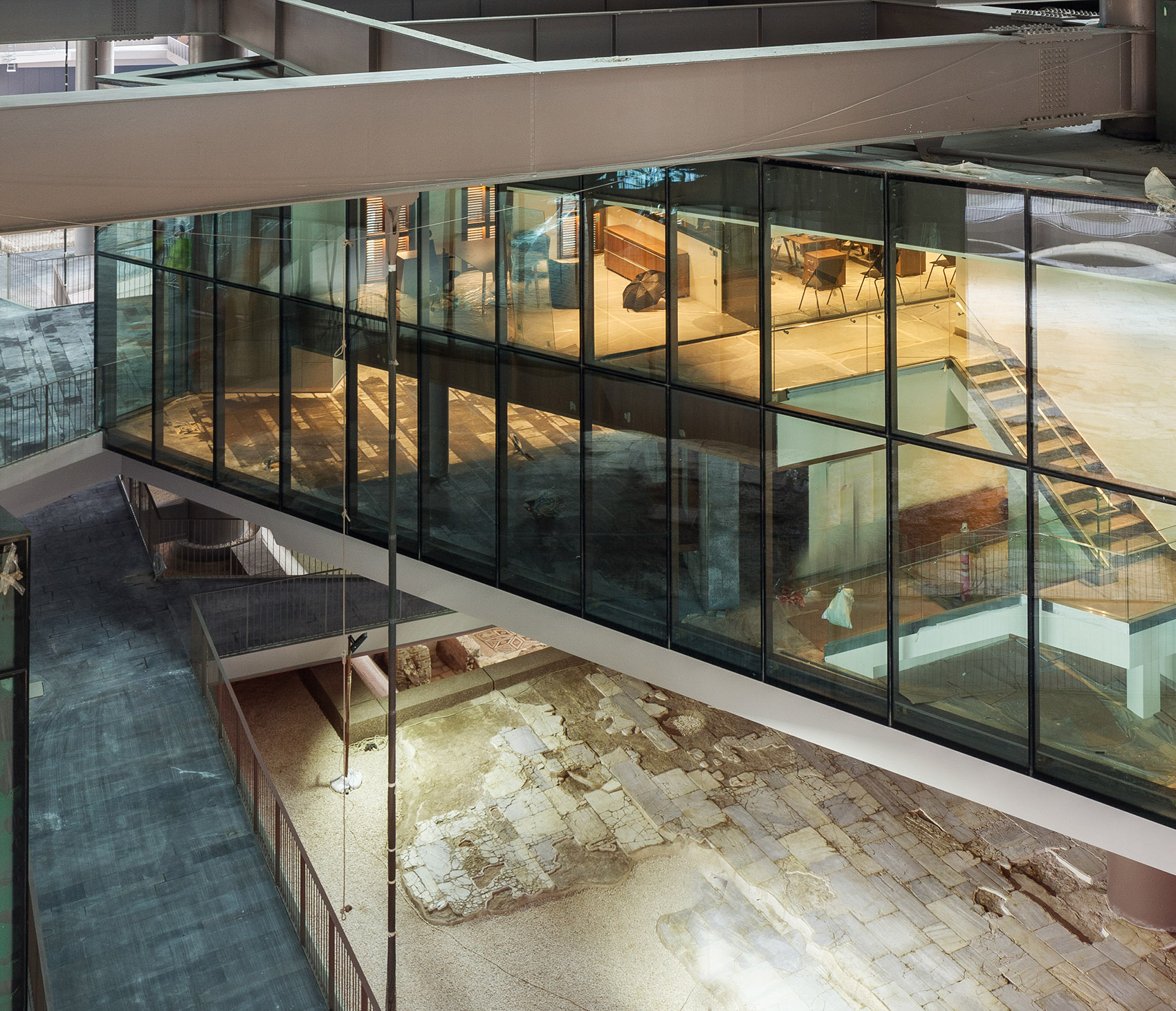
▼大堂内部,inside the lobby ©Studio Majo
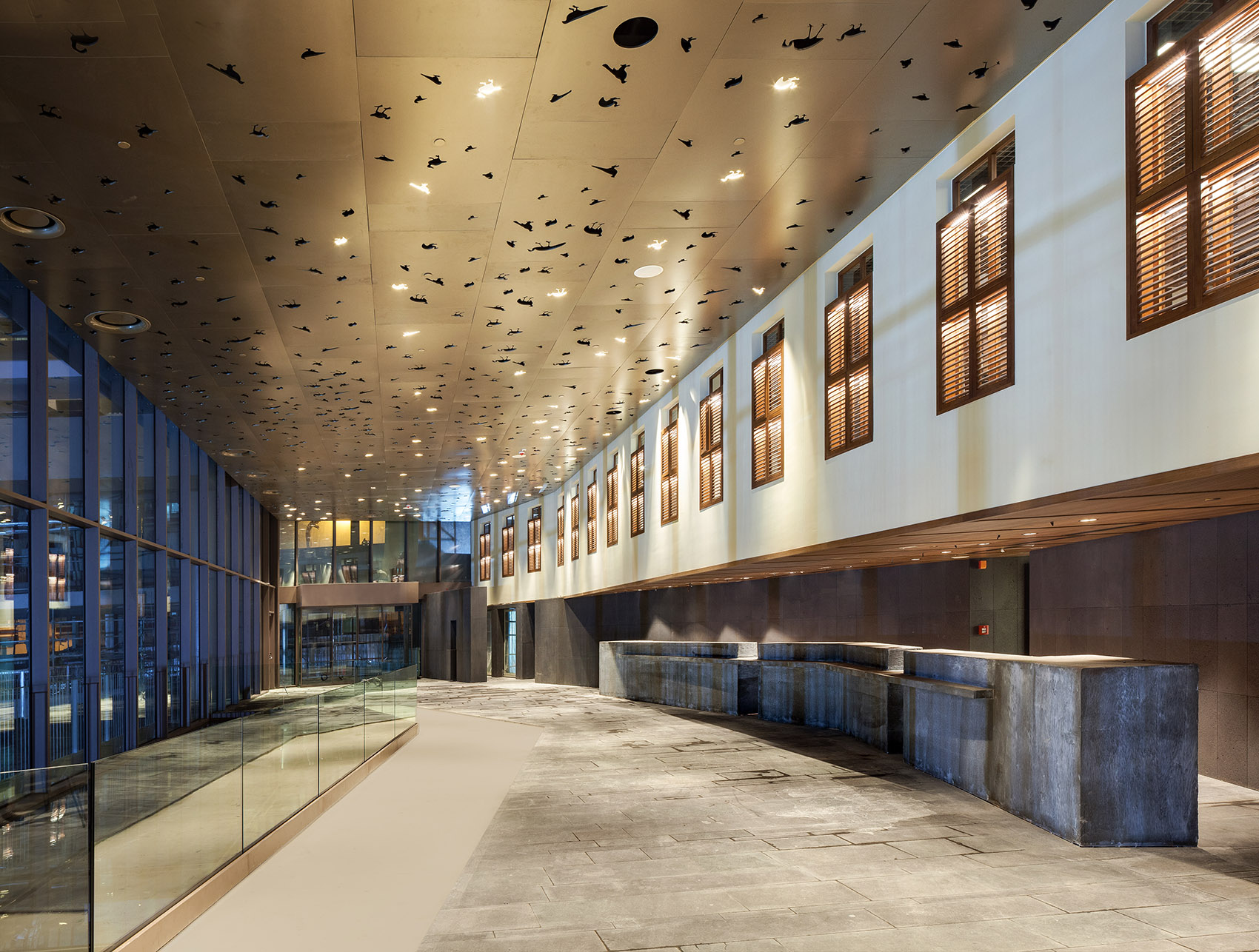
▼透过玻璃地面可以看到下方的遗迹 view of the archaeology site beneath through the transparent flooring ©Studio Majo
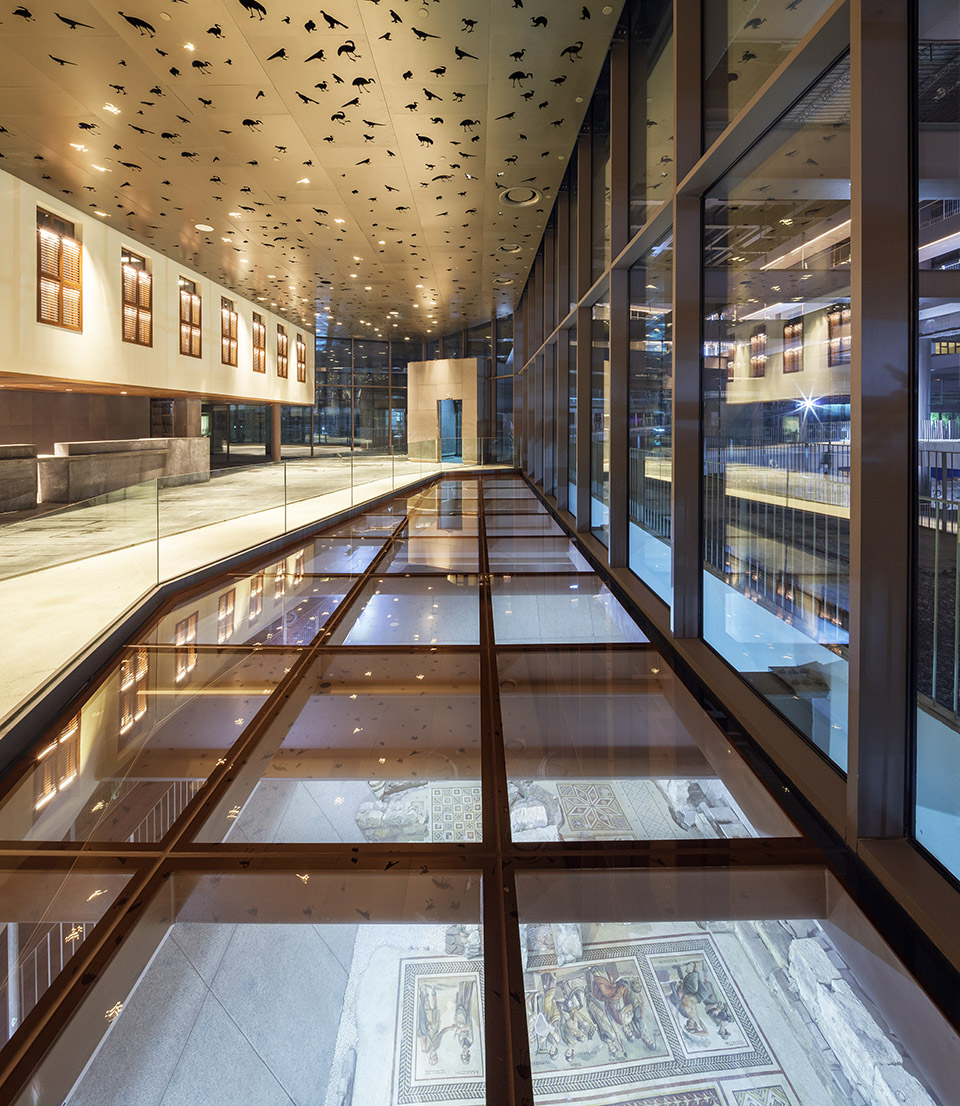
▼连廊上的休息空间,resting space on the corridor ©Emre Dörter
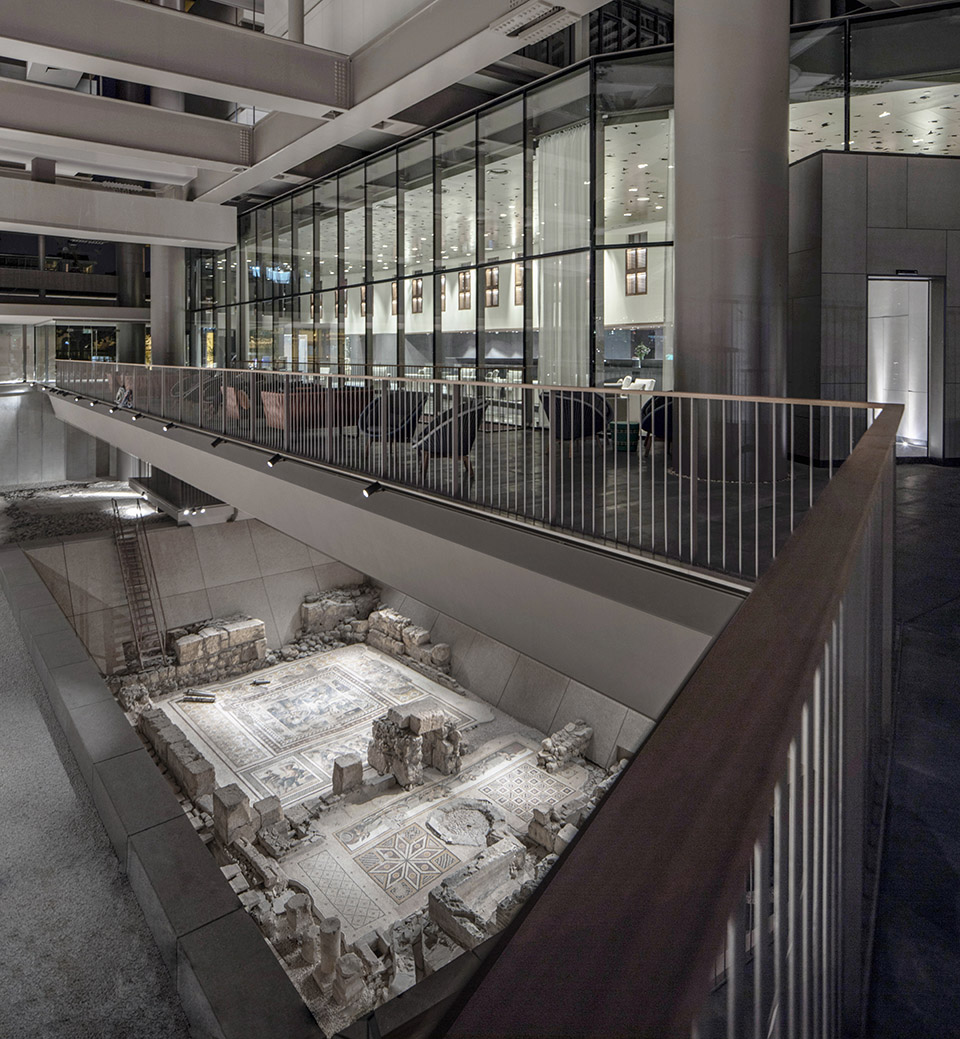
▼酒吧,bar ©Russo Roberto
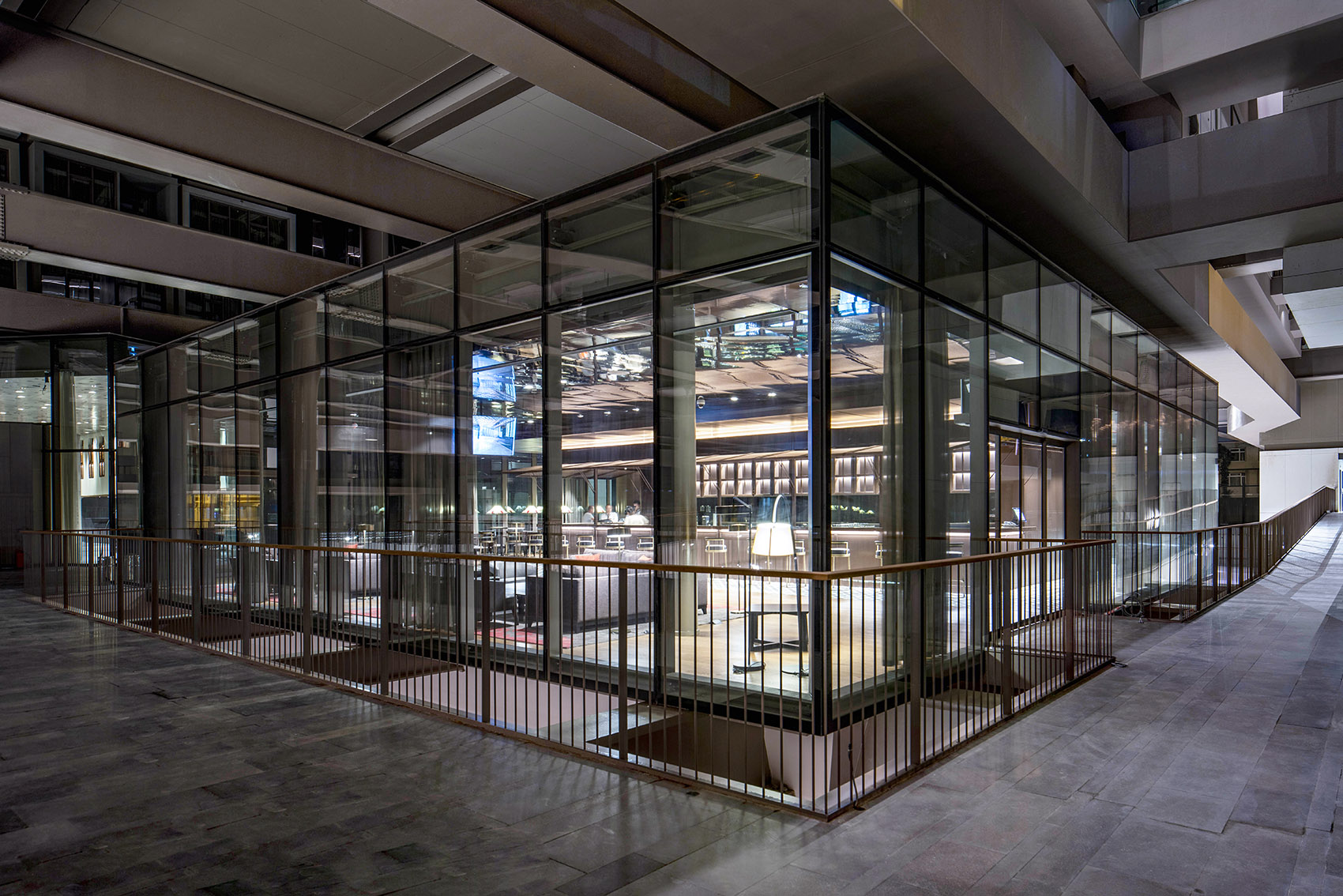
With the intense coordination of the group of experts, the exact locations of the not yet discovered artifacts were determined with all details. A protective canopy/roof approximately twenty-five meters above the archeological ruins was placed on strong composite piers that are located on spots with no ruins and the old river-bed passing through the centerline of the site. Common hotel facilities such as ballroom, restaurant, night club, gym and swimming pool that are mostly placed on the ground floor in any conventional hotel design, were placed on this roof level by taking the traditional local architecture as a reference with its open courtyards and landscape elements. On the lower level, approximately 15 meters above the findings, a grid structure was built with steel beams. The off-site assembled prefabricated hotel room modules were placed with interspaces above this system by the cranes. Just under the rooms, approximately 10 meters above the ancient ruins, the hotel lobby and lounge areas were designed. The spatial fluidity and permeability that continues through each floor enabled various visual connections to the archeological site.
▼施工过程,construction process ©EAA Archives
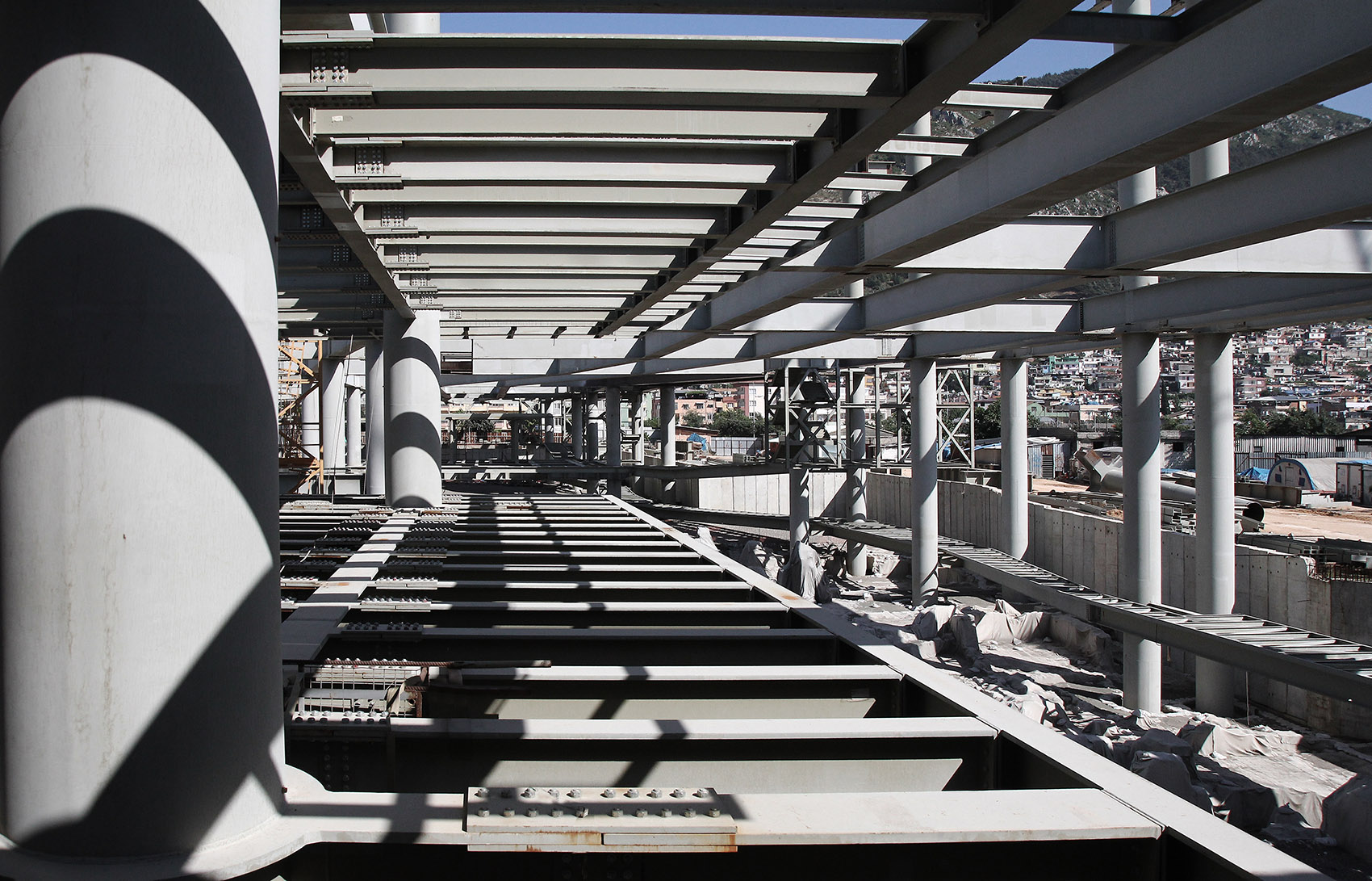
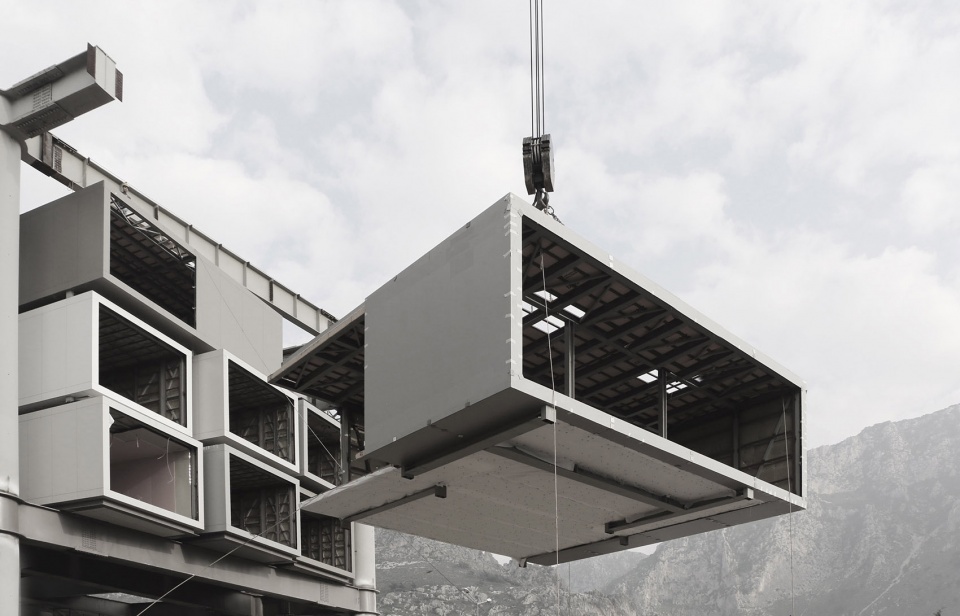

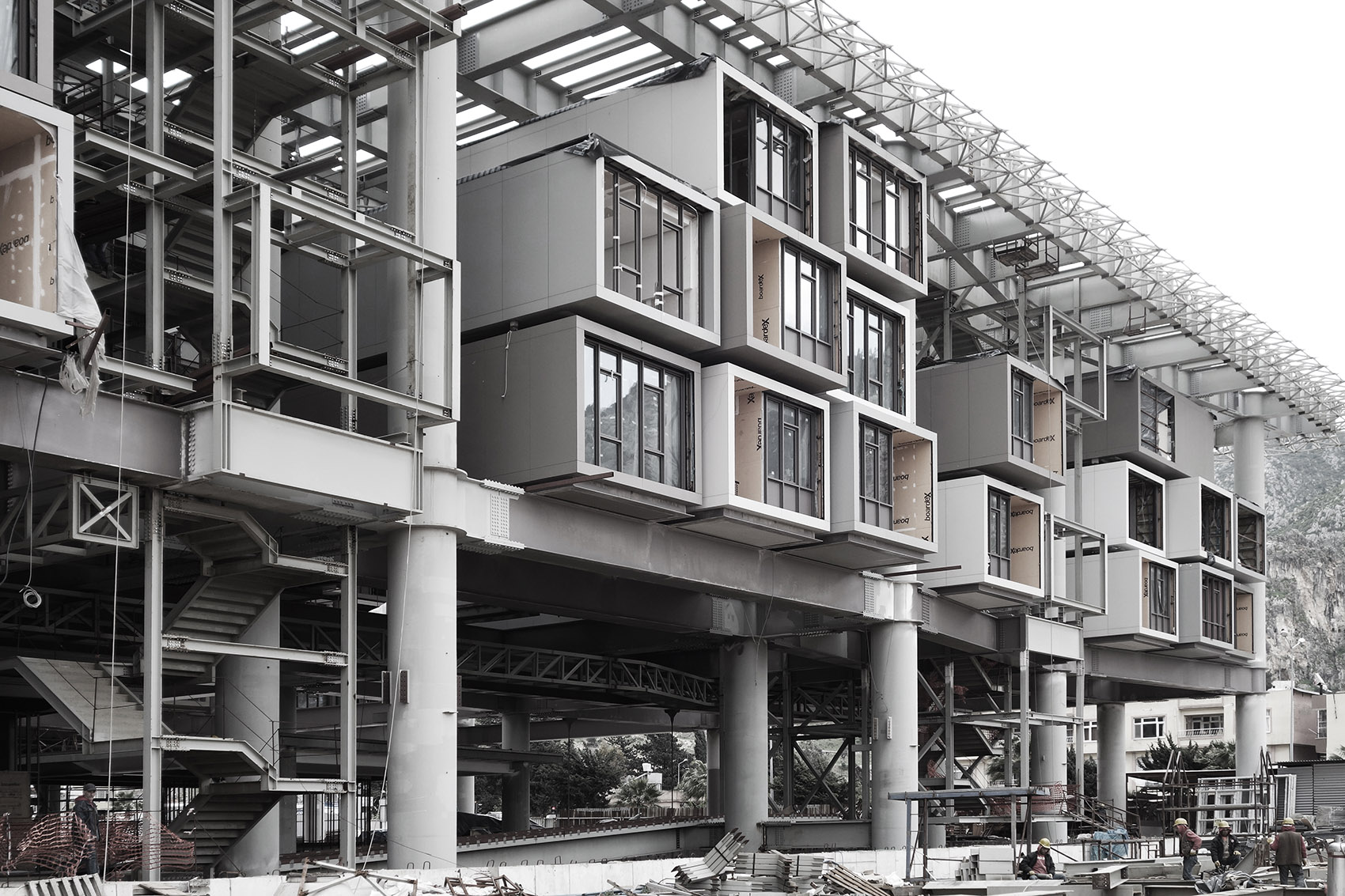
遗迹上方数米处设有一座考古博物馆和考古公园,与Kurtuluş大街相连,是连接基地和市中心的主要通道。借此,项目切实地开放为公众所用。在这样的框架下,流线系统由根据遗迹安排的悬桥和坡道组成,游客可以近距离观察文物而不与其发生物理接触。
▼博物馆入口体块,entrance volume of the museum ©Studio Majo
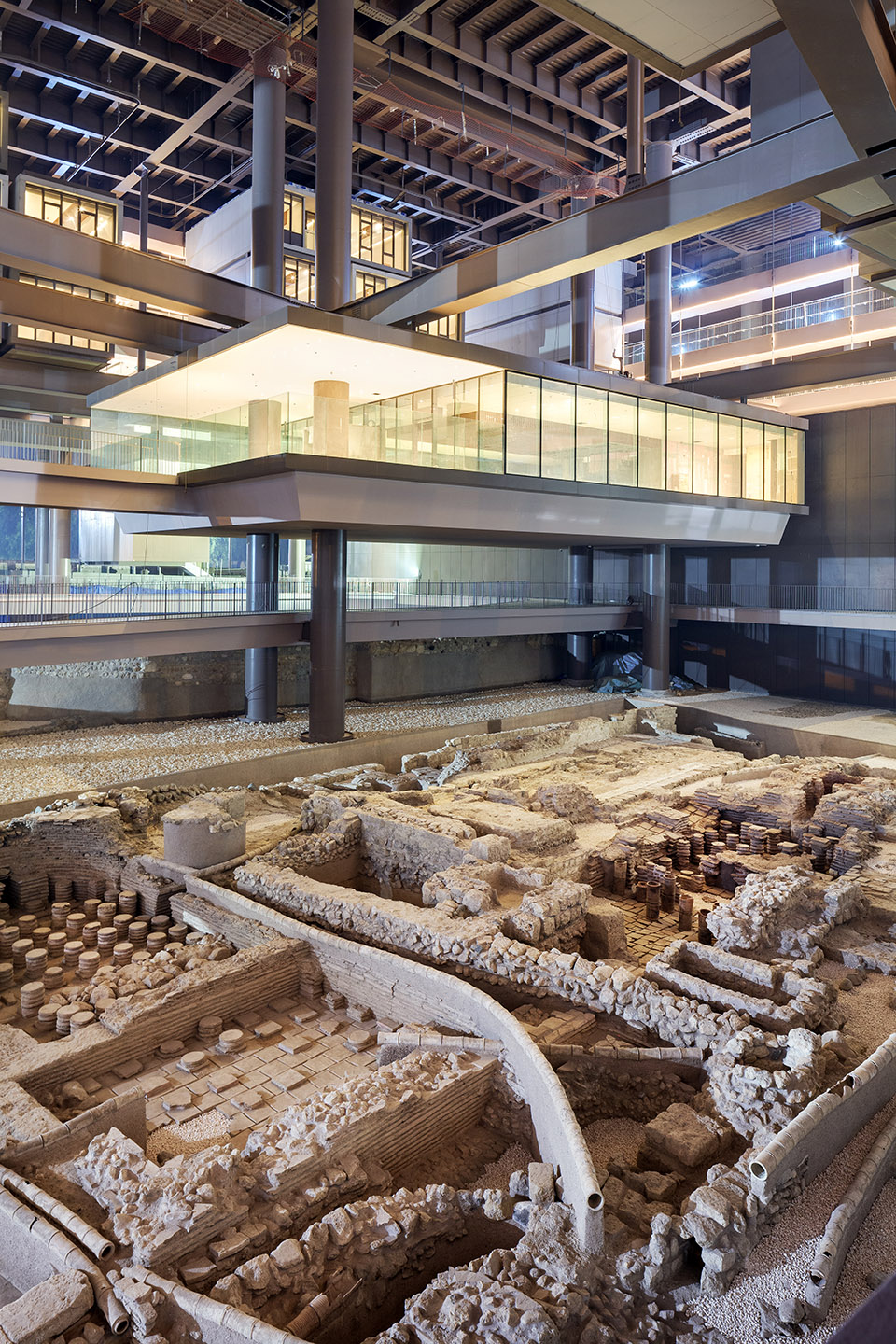
▼可以近距离欣赏文物的连廊,corridor provide close view to the artifacts ©Studio Majo
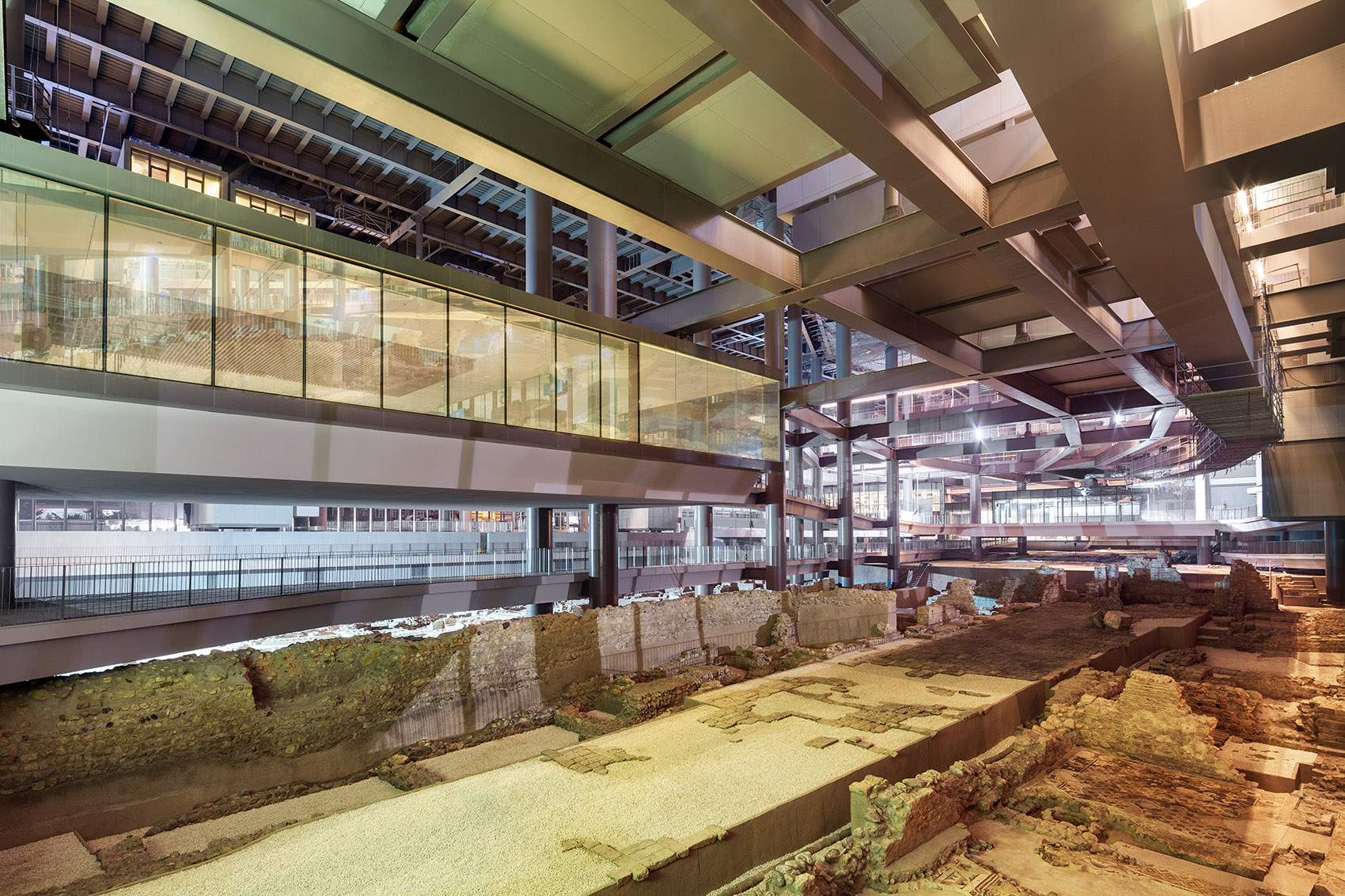
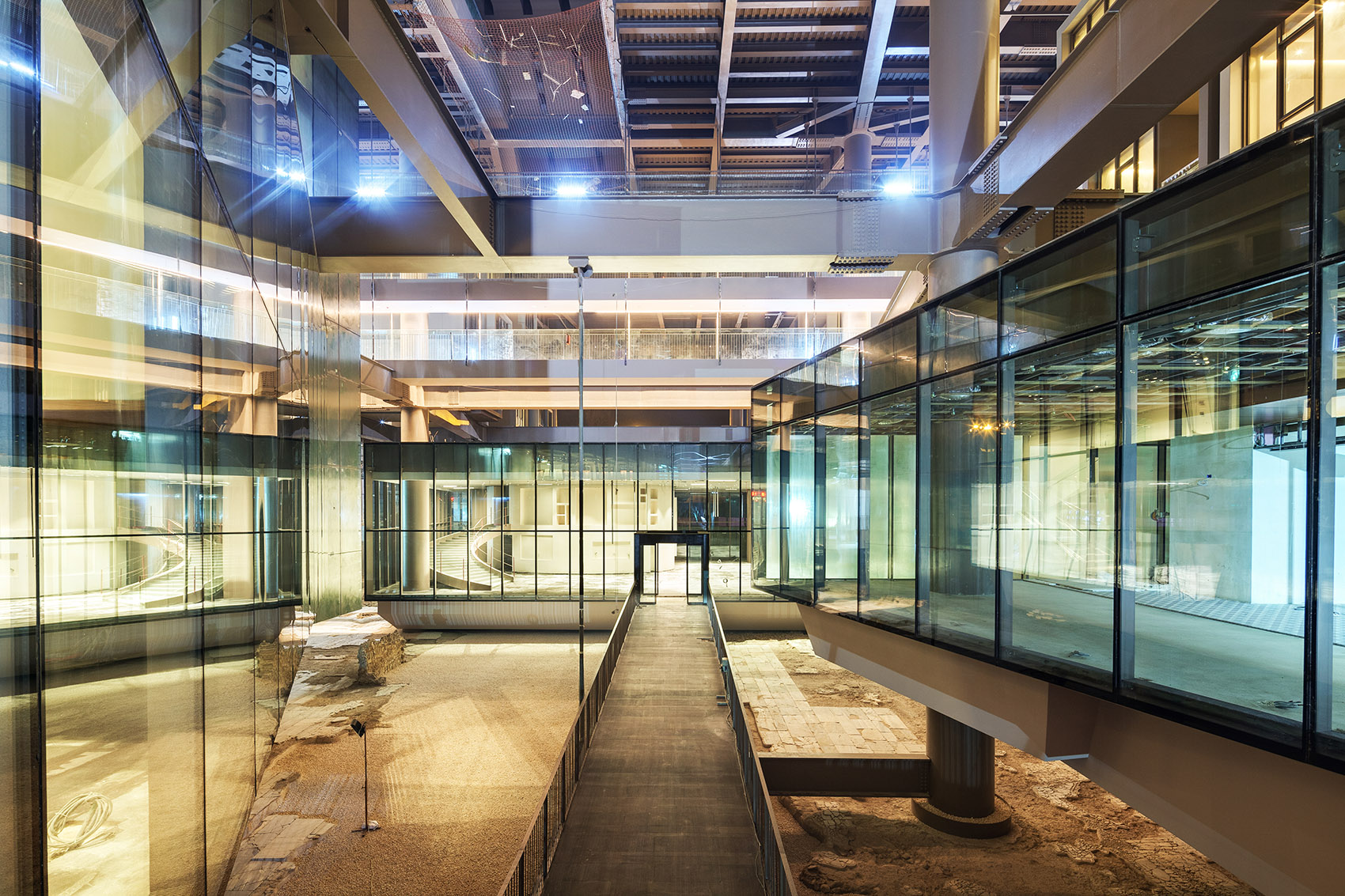
▼坡道与考古基地,ramps and the archaeology site ©Studio Majo
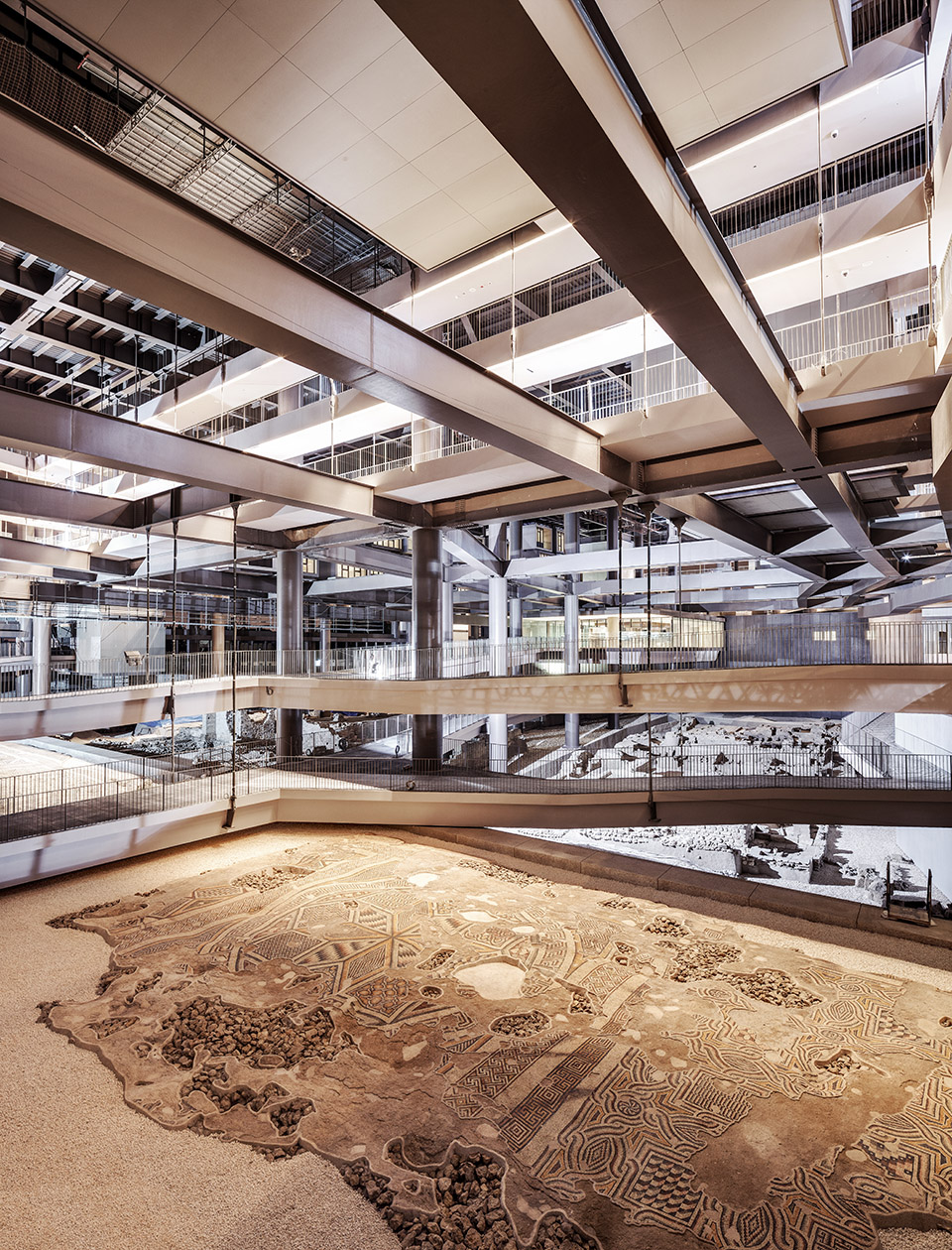
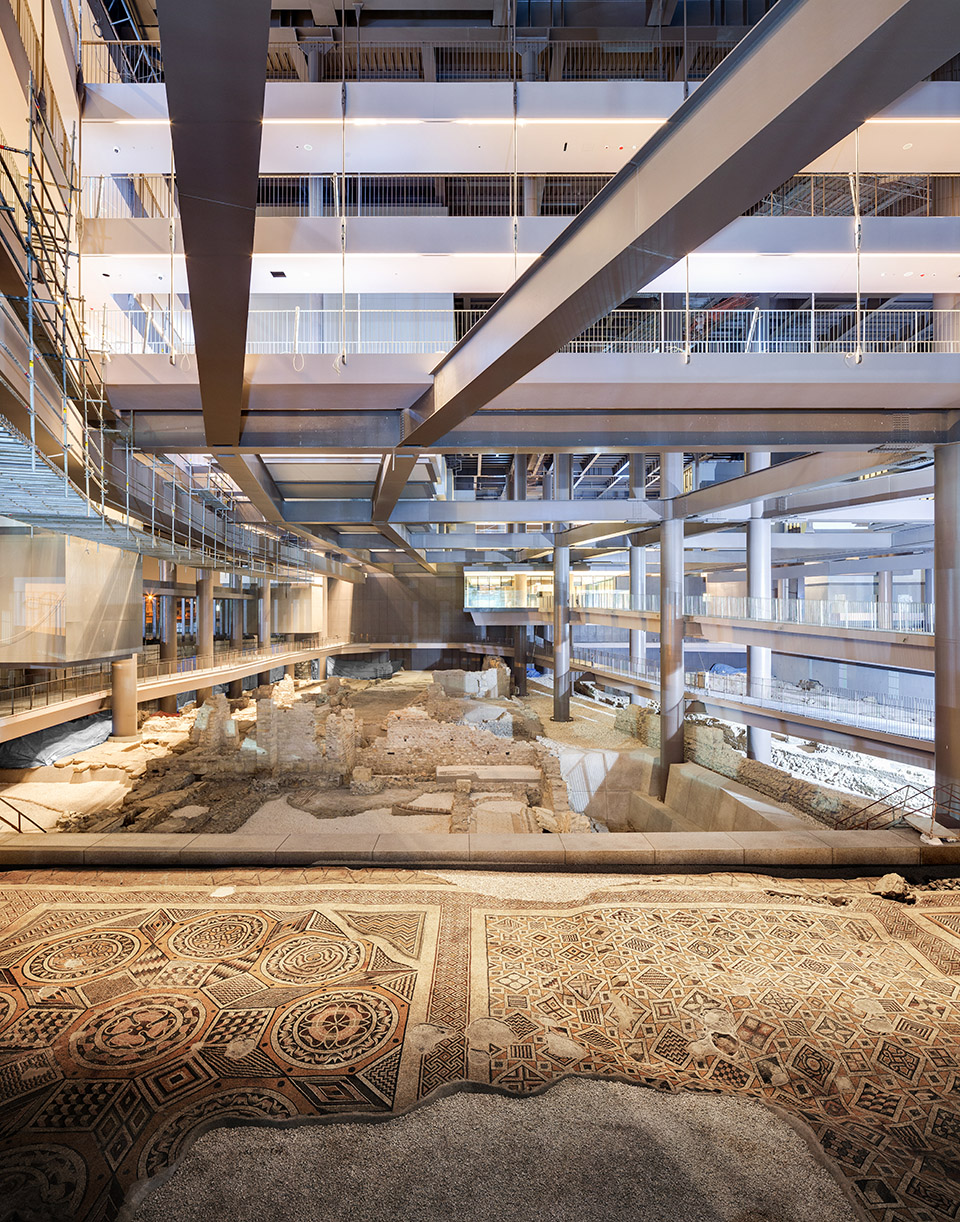
自始至终,设计的主要目标都是要让安塔基亚博物馆酒店作为一栋独特的建筑,在其所处的地理环境中产生积极的影响,同时从文化背景带来的潜力和机遇中获利。
The main objective of the design from the beginning of the process till the end was that The Museum Hotel Antakya would have a positive impact on the geography it is located as a unique building that at the same time benefits from the potentials and opportunities of the context.
▼酒店夜景,hotel in the night ©Emre Dörter
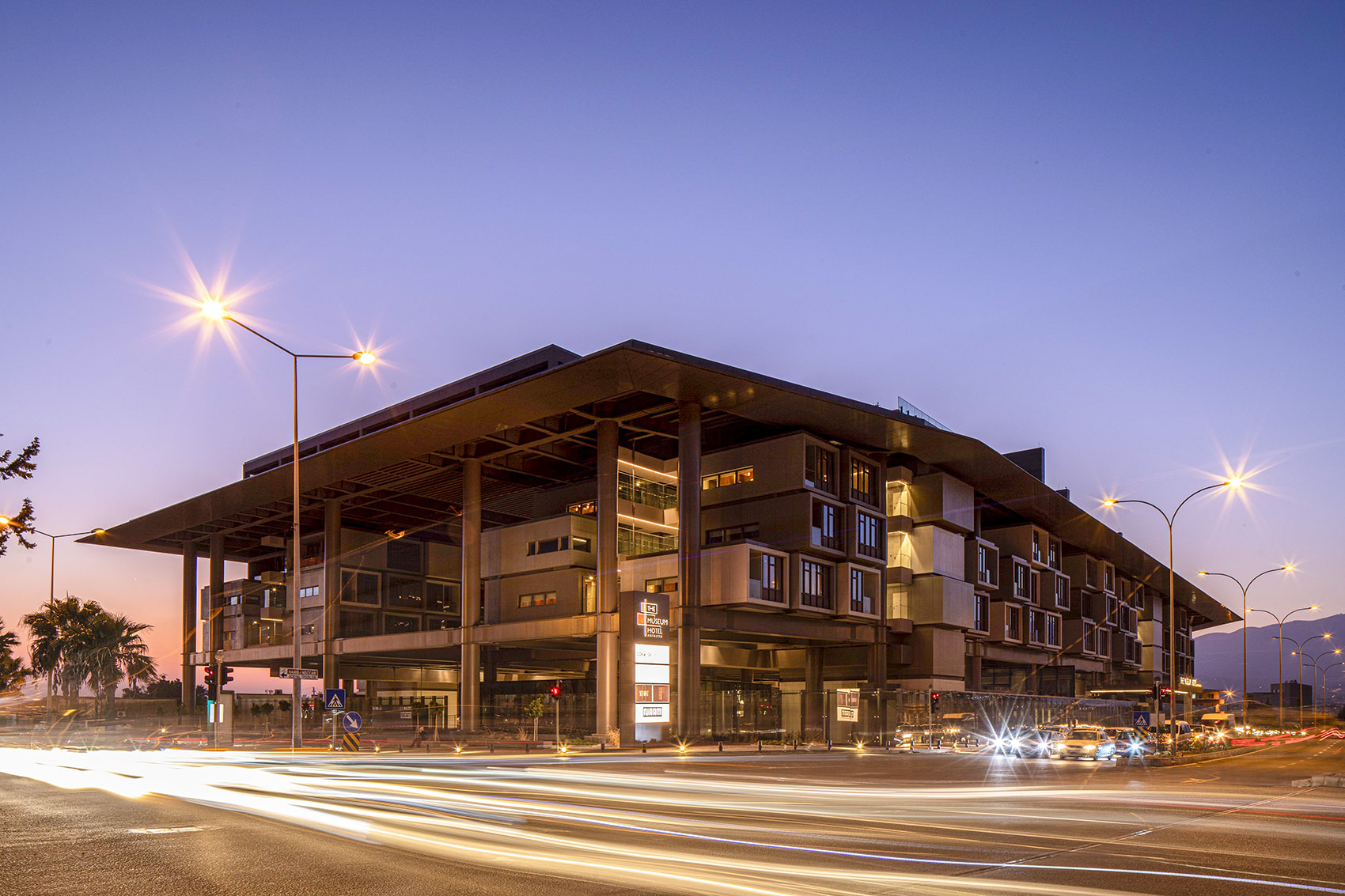
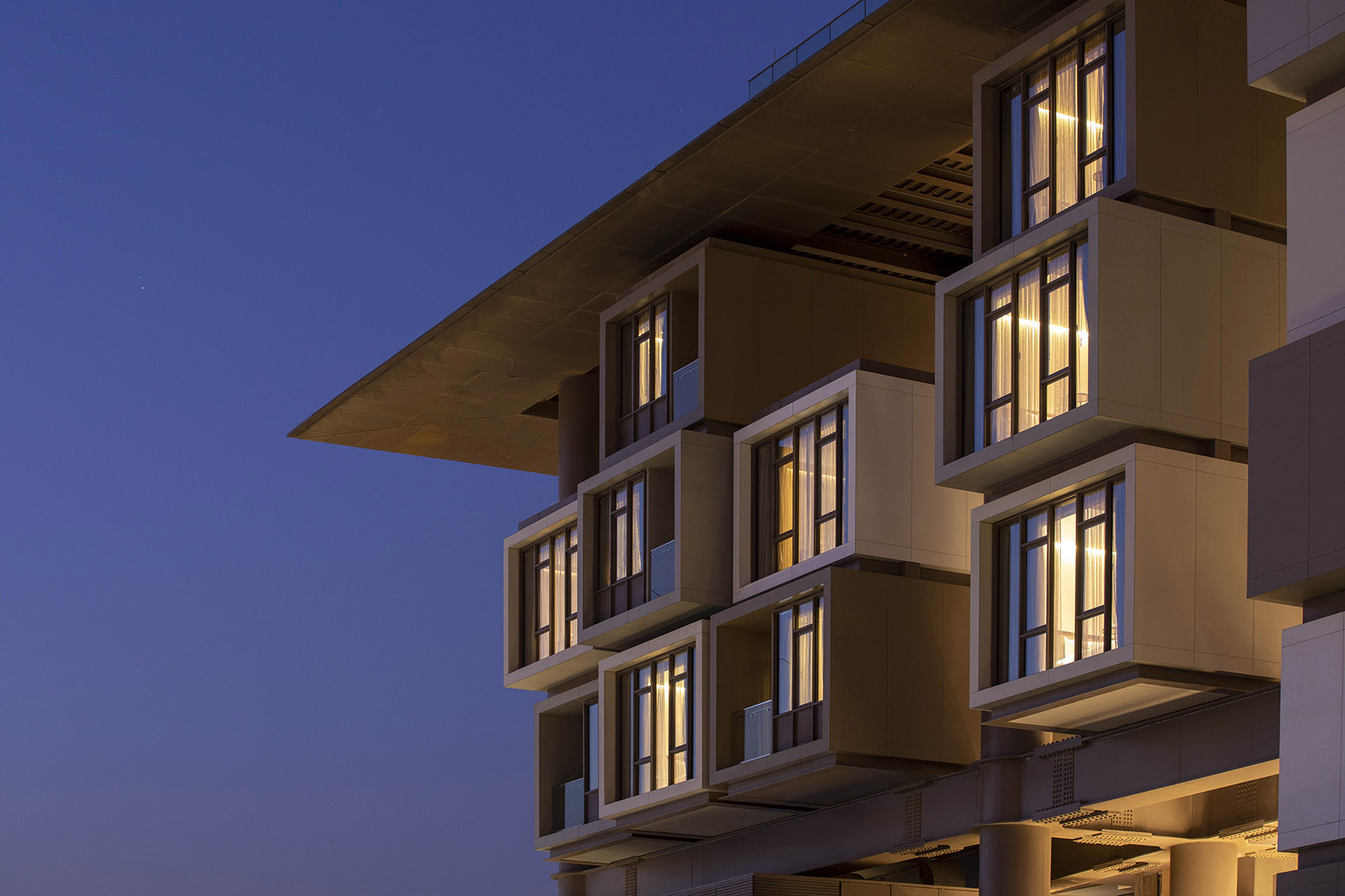
▼总平面图,site plan ©EAA
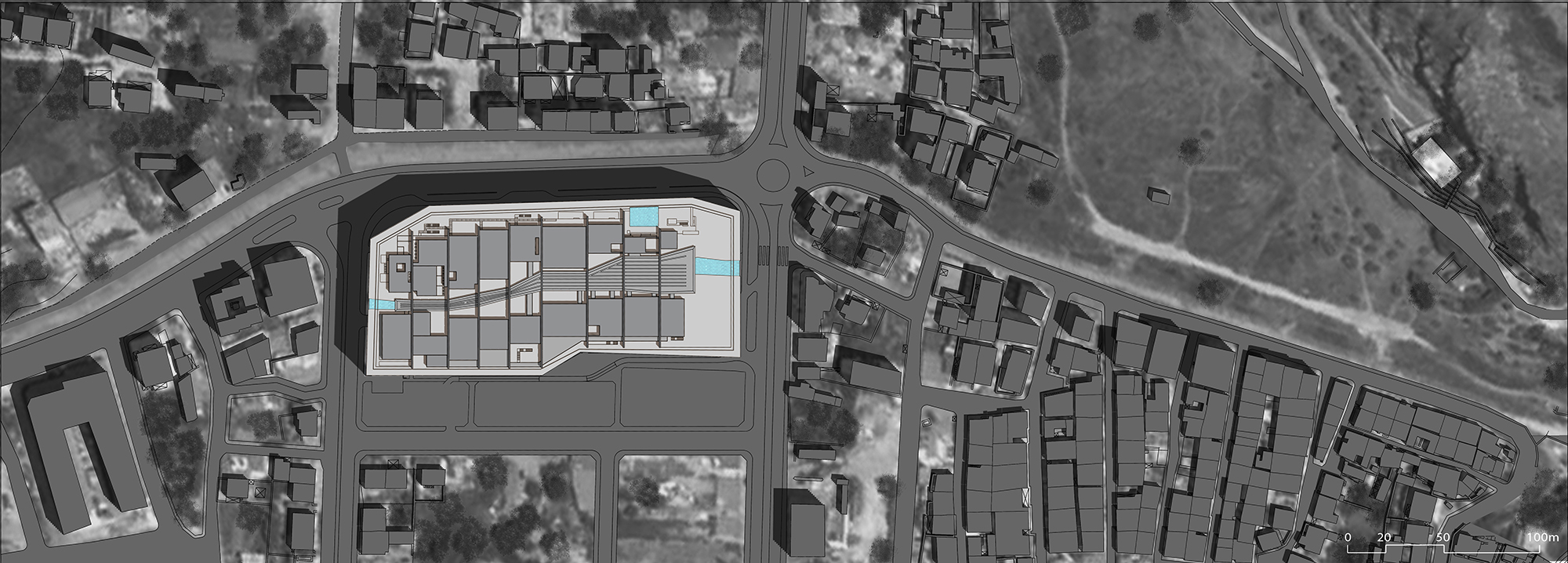
▼考古基地上方10米层平面图,floor plan of the level 10 meters above the archaeology site ©EAA
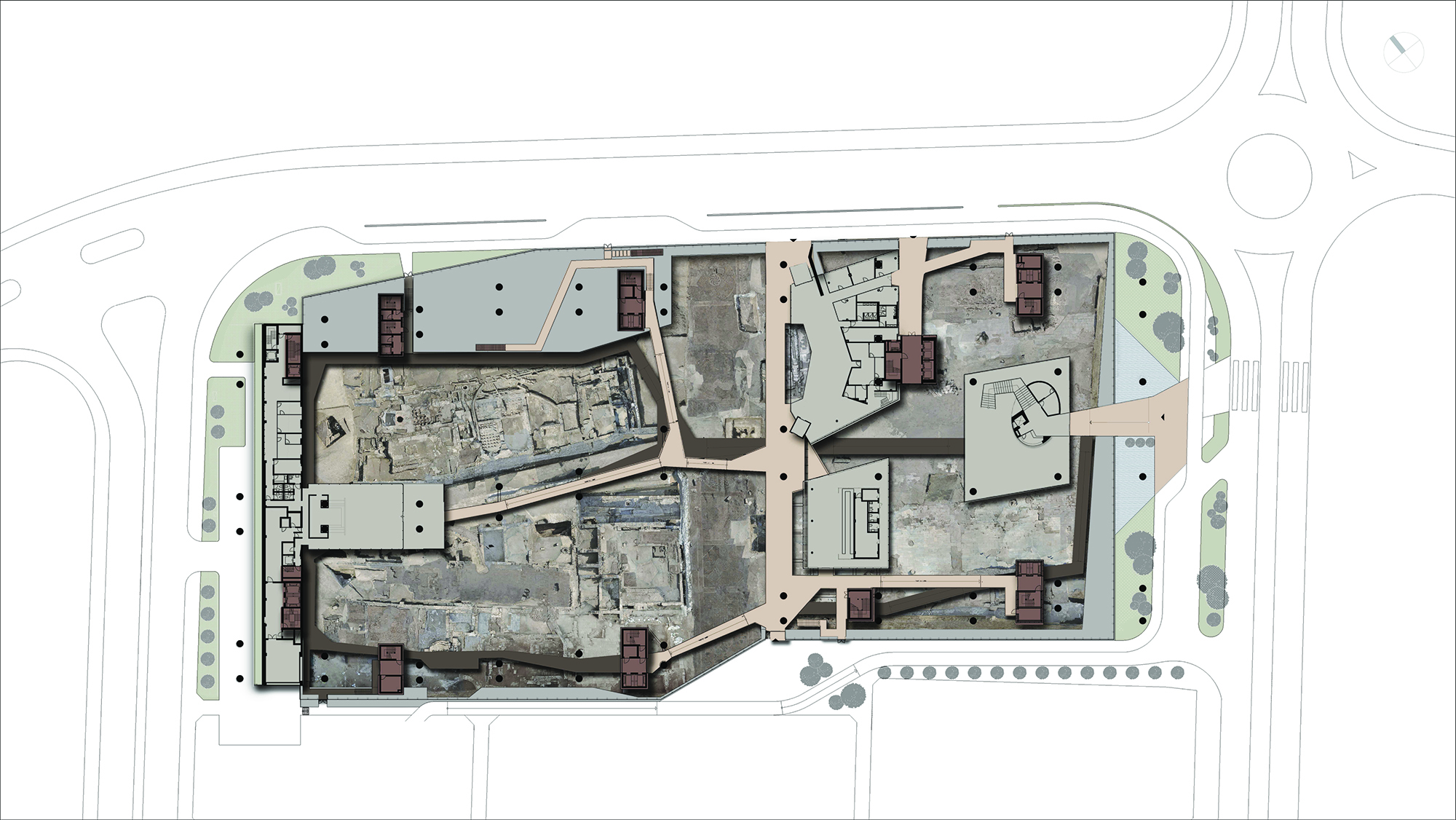
▼考古基地上方15米层平面图,floor plan of the level 15 meters above the archaeology site ©EAA
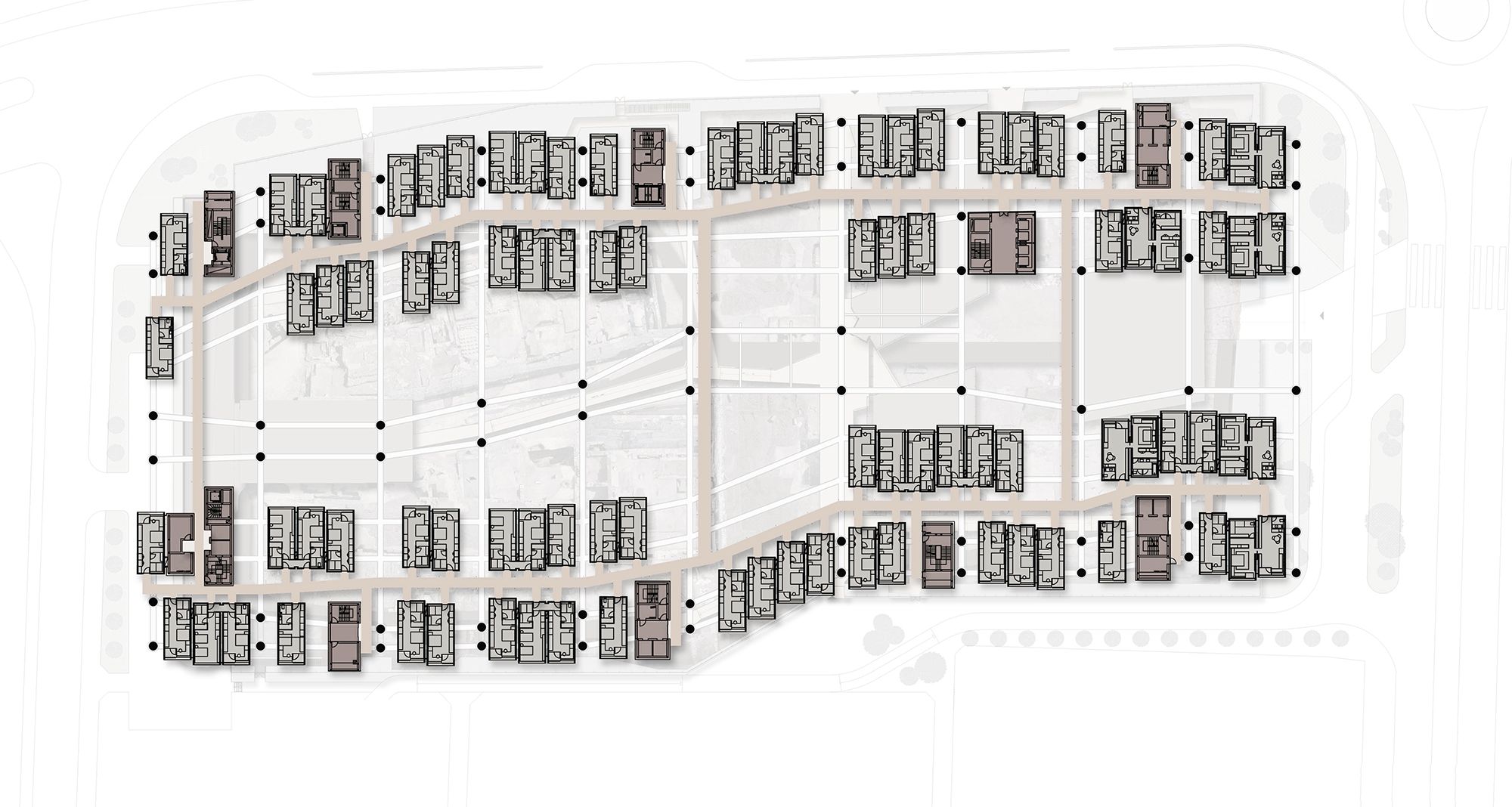
▼考古基地上方25米层平面图,floor plan of the level 25 meters above the archaeology site ©EAA
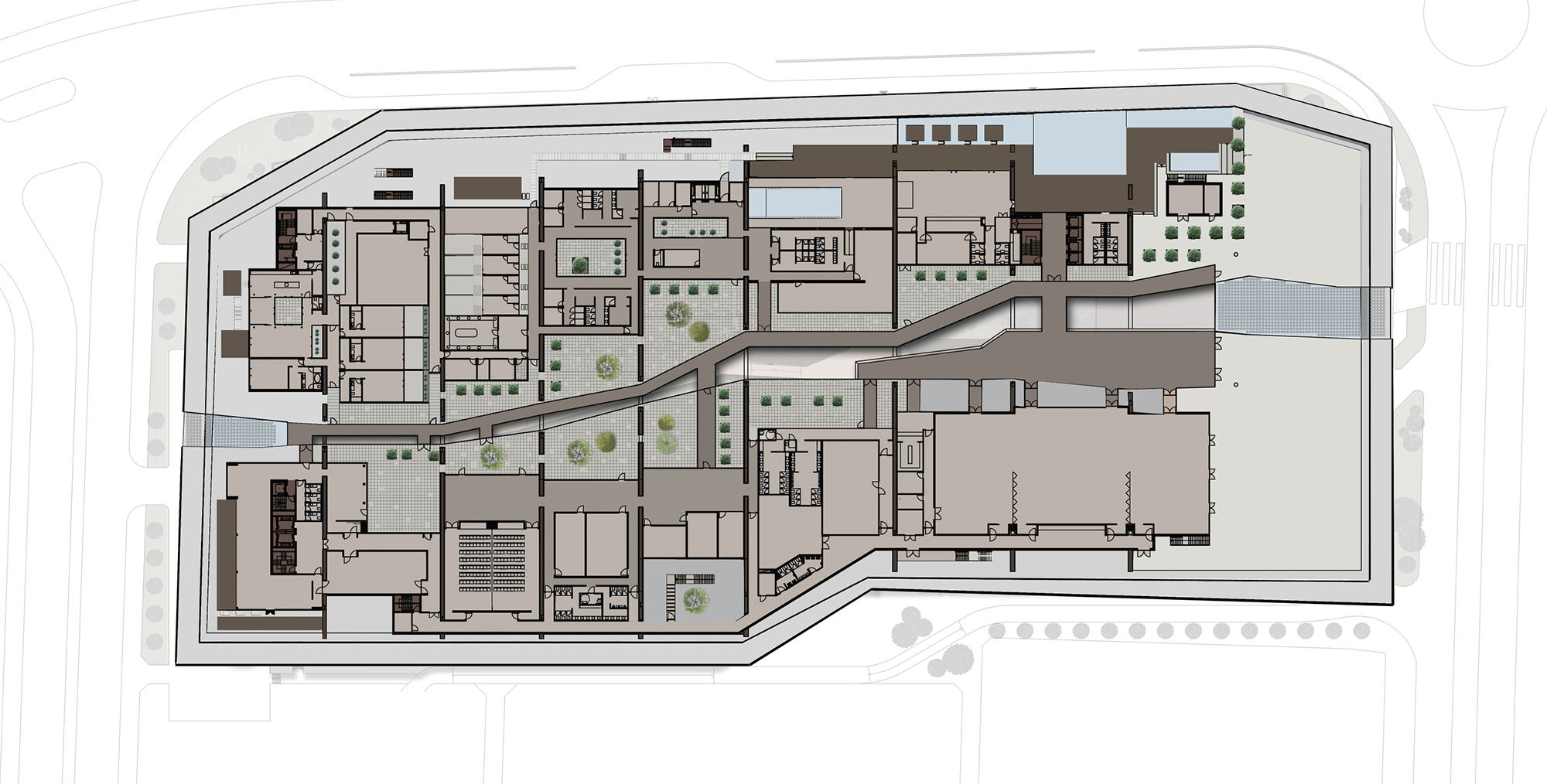
▼剖面图,section ©EAA
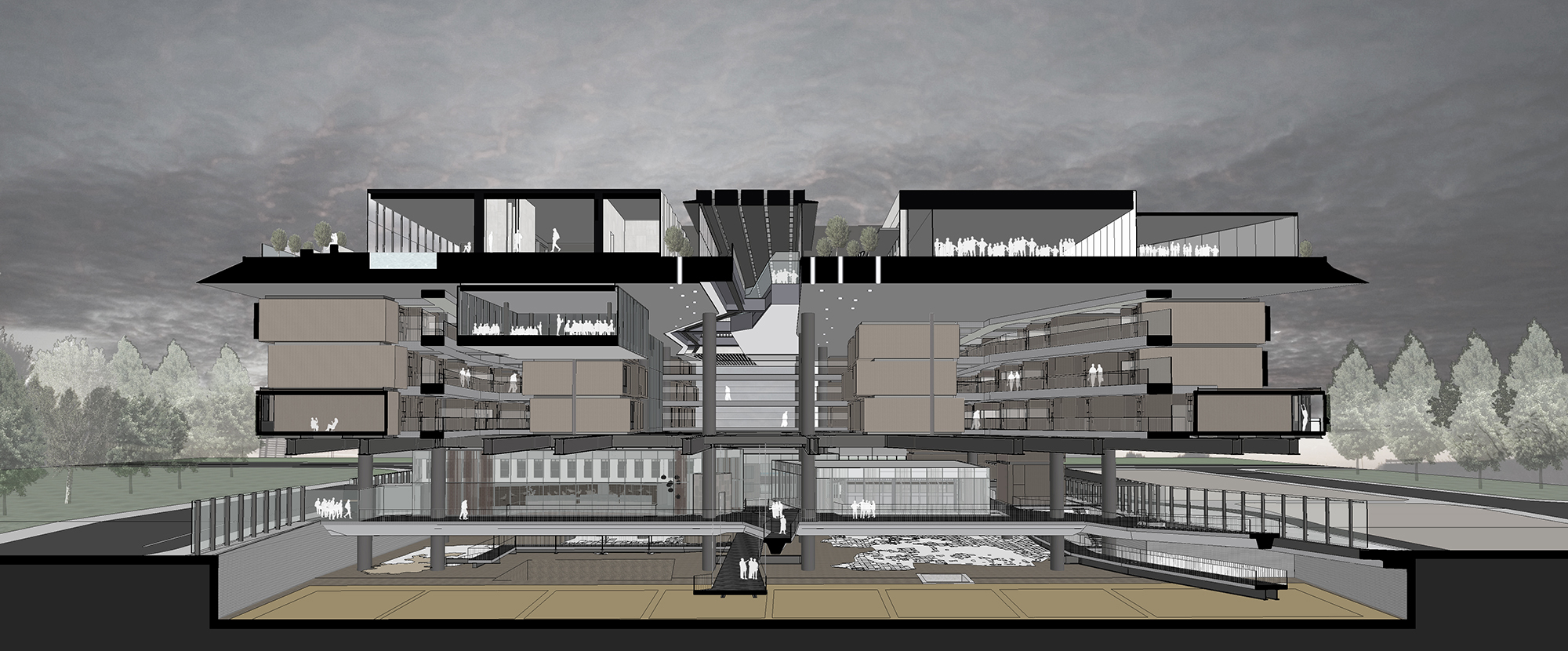
▼细部,details ©EAA
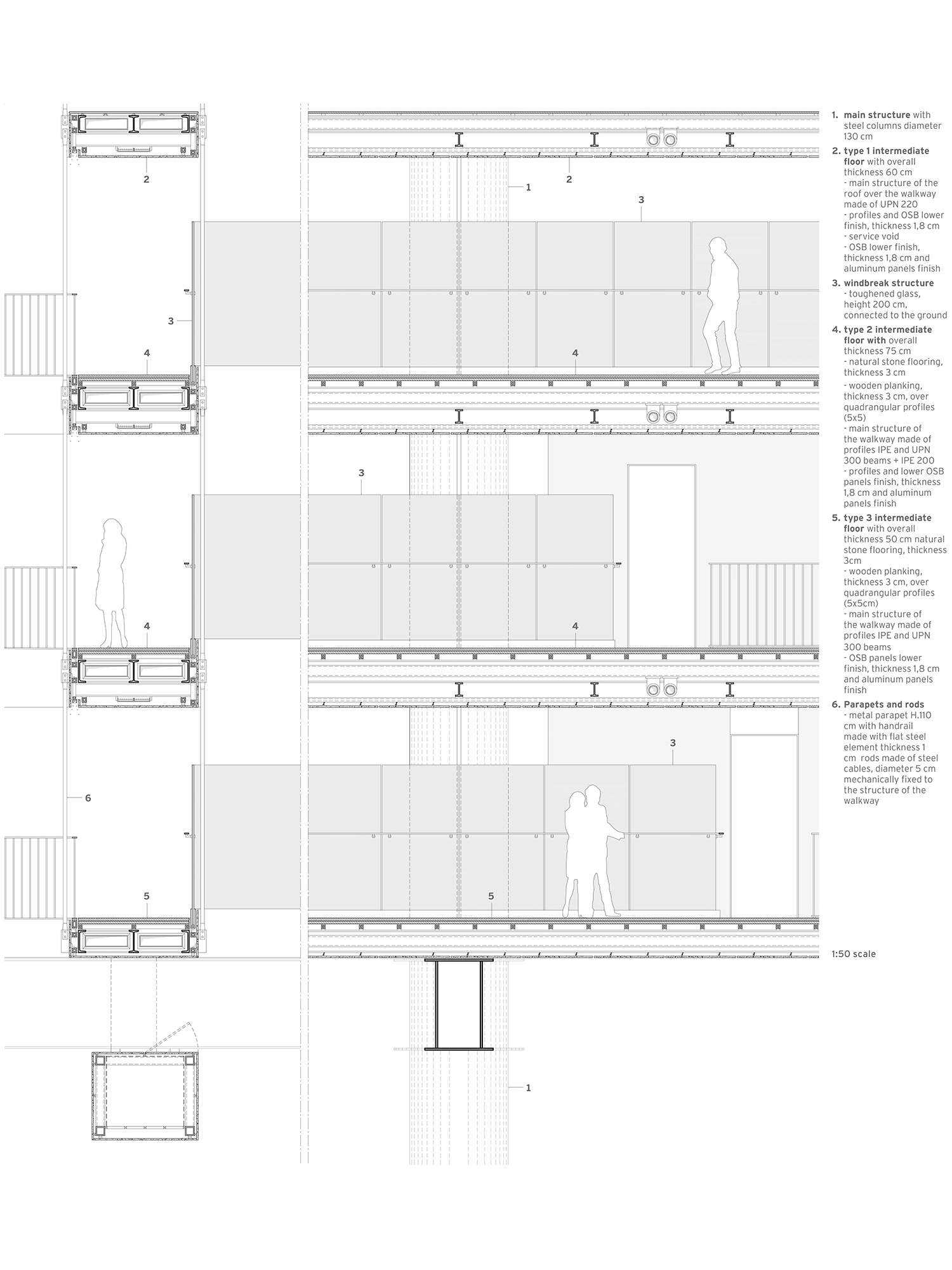
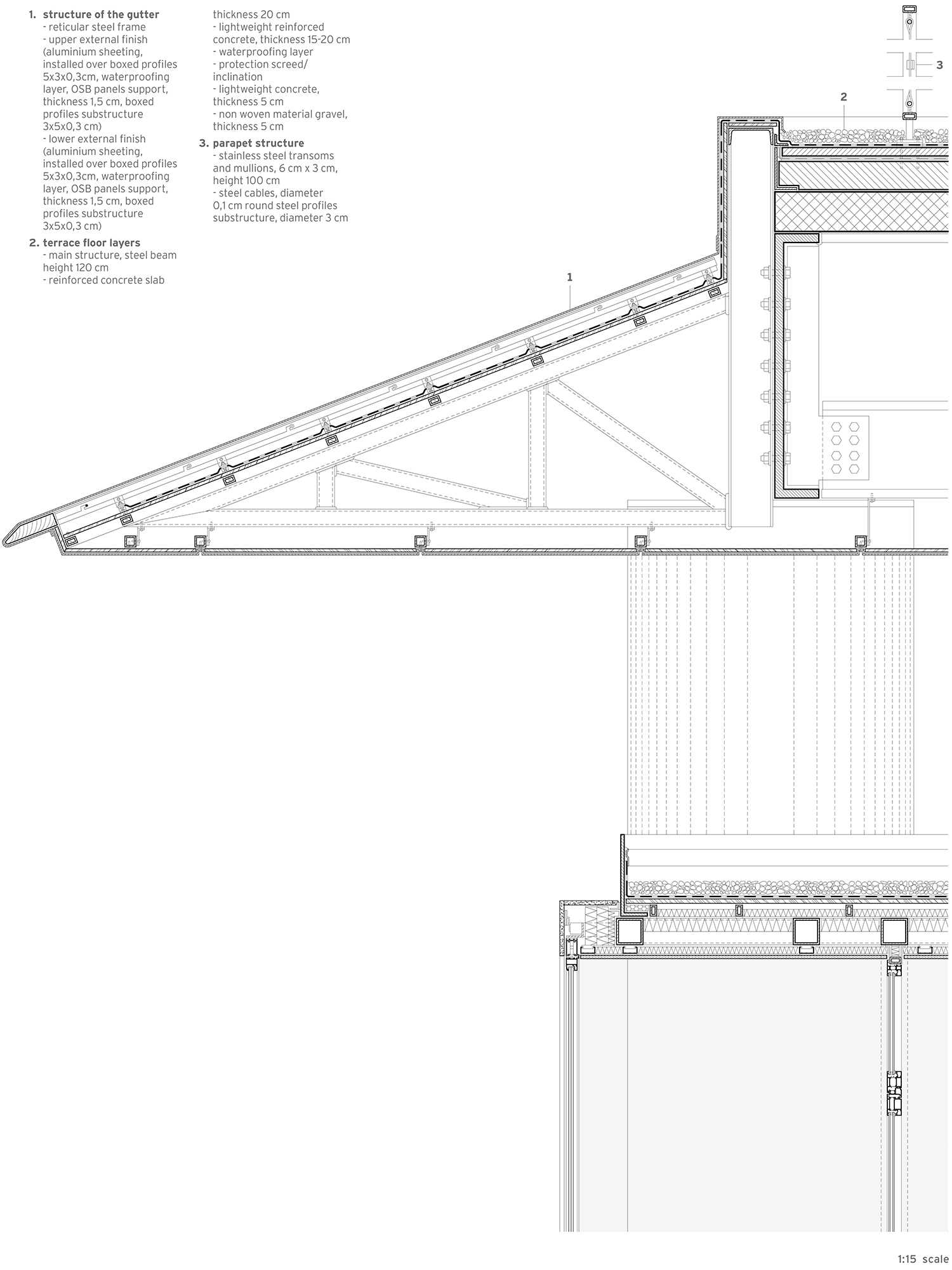
▼项目更多图片

